Hi all,
I'd like to share a video I just took of my full size Lost in Space B9 robot that's controlled by two EZ-B controller boards. Right now they are controlling limited movement and voice response of a few motors, lights and sound files played from a Sparkfun MP3 Trigger board. Although I'm just starting with the animation and have more building on the actual robot the result (mostly thanks to the EZ Robot controller board) is shocking. Please have a look at this (4 minute) You Tube vid and enjoy.
Please excuse some Technical camera lighting and sound issues. This is the first time I'd made and posted a vid online.
EDIT 8/2/13: Just realized I have no good pictures of how my B9 will look when complete. Here's one of the actual TV robots from the 60's TZ show Lost in Space and one recent shot of where I'm at with my build over 1 1/2 year after I started. Enjoy:
Thanks, Dave Schulpius
Other robots from Synthiam community

DJ's So, I Taught Jd How To Play The Piano

DJ's Scarab Creepy Robot
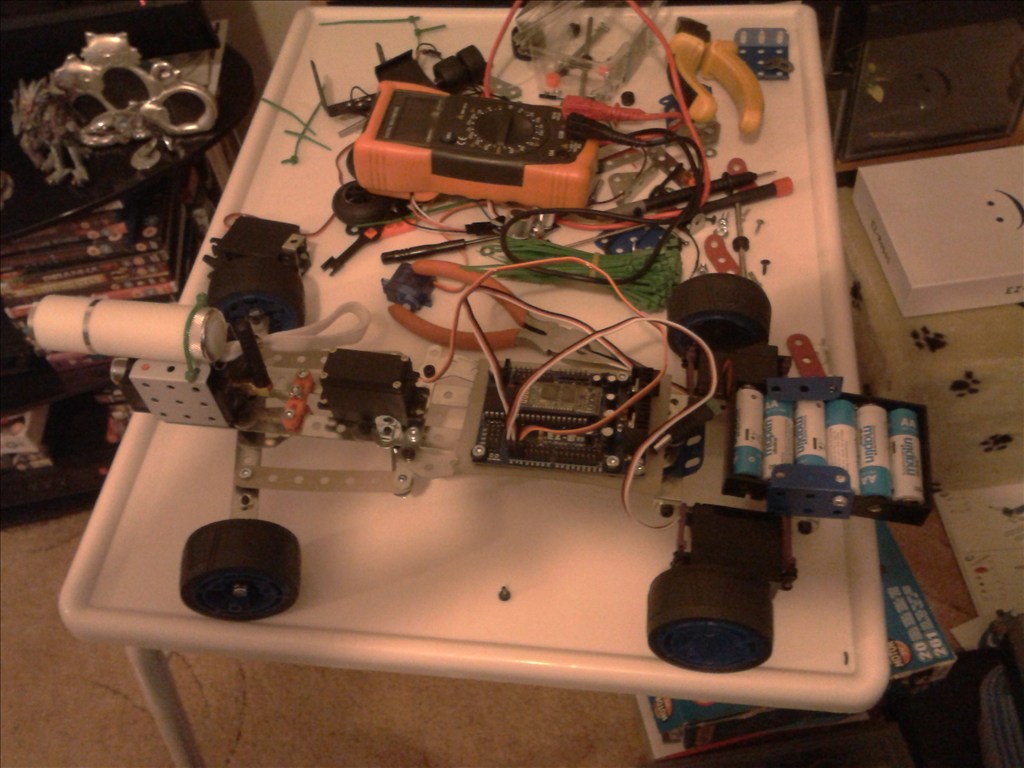


















































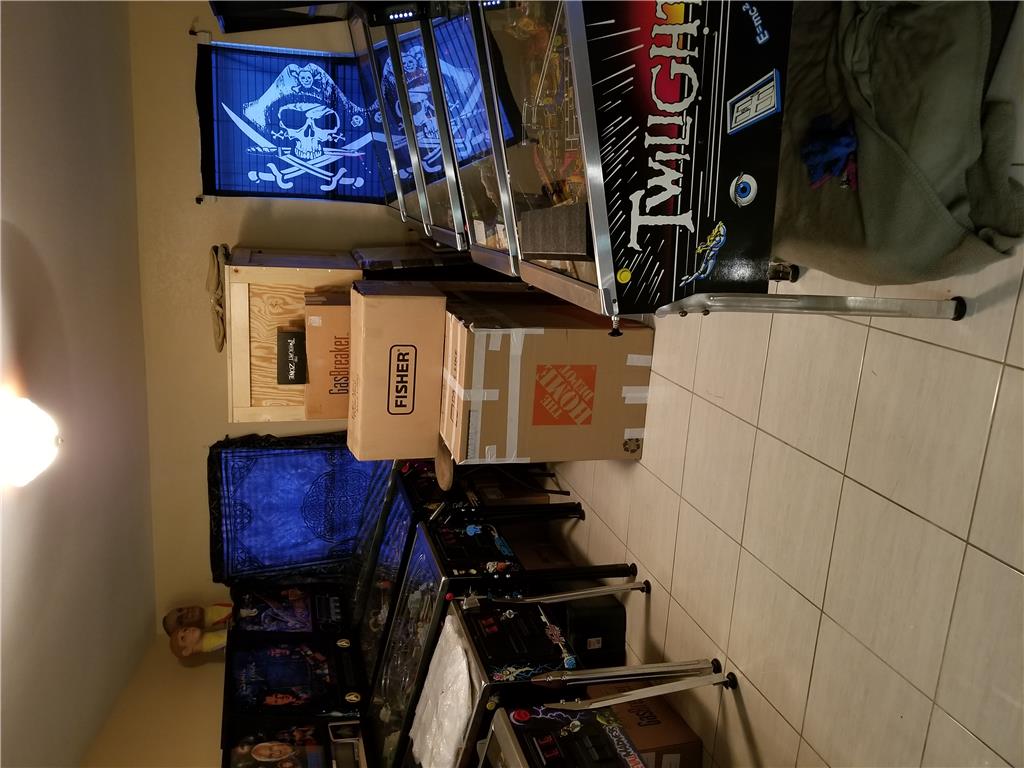
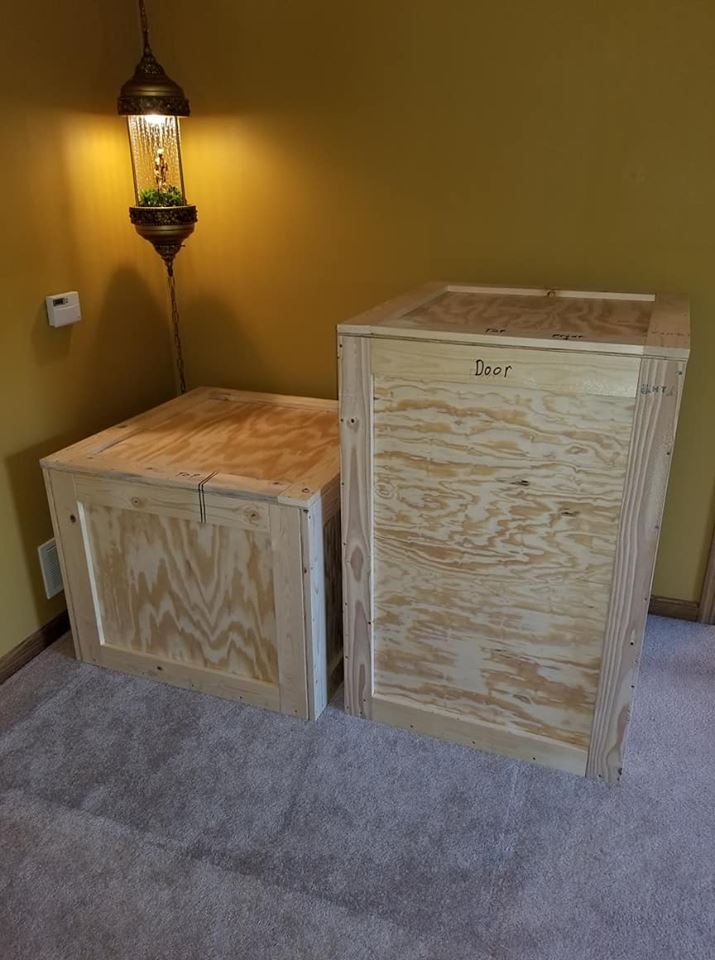
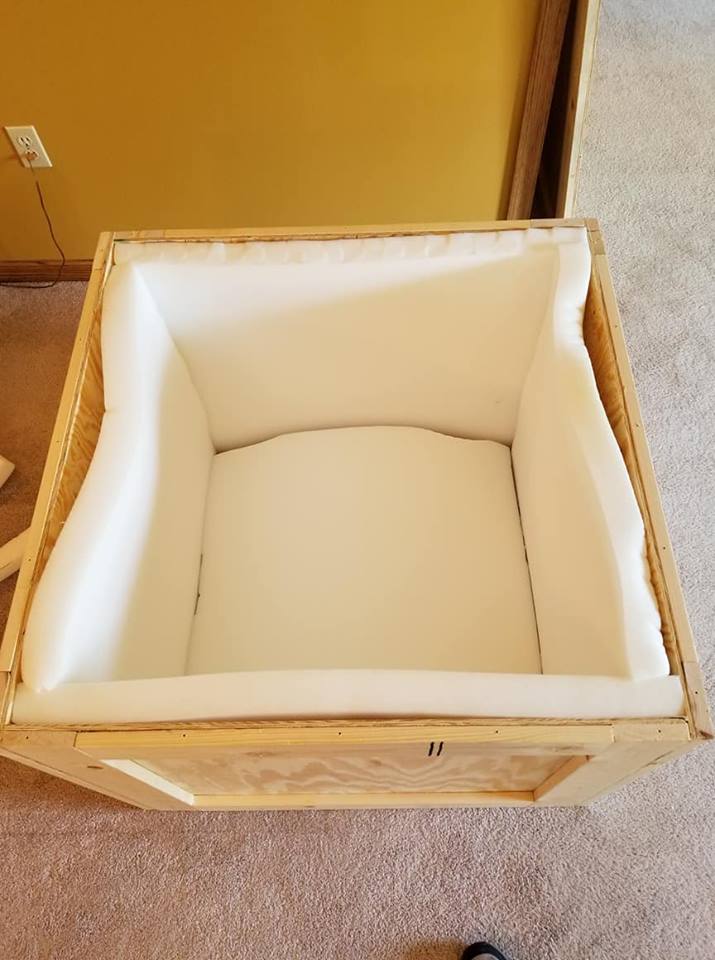
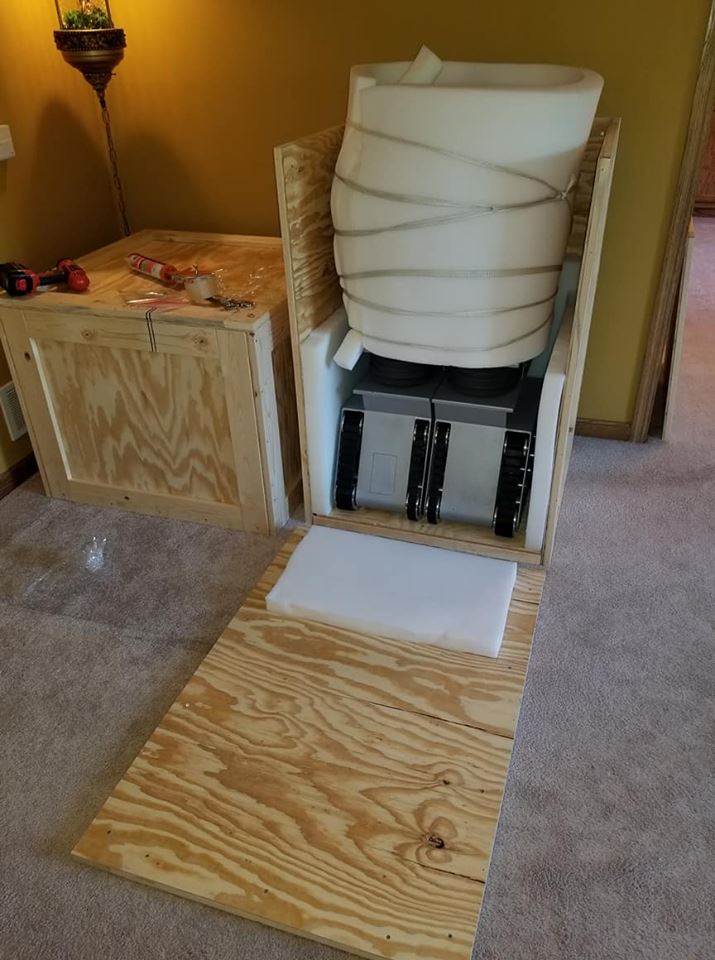
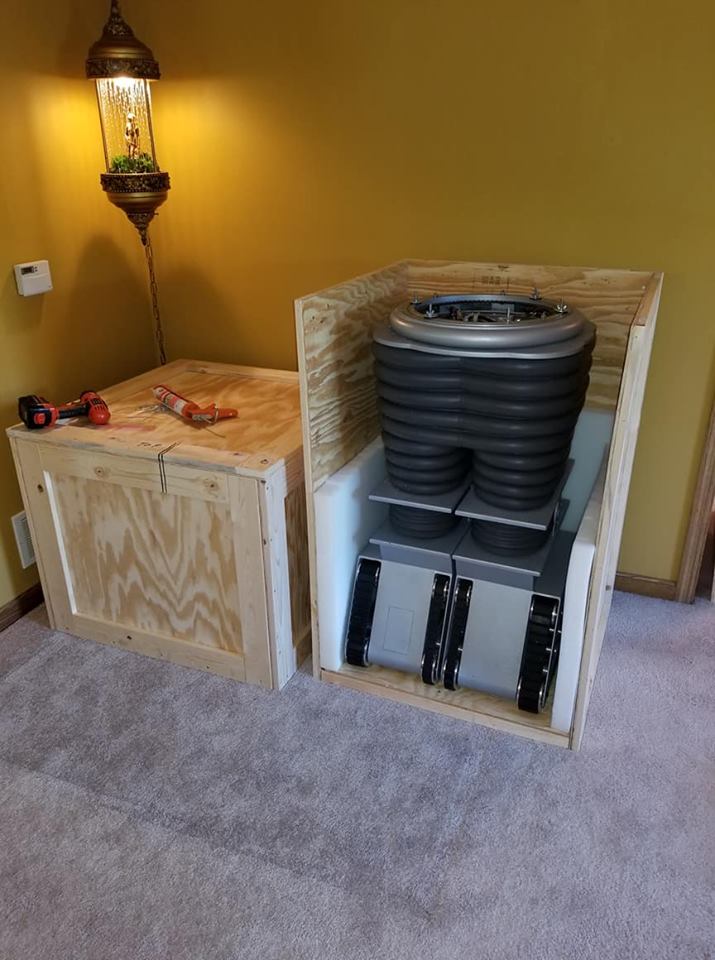
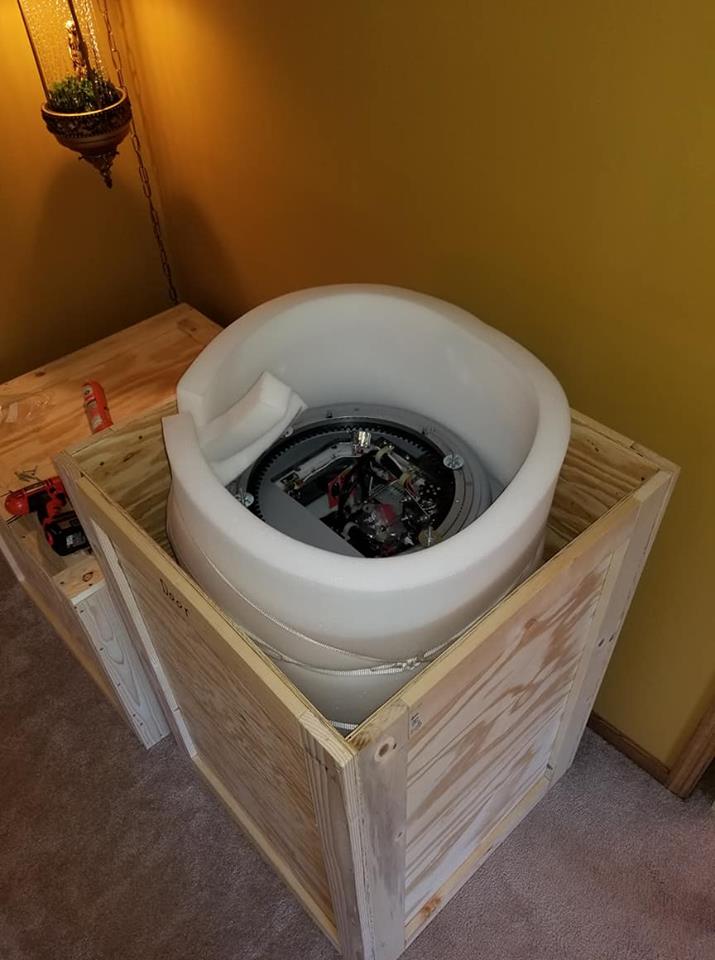
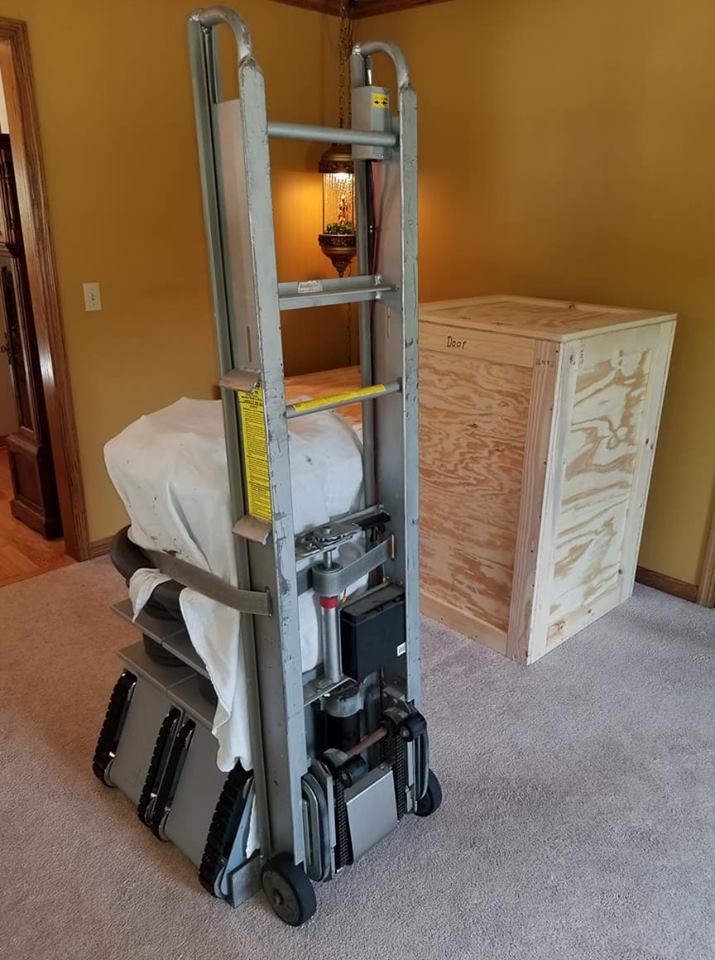
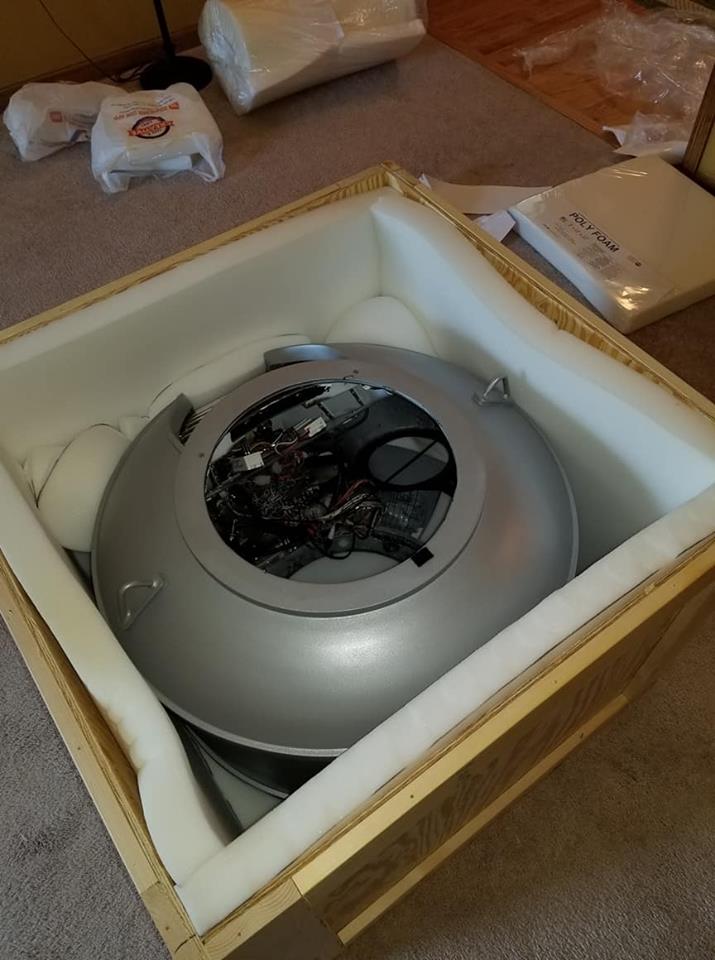
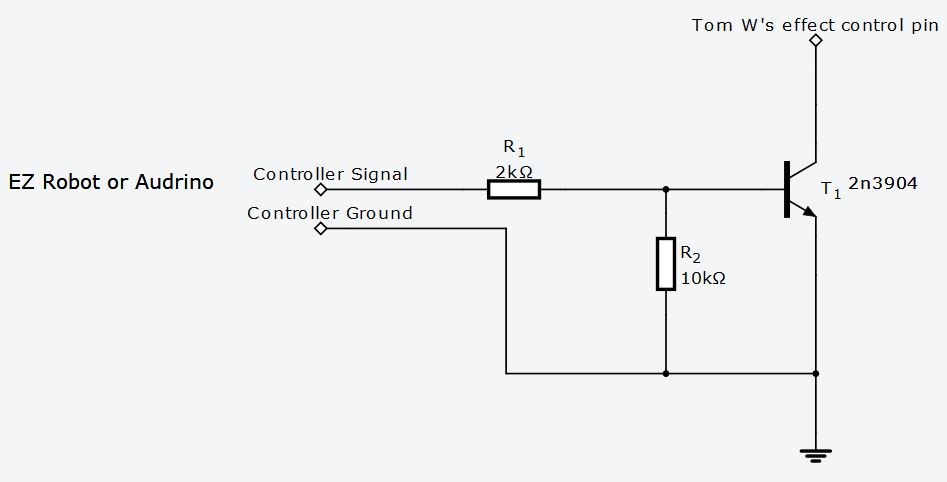


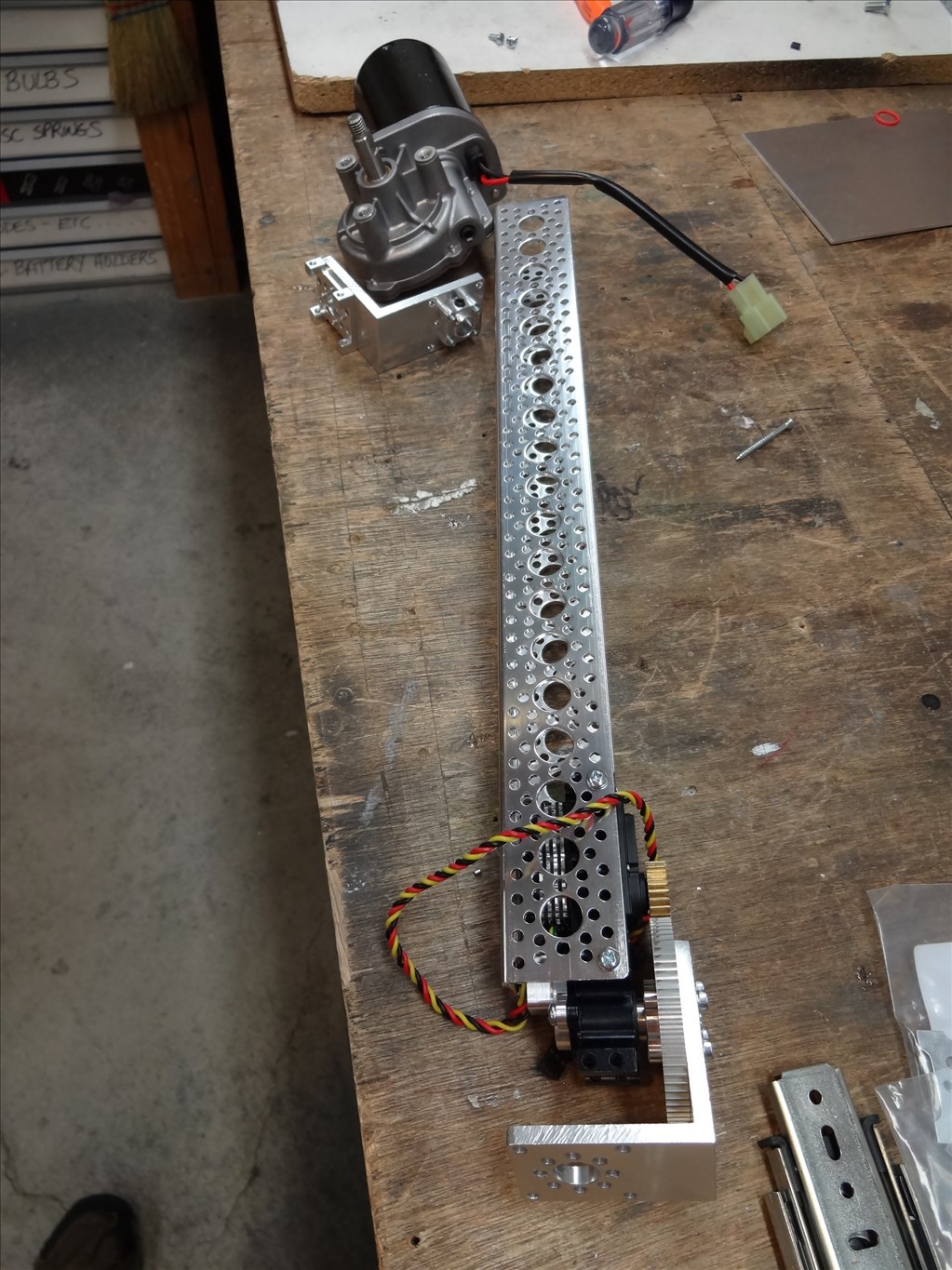
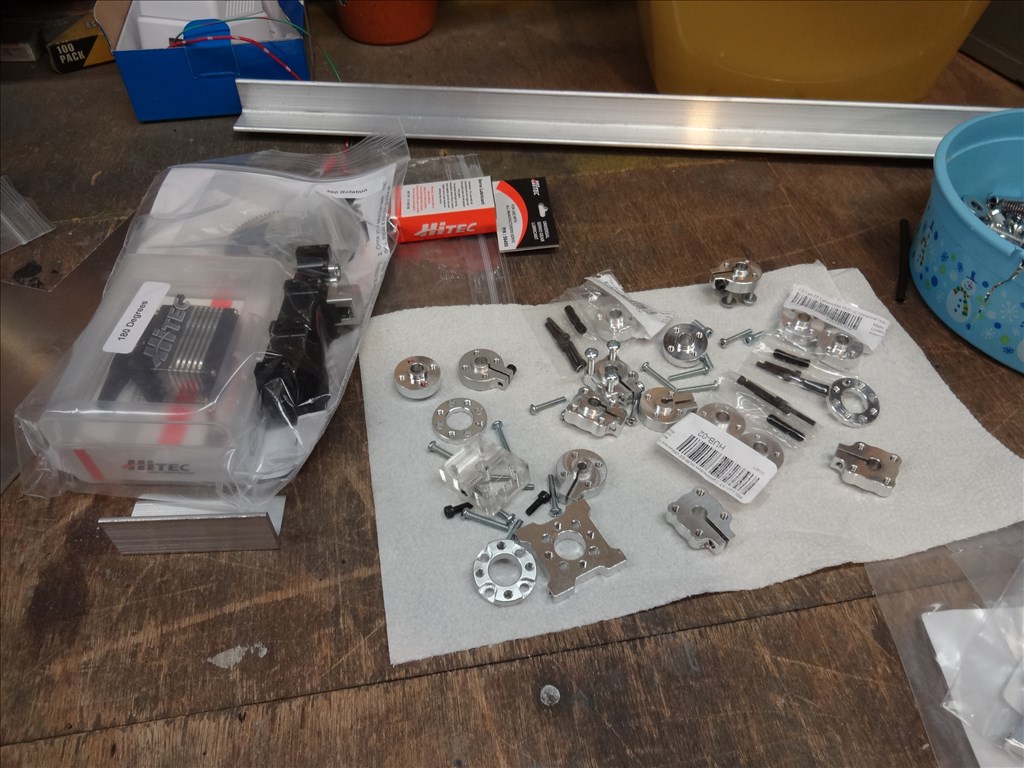
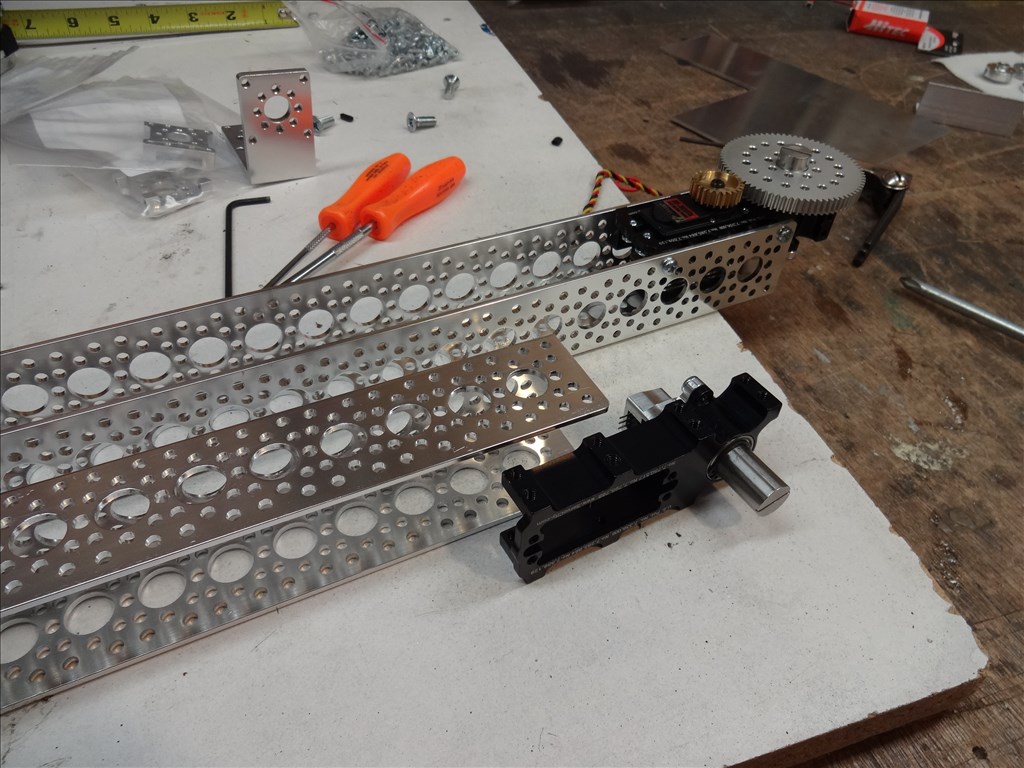
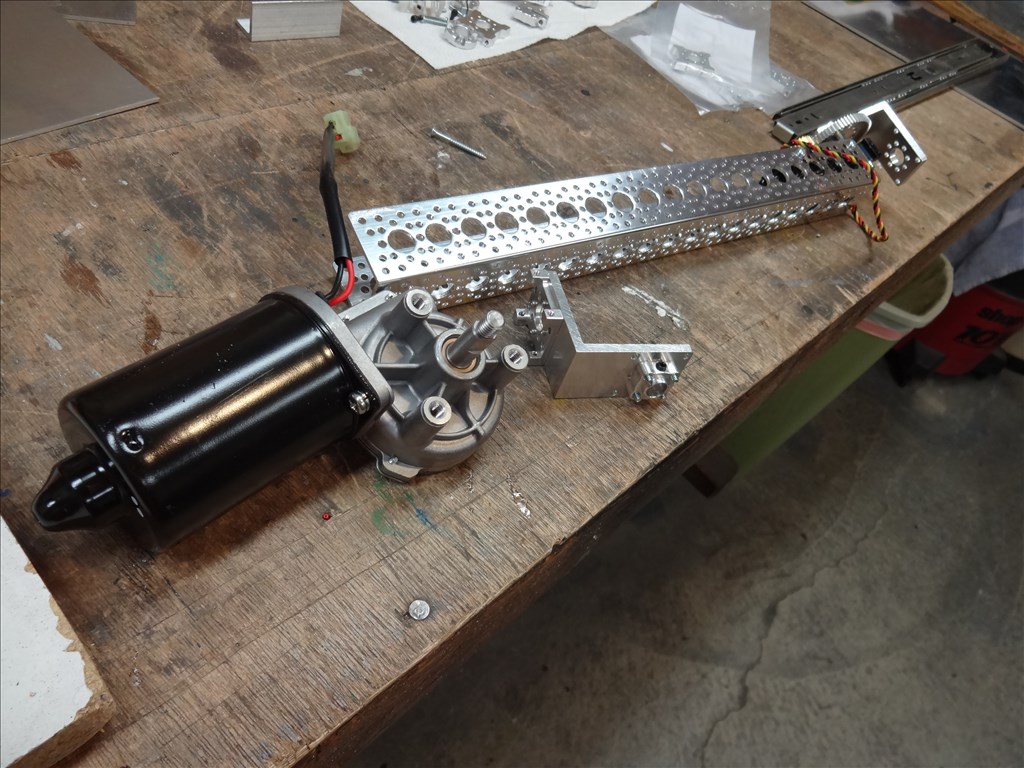
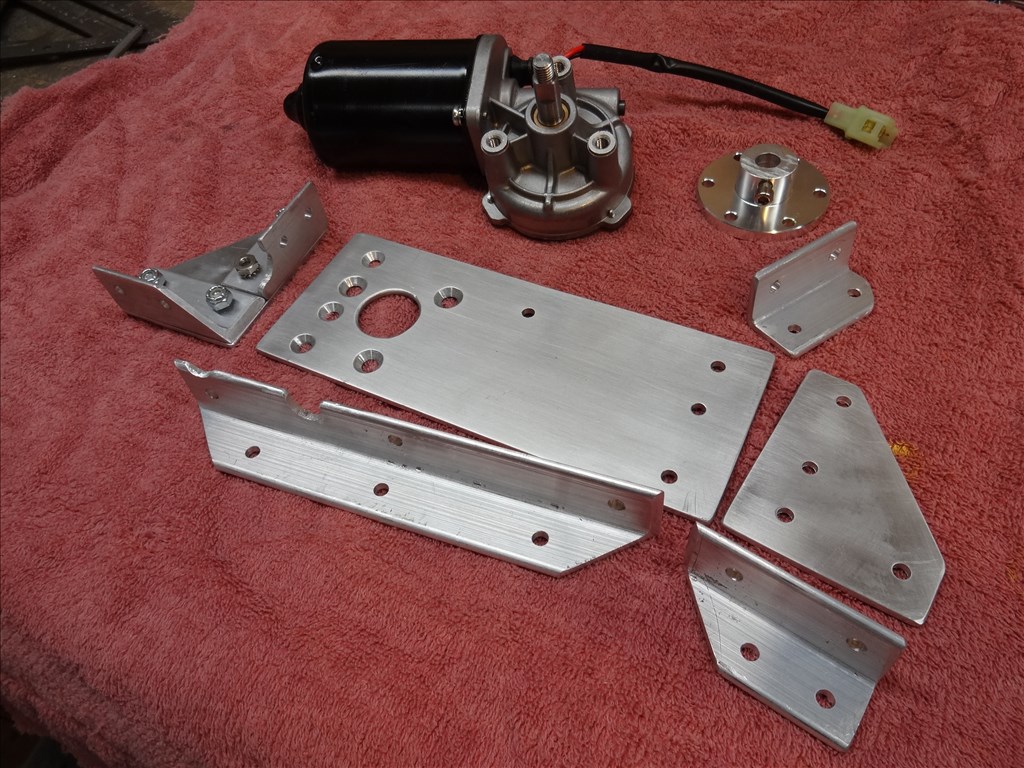
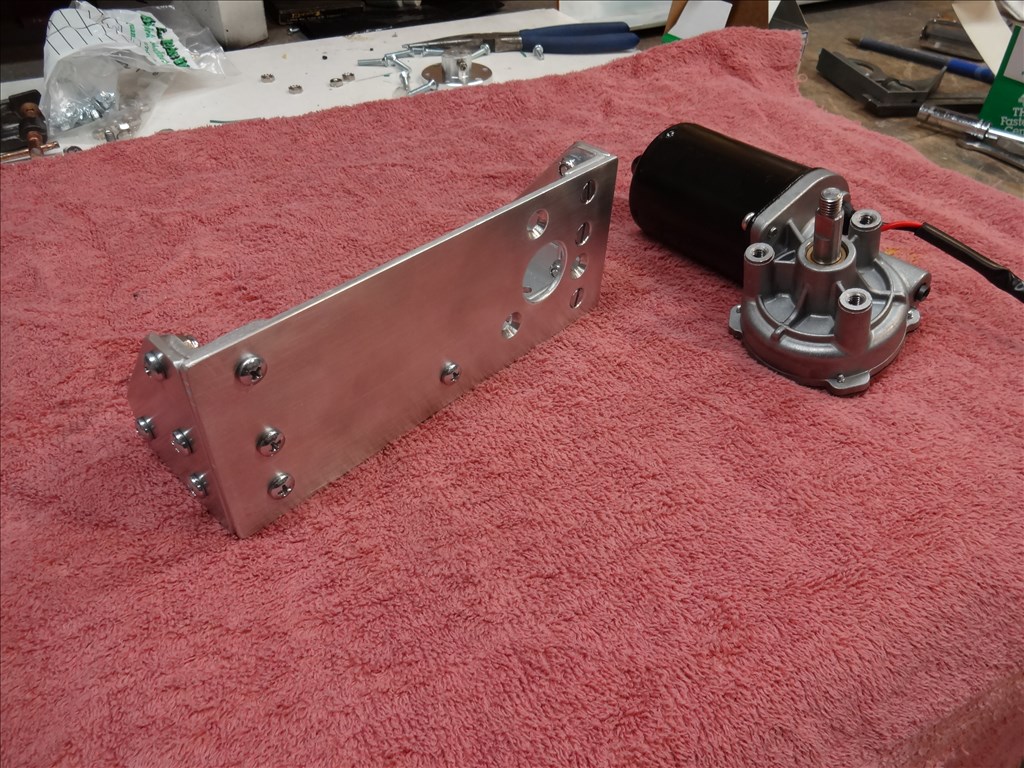
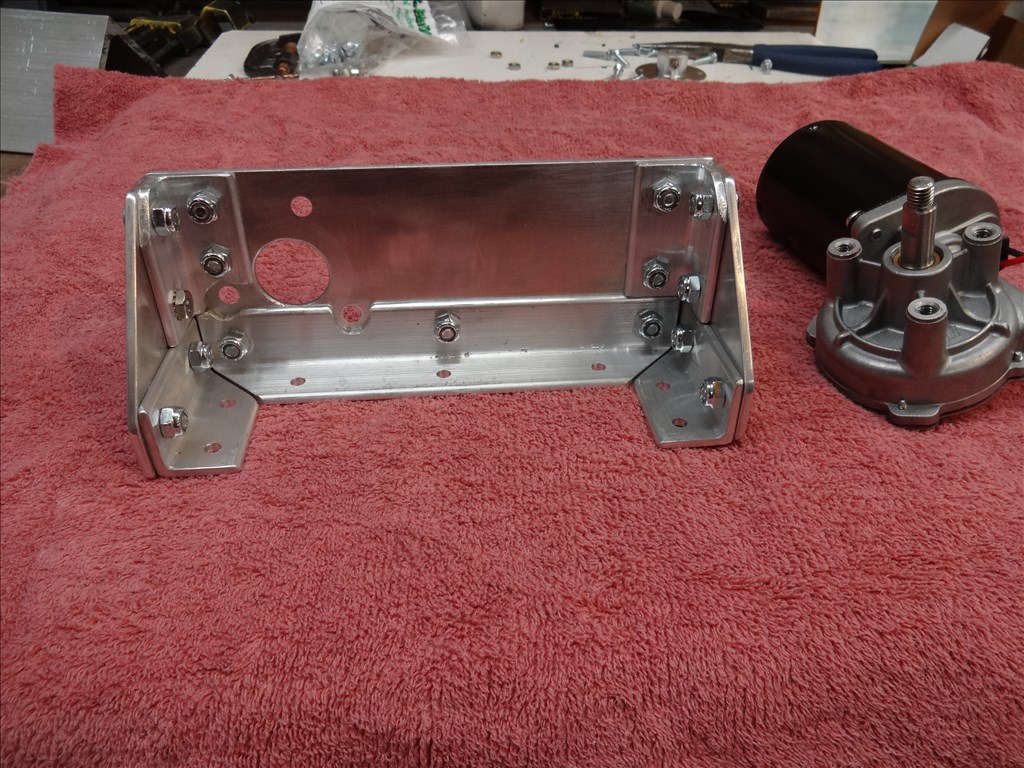
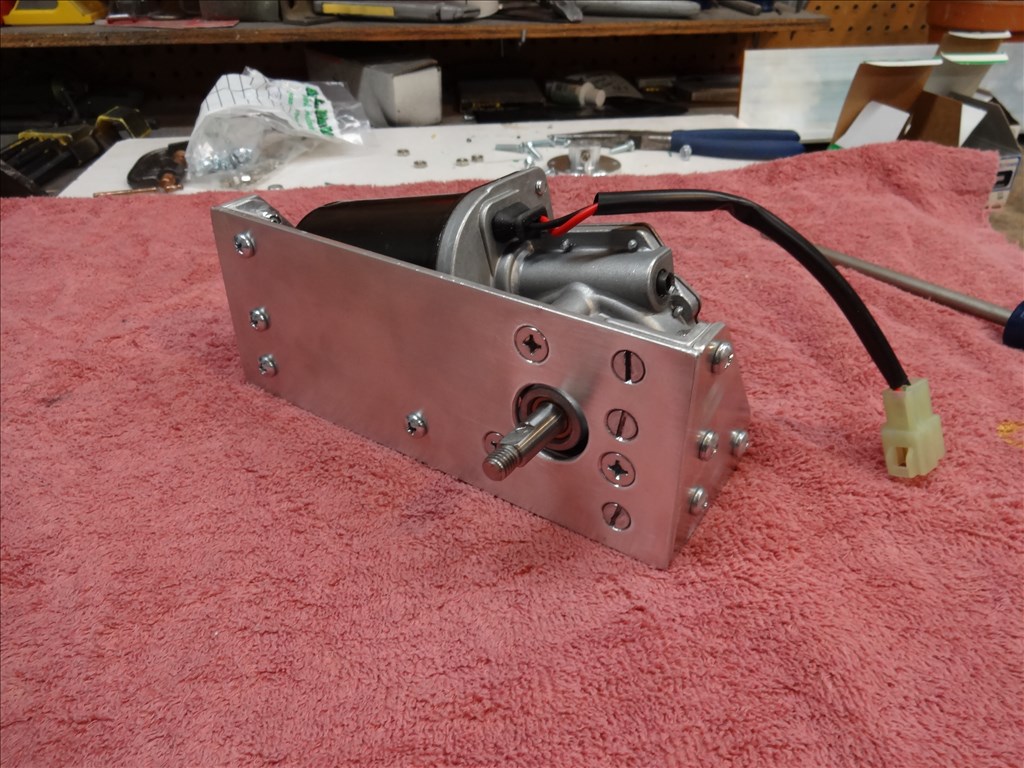
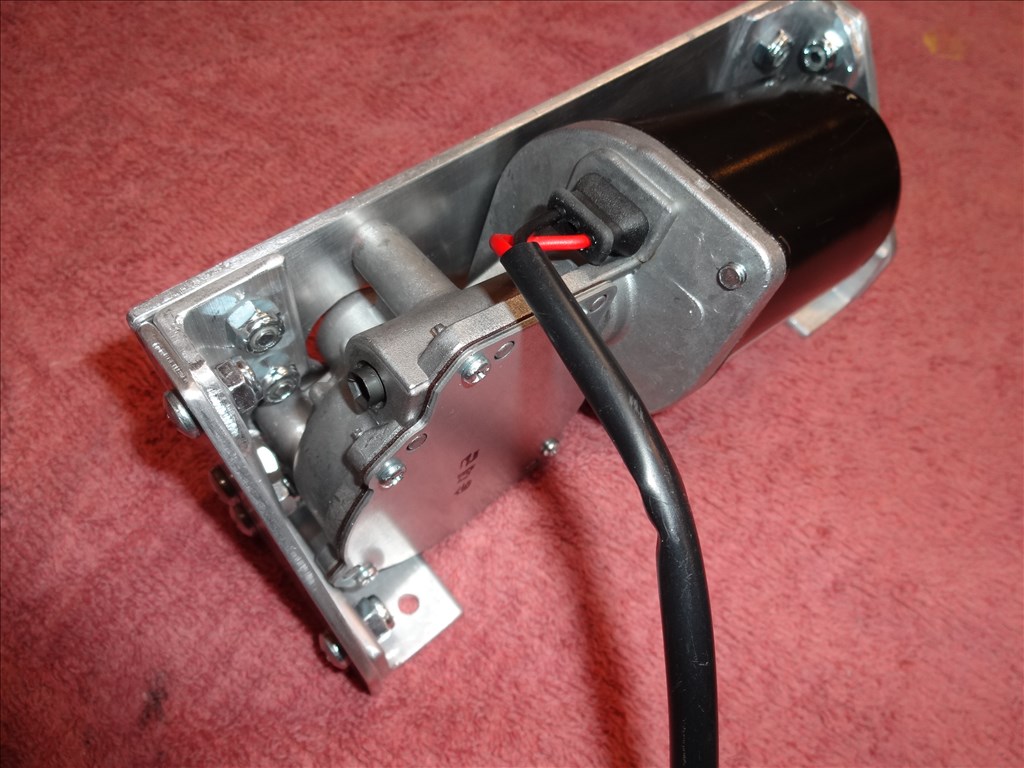
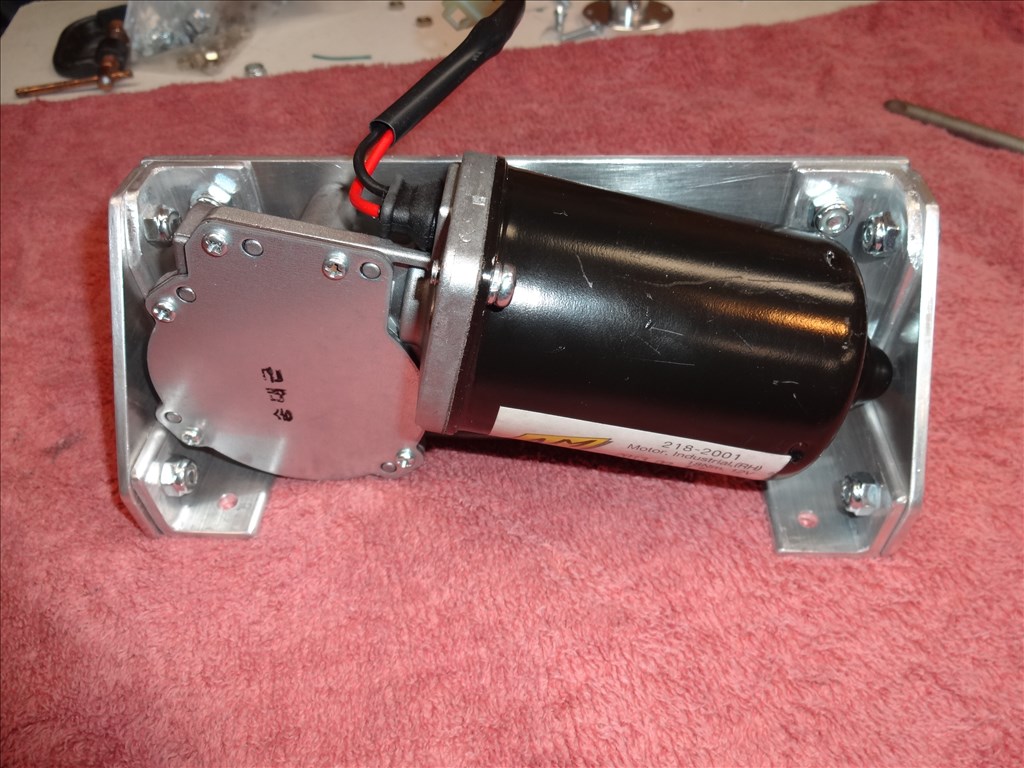
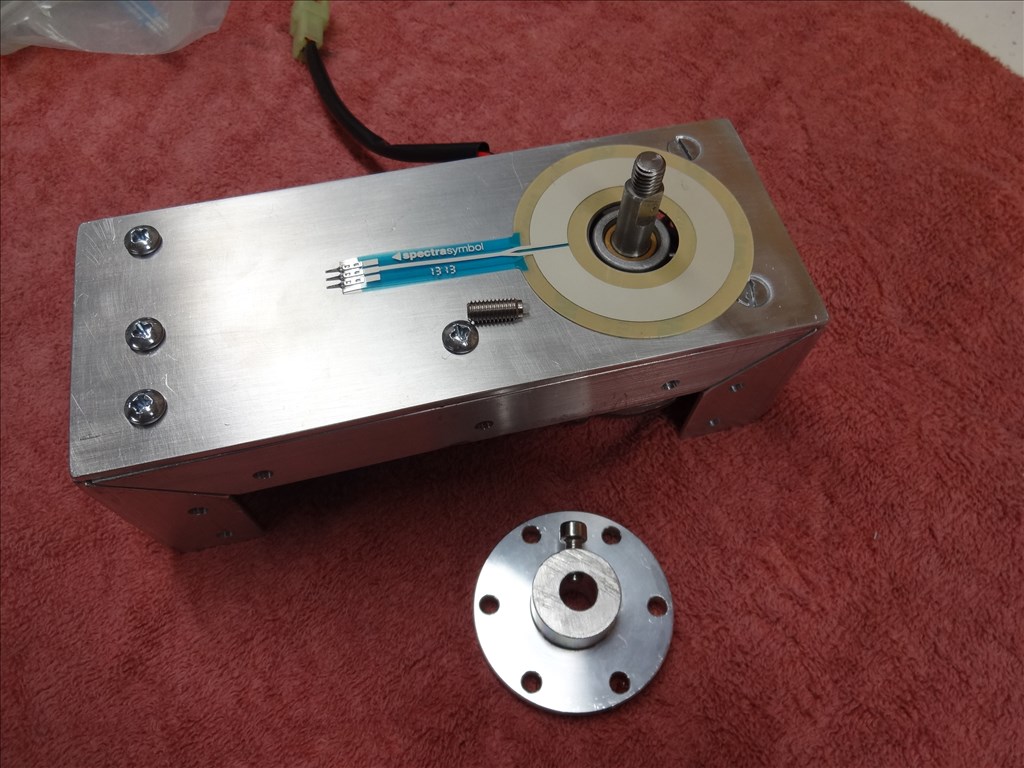


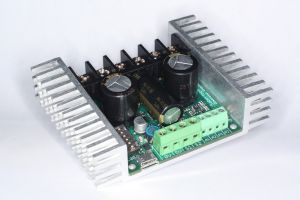
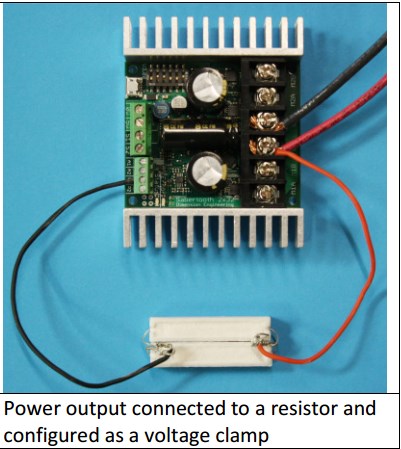



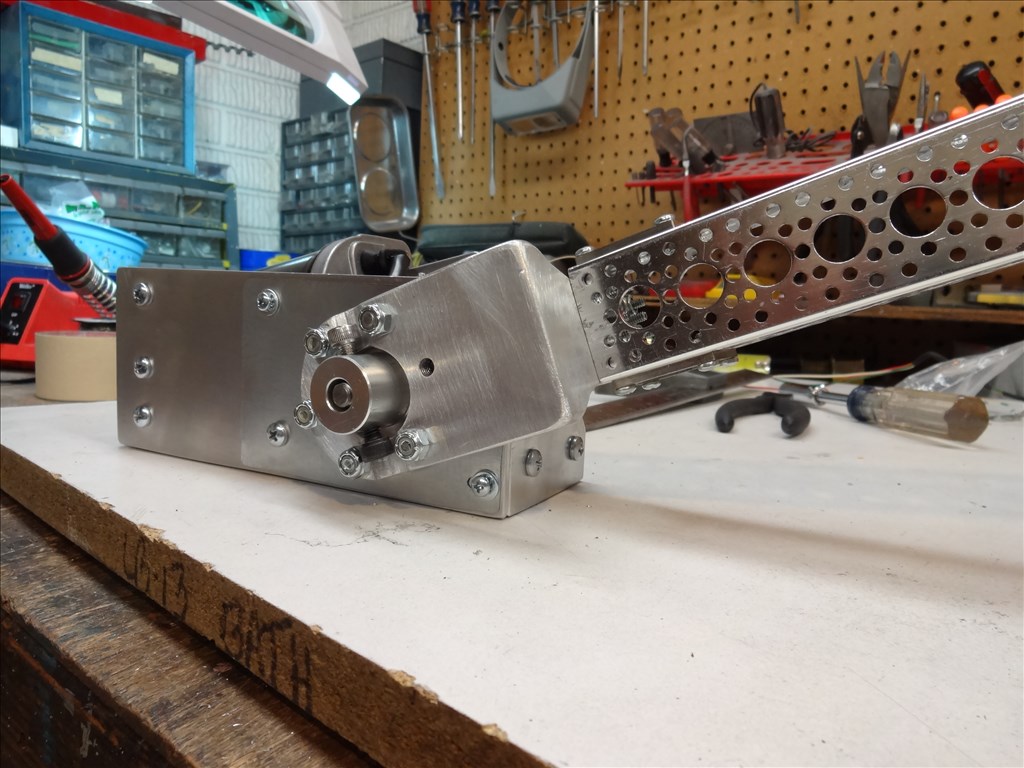
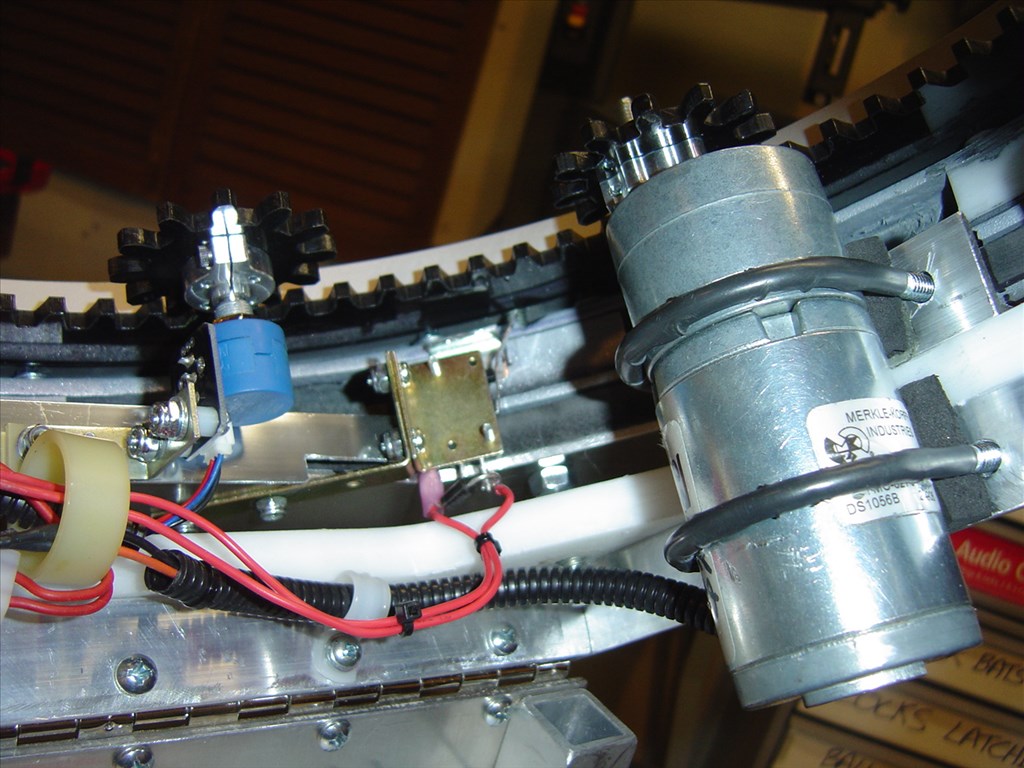
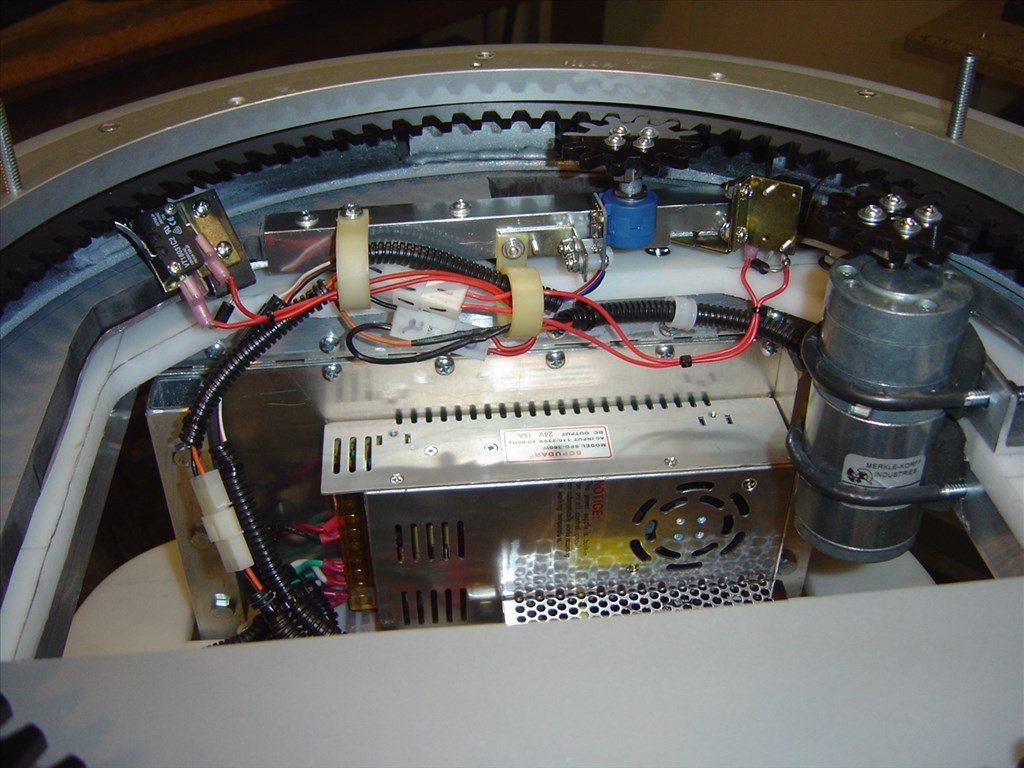
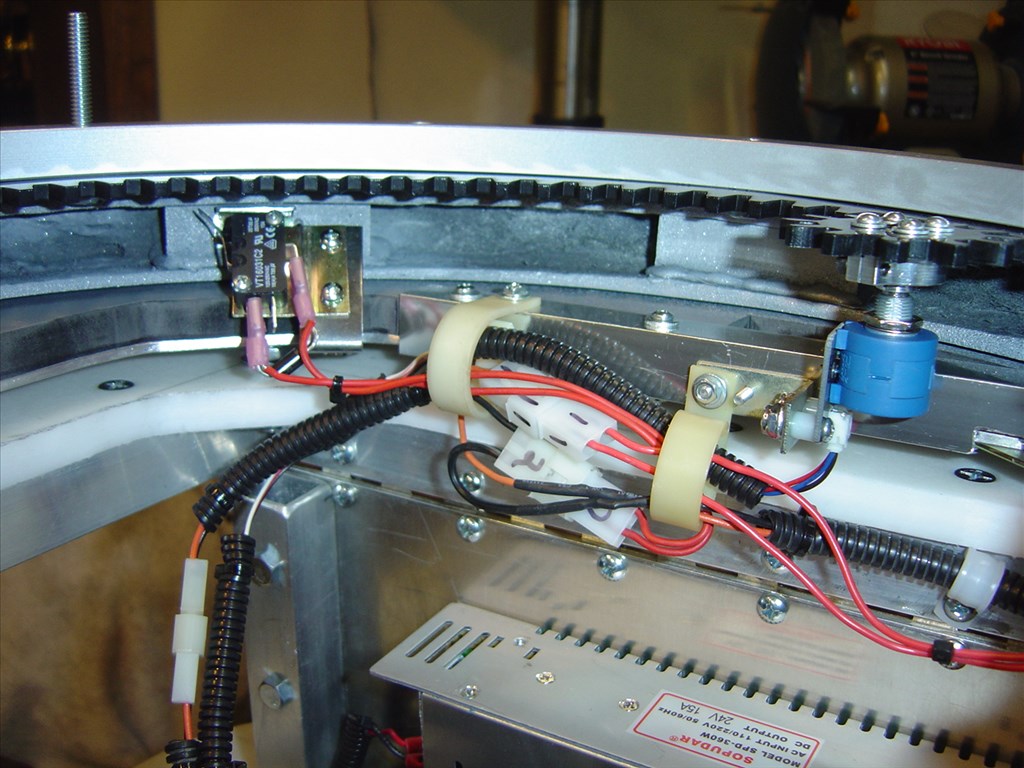

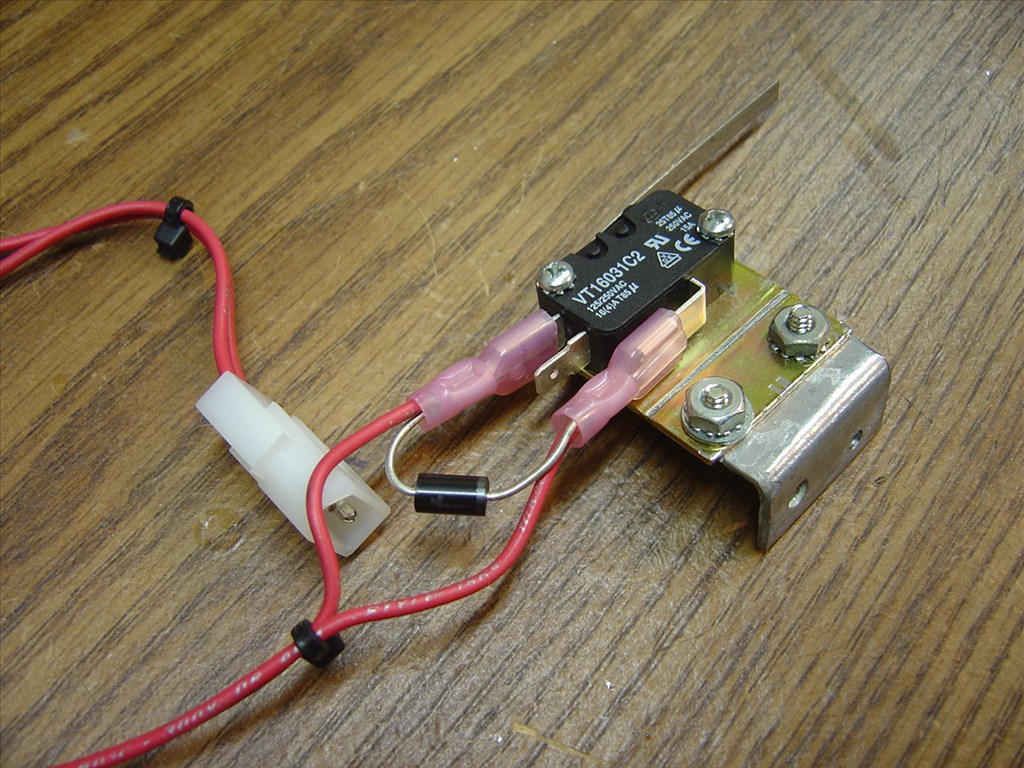
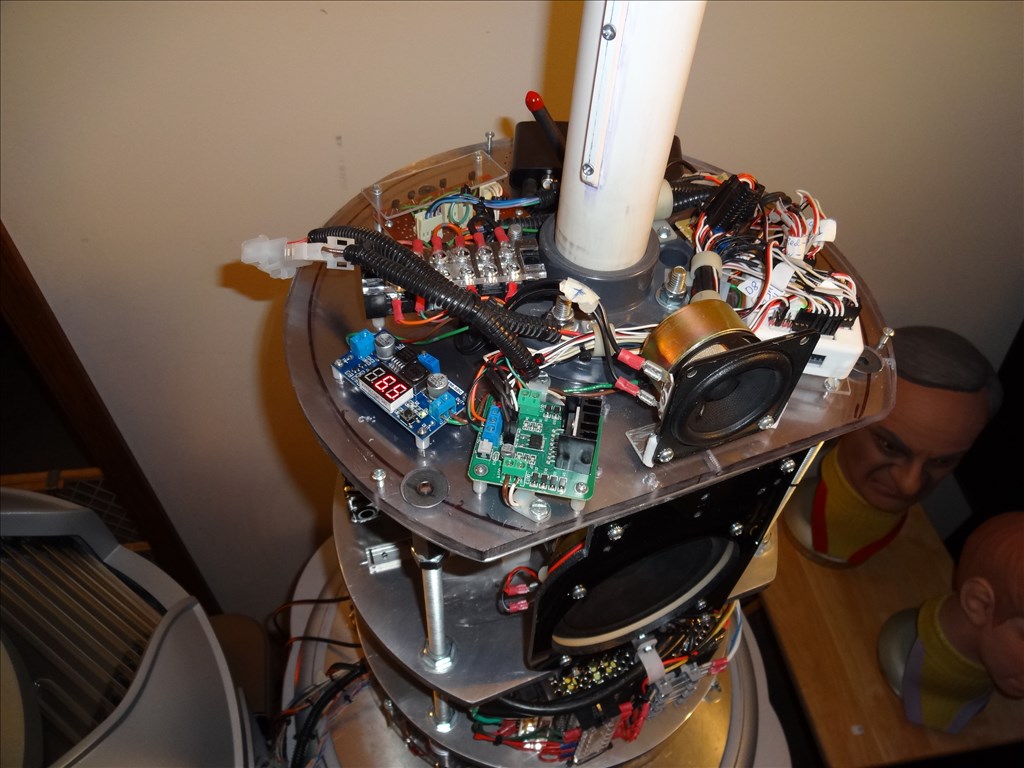
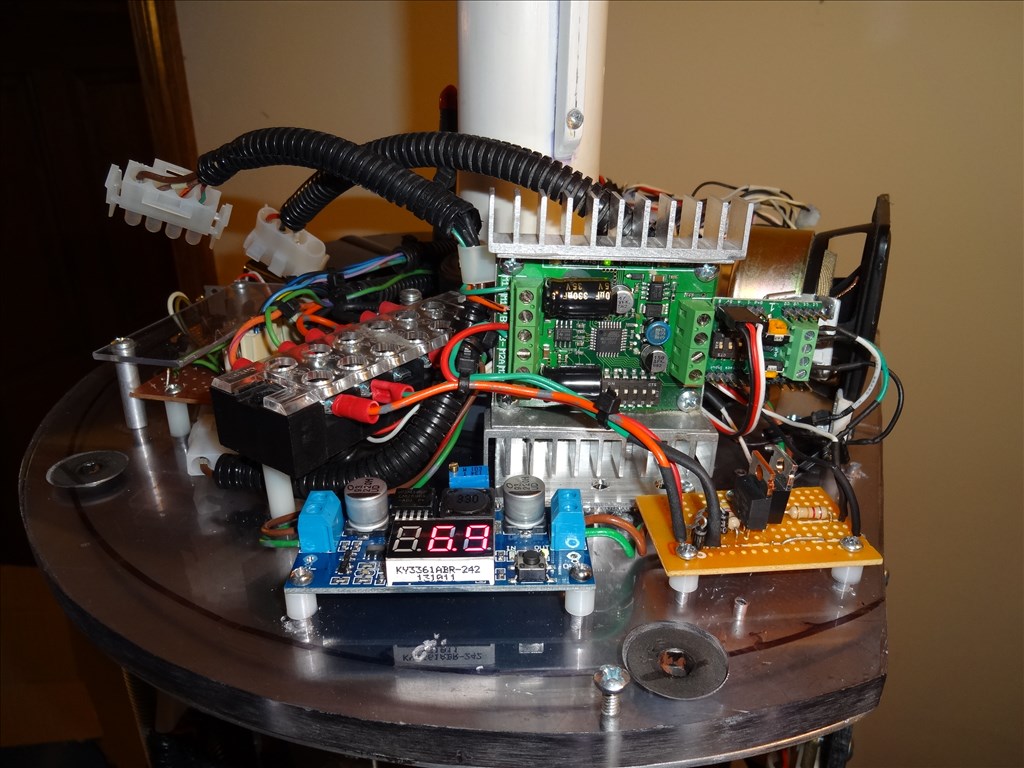
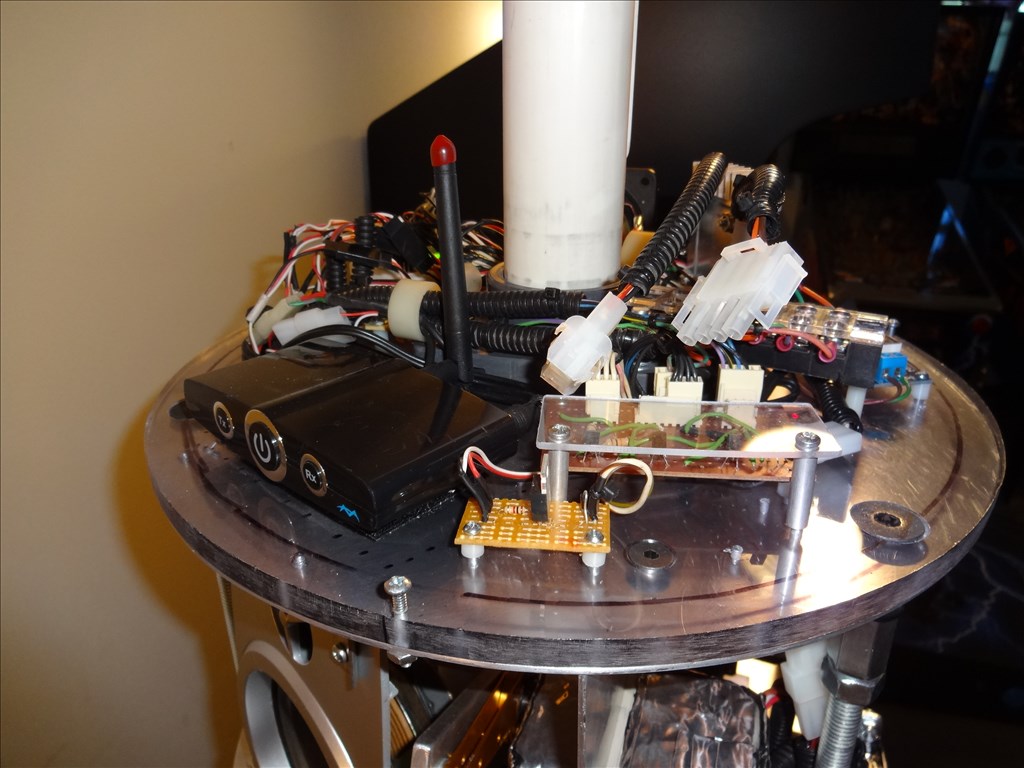
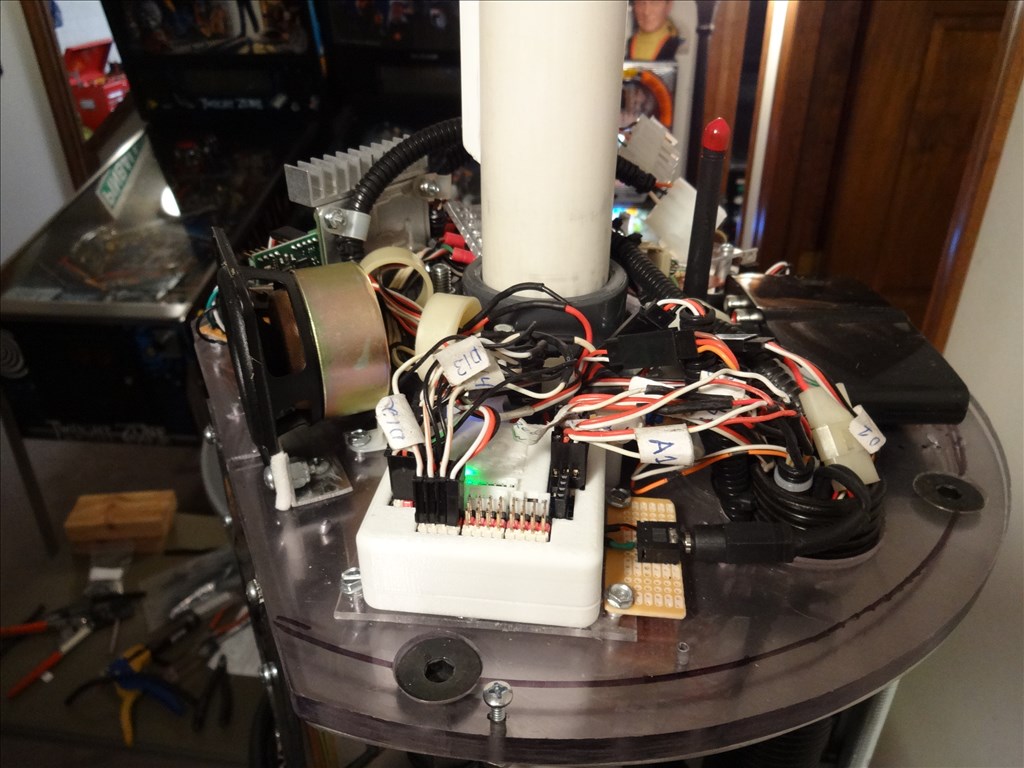
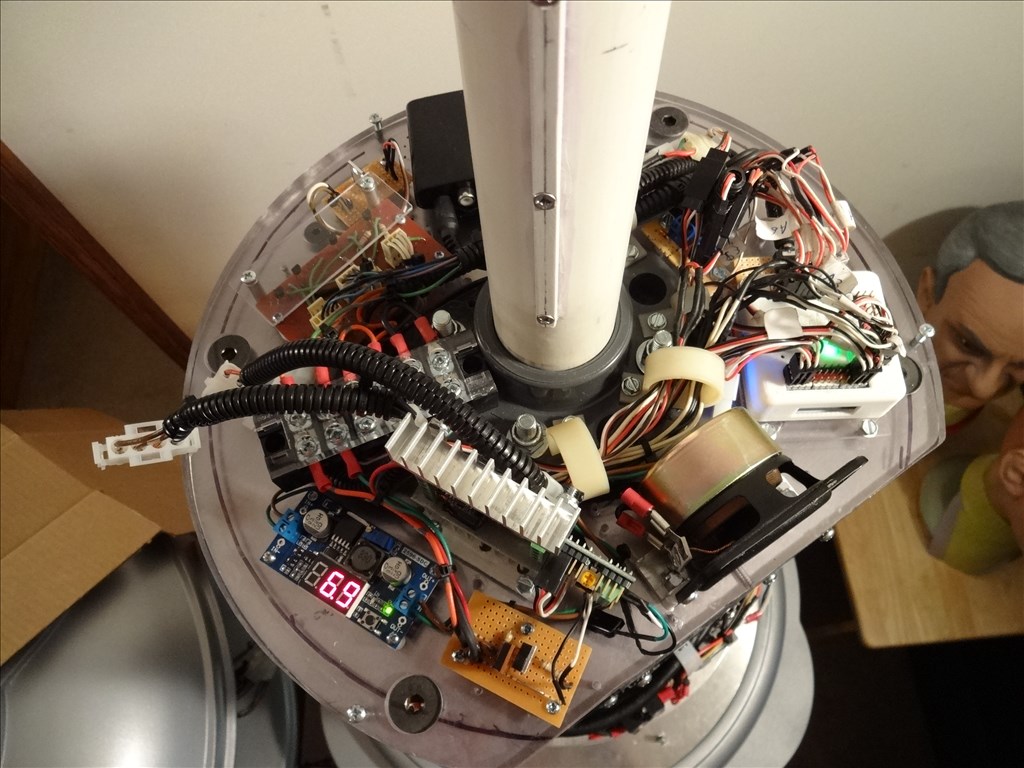
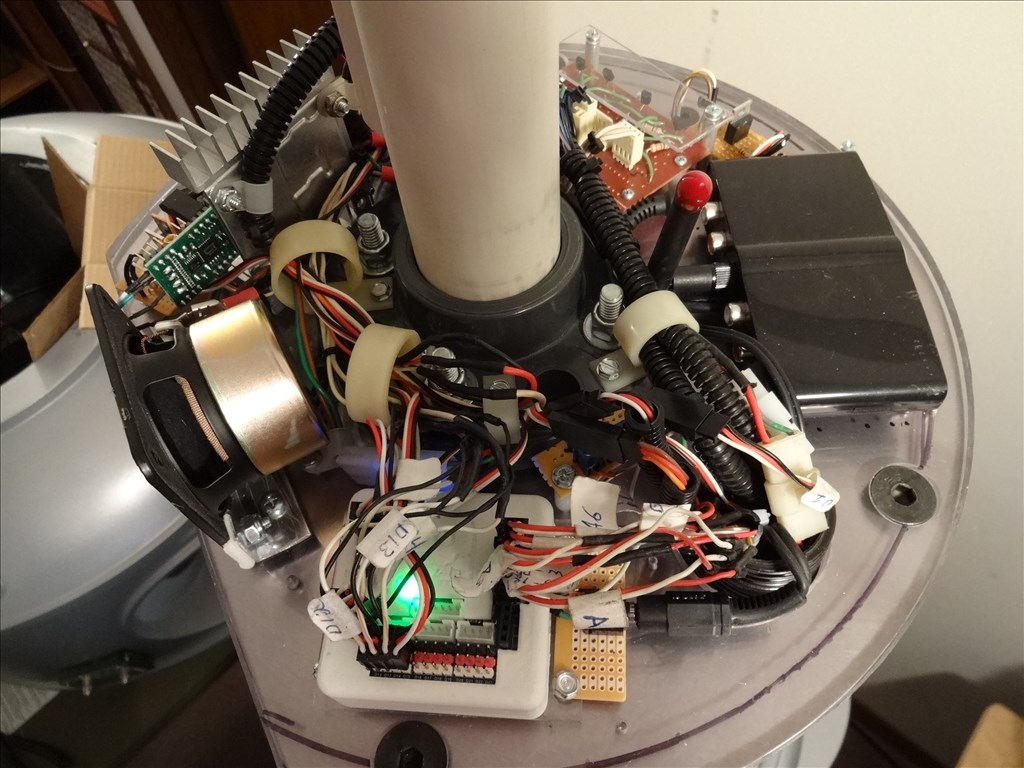
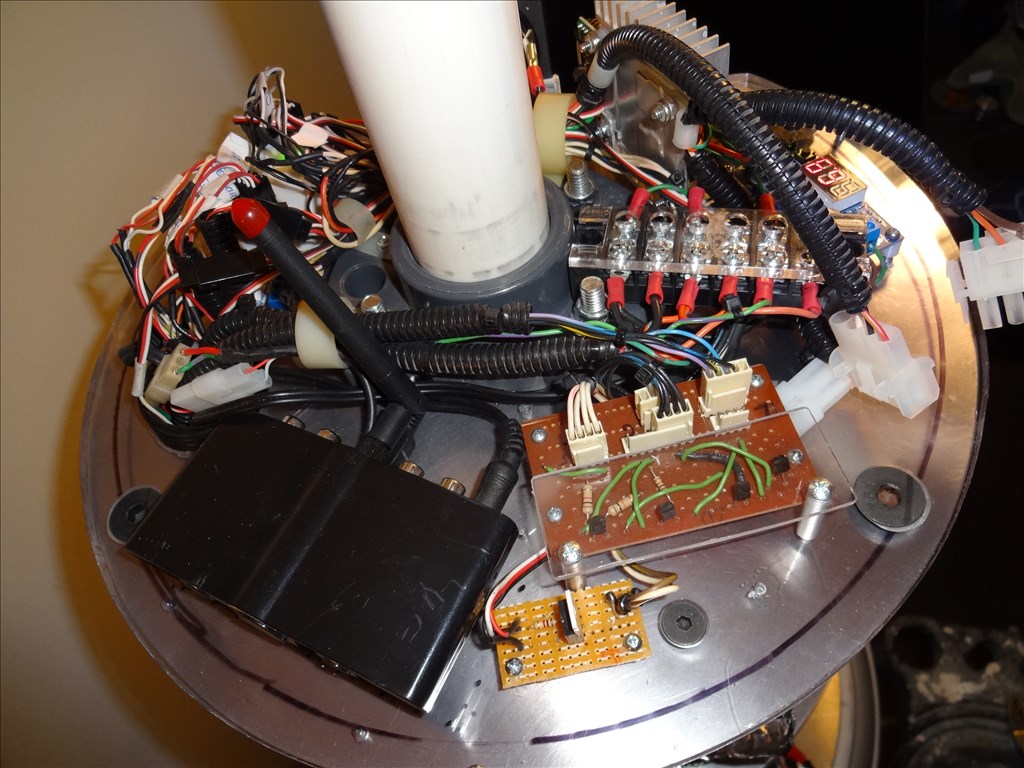
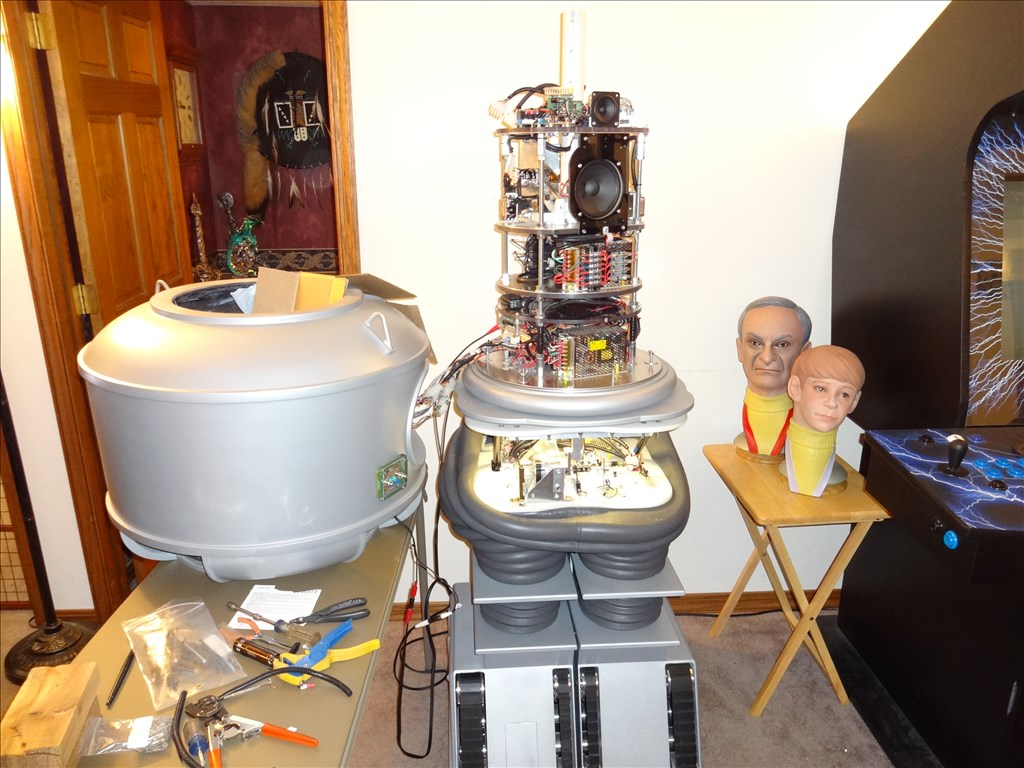
-635353562186322812.png)
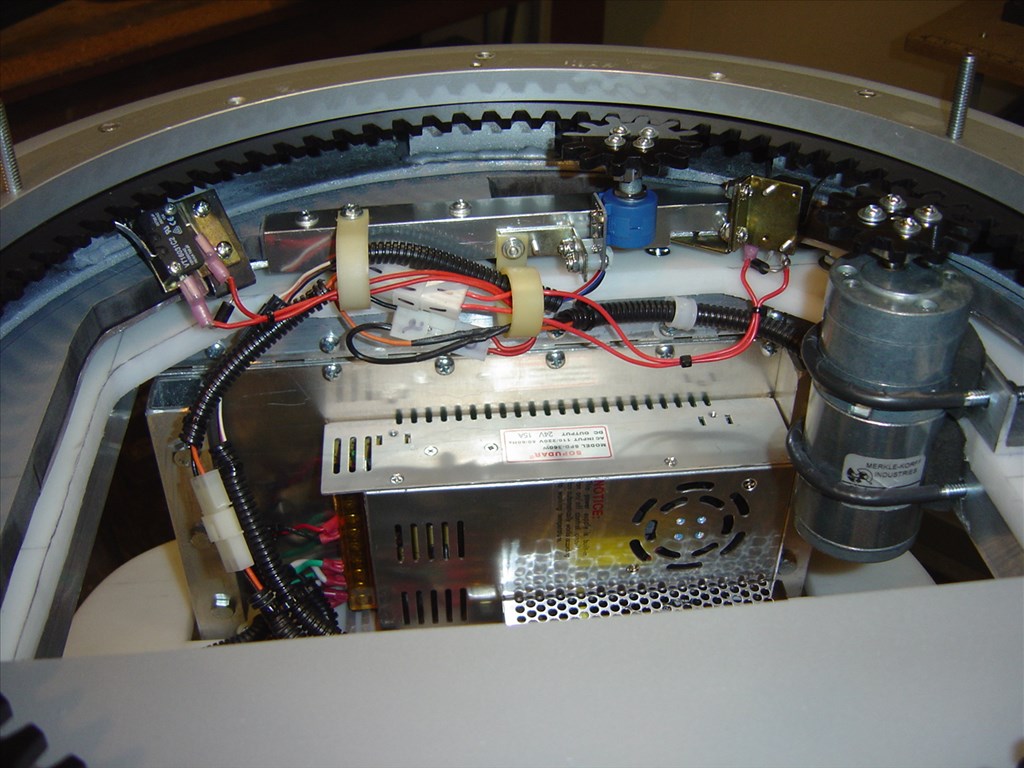
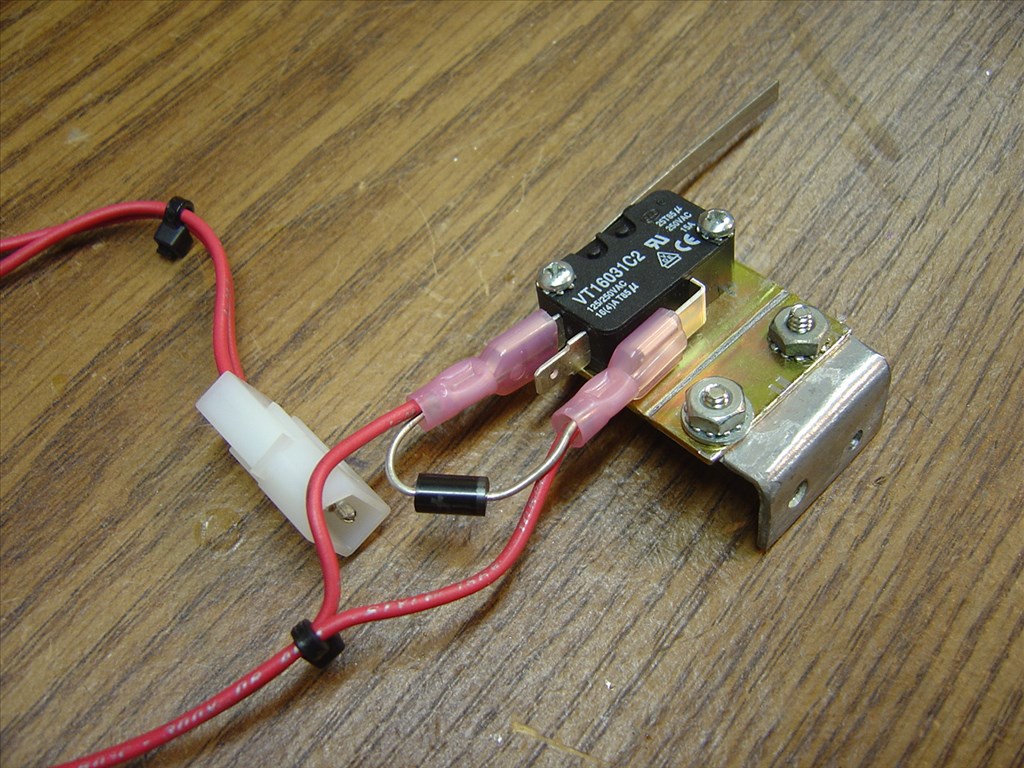
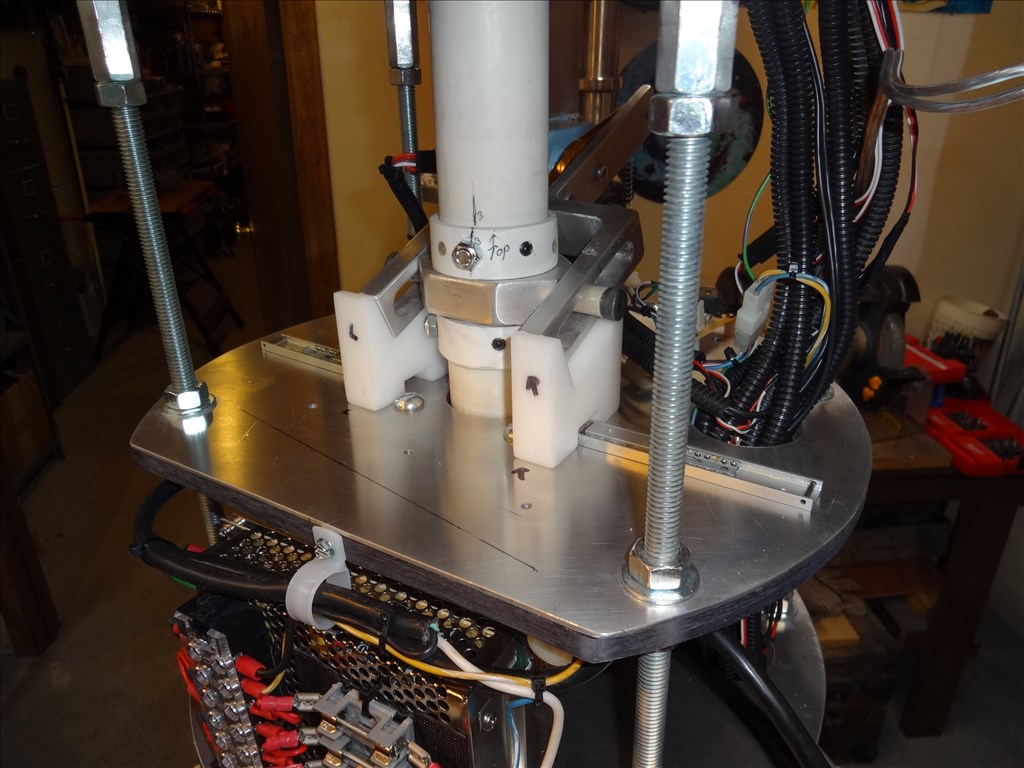
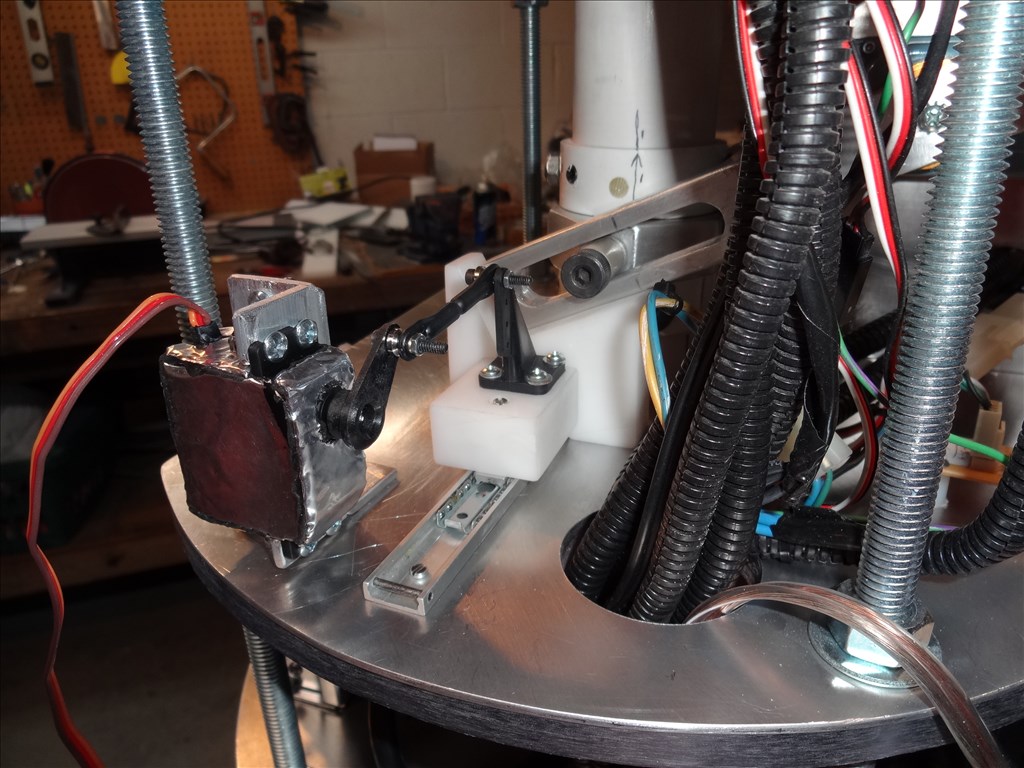
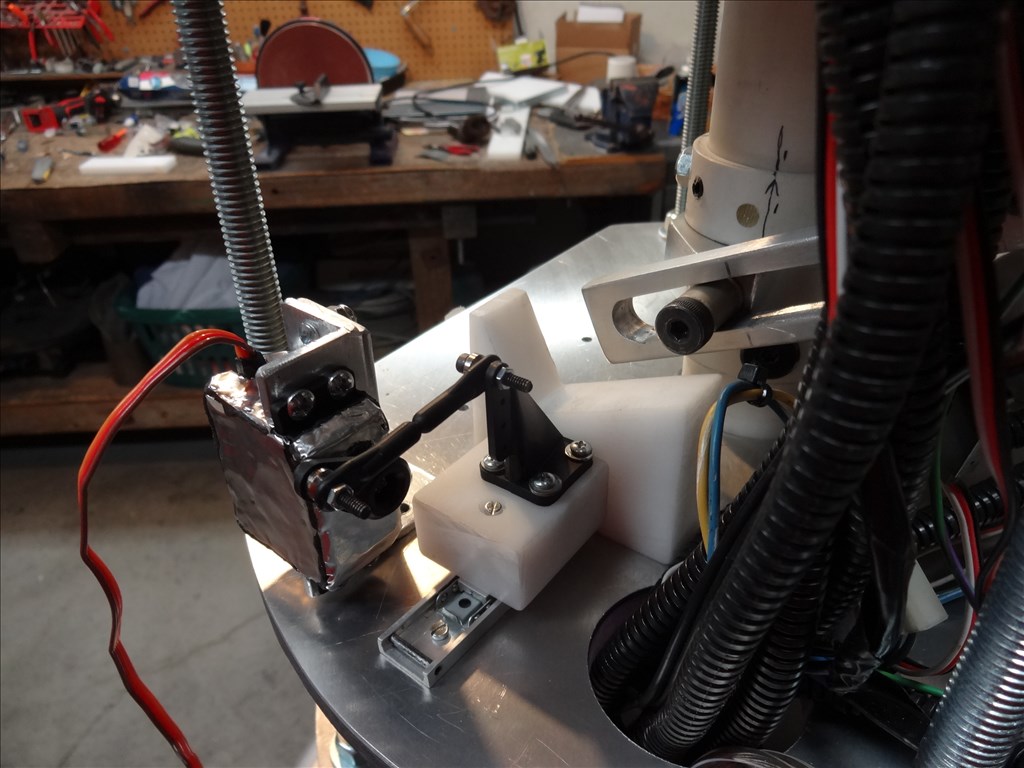
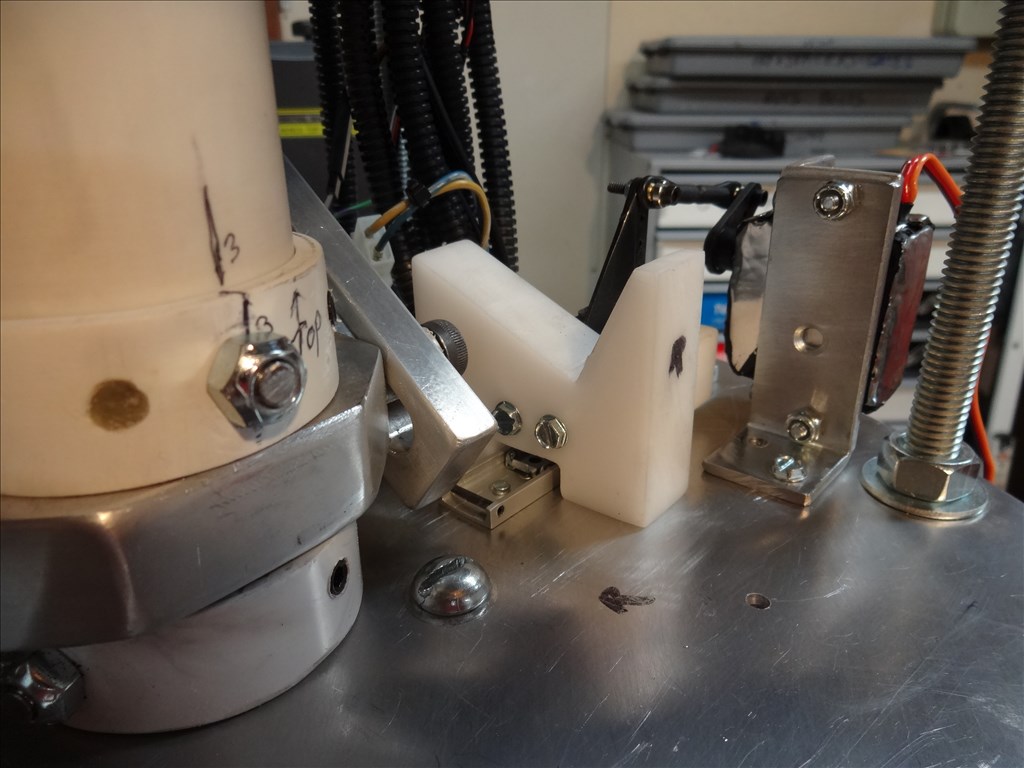
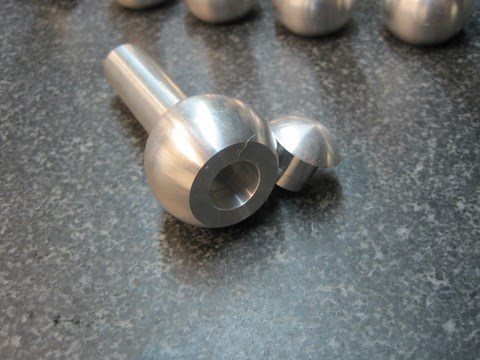
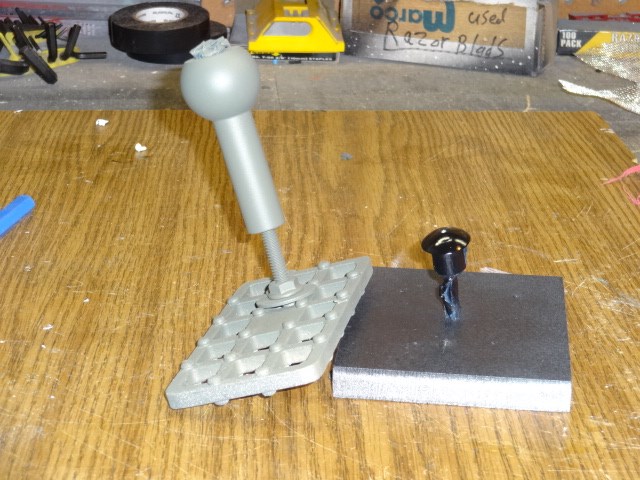
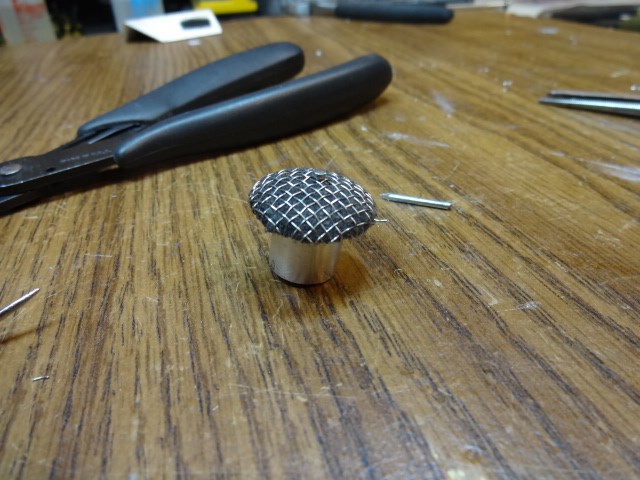
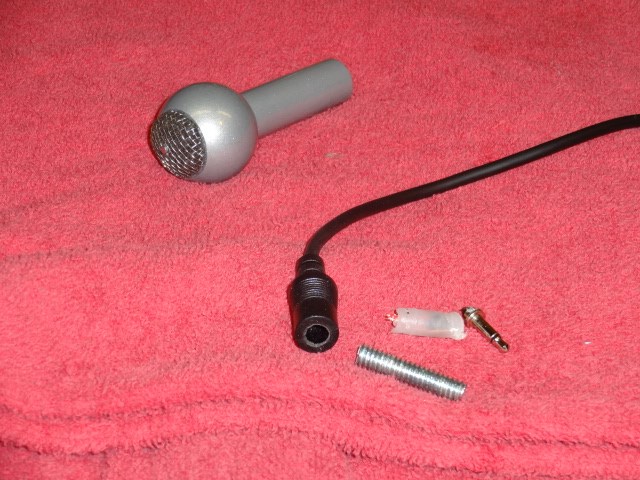
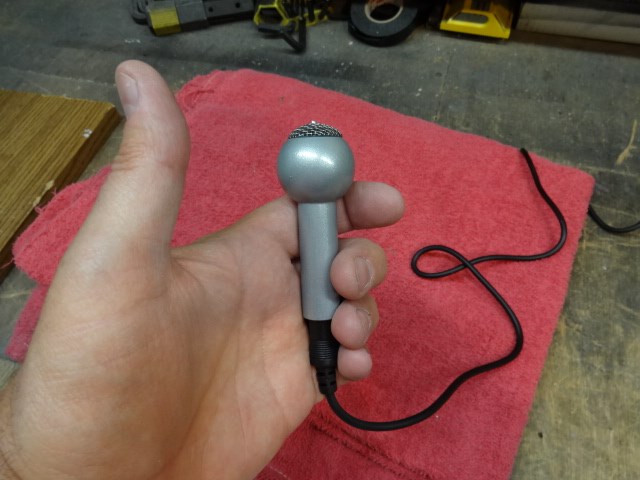
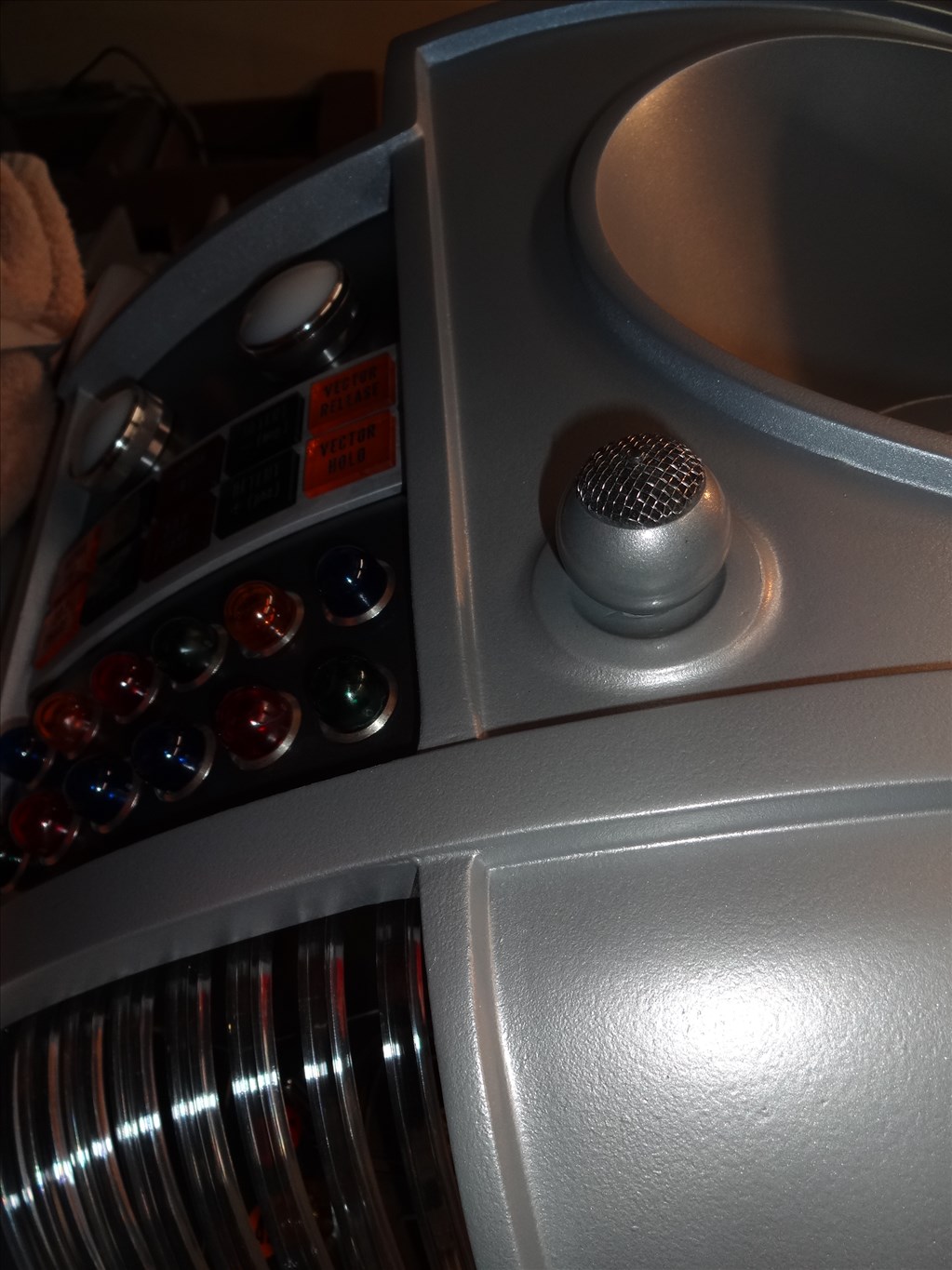
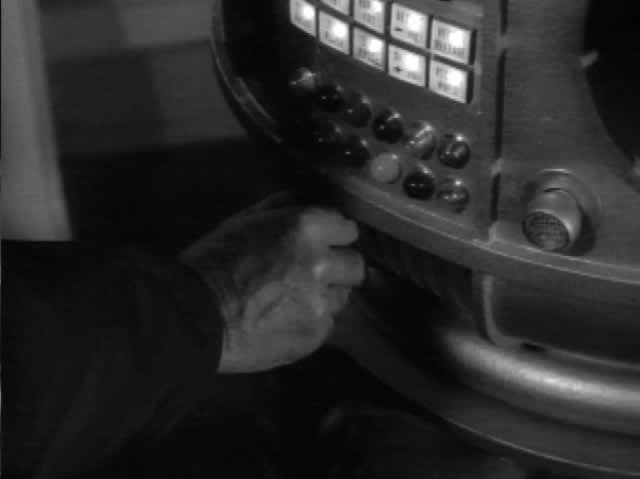
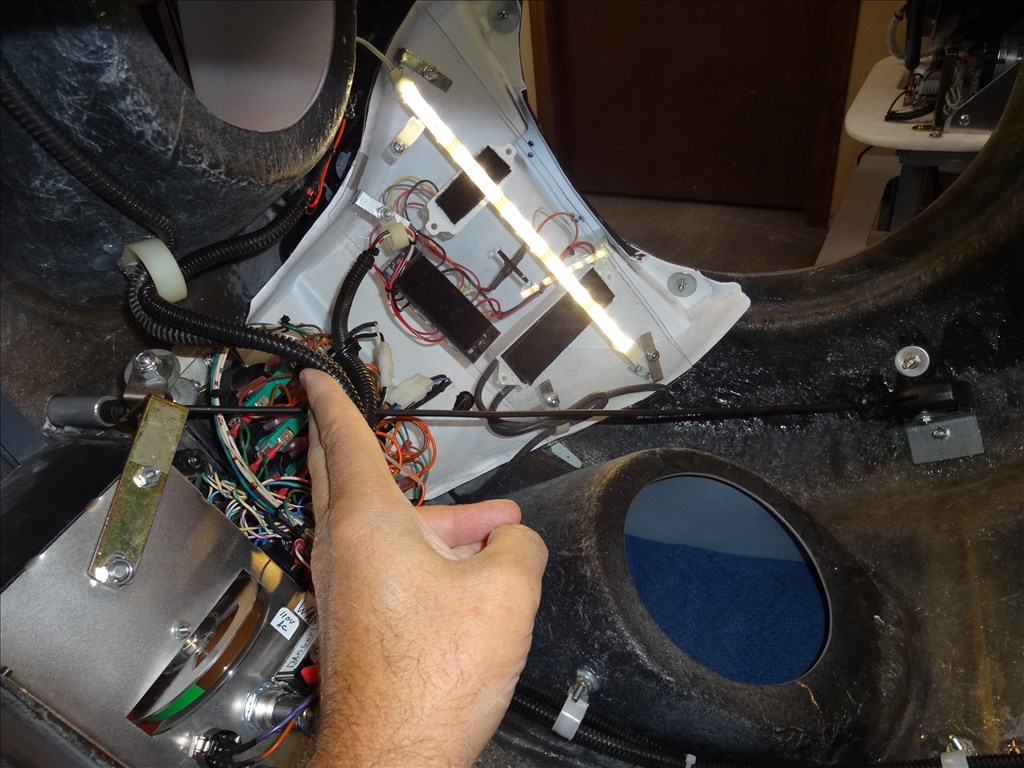
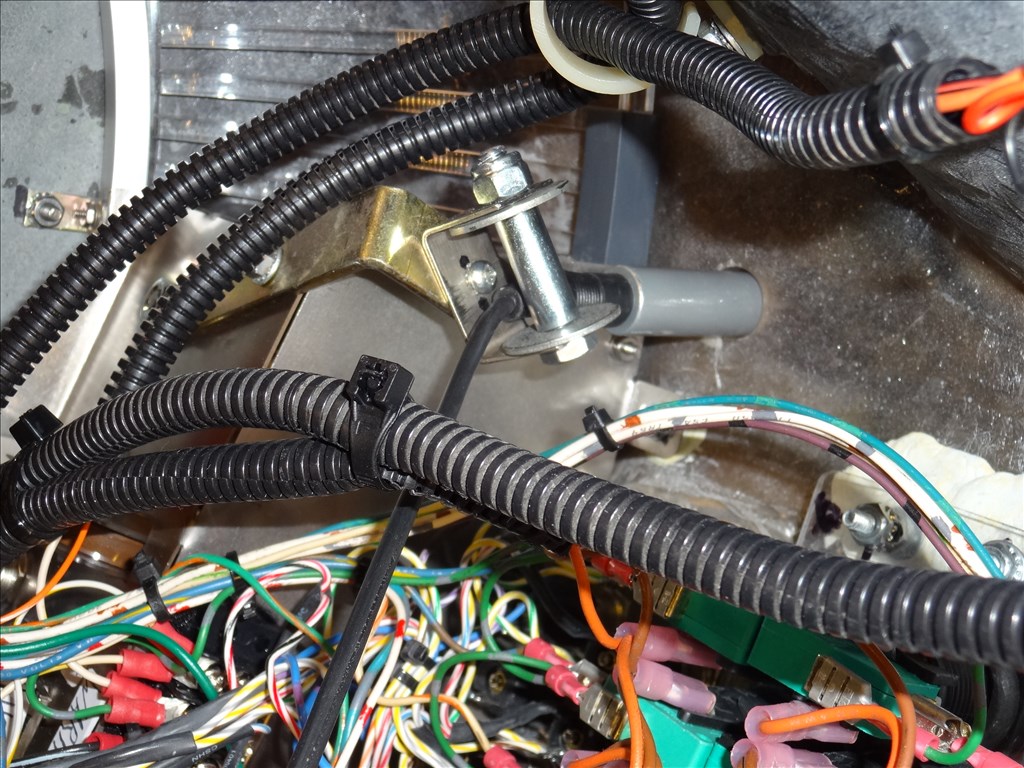
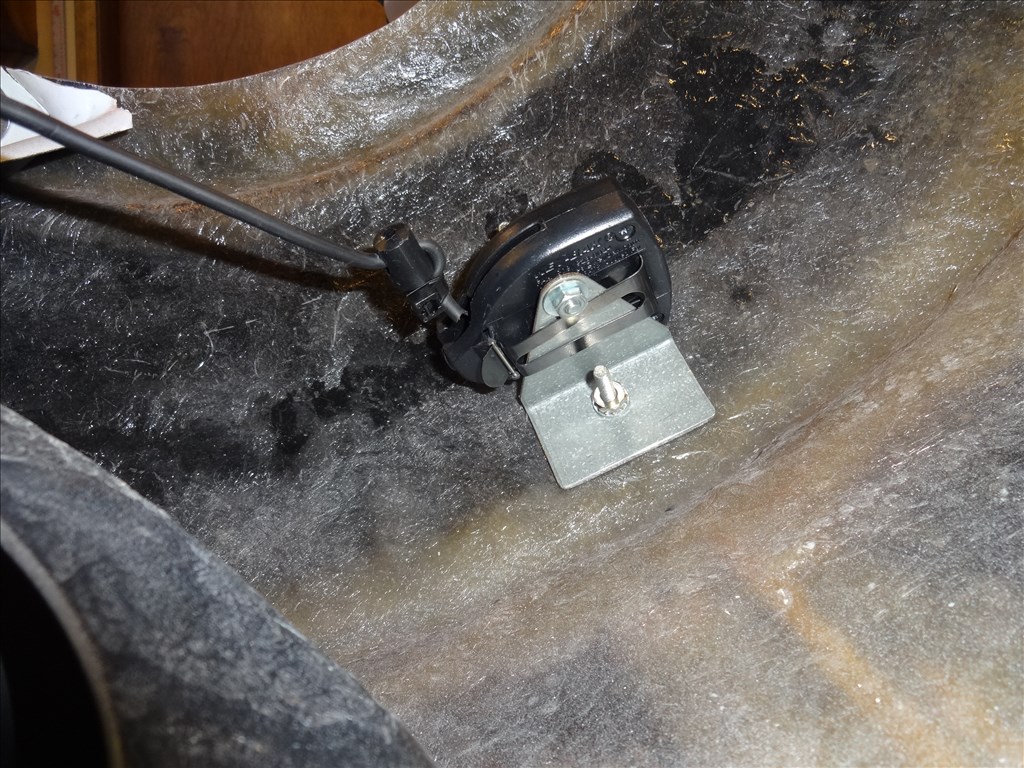
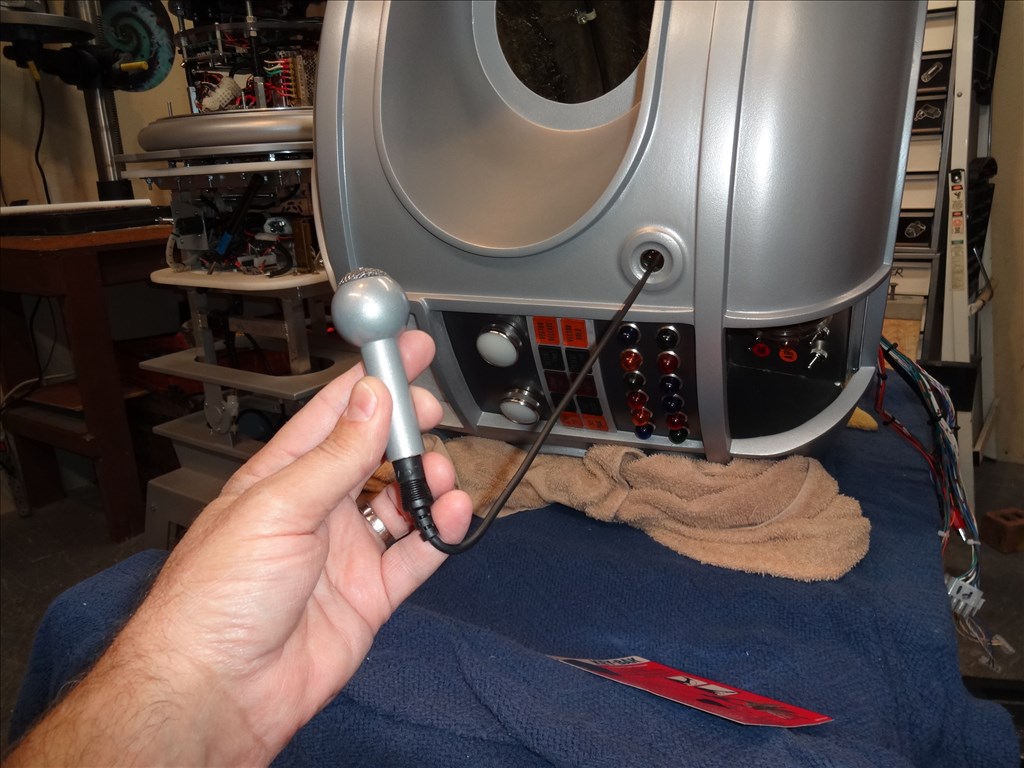
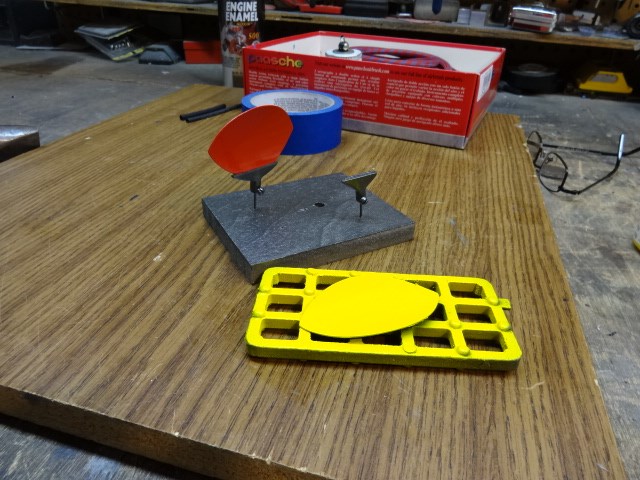

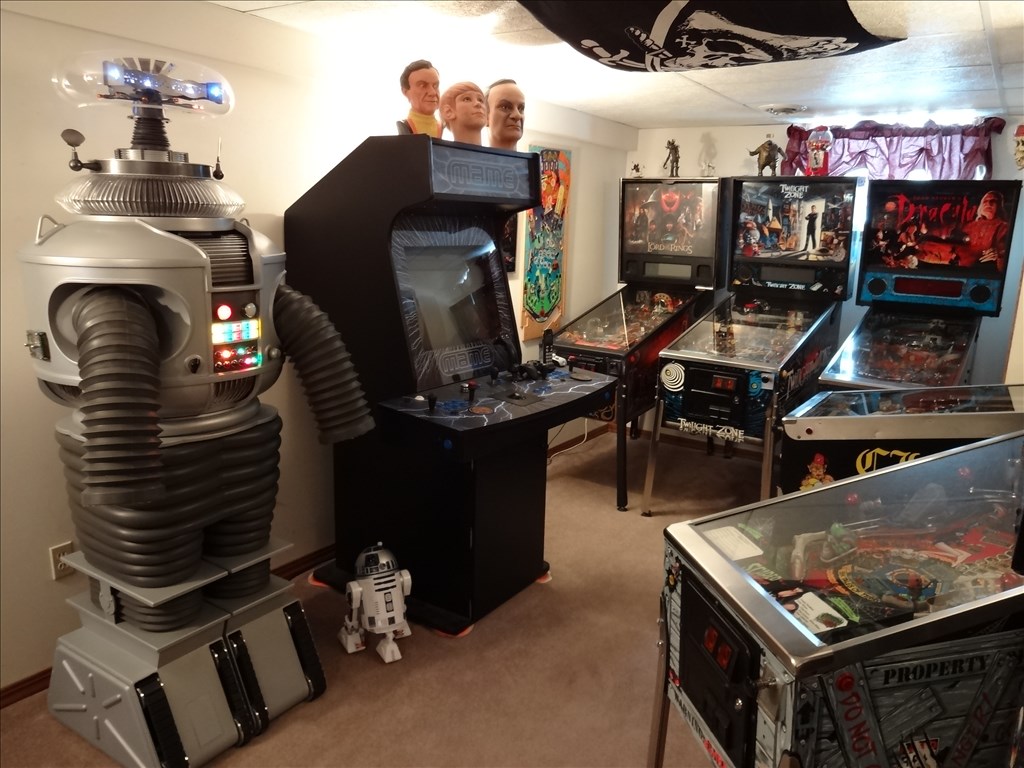
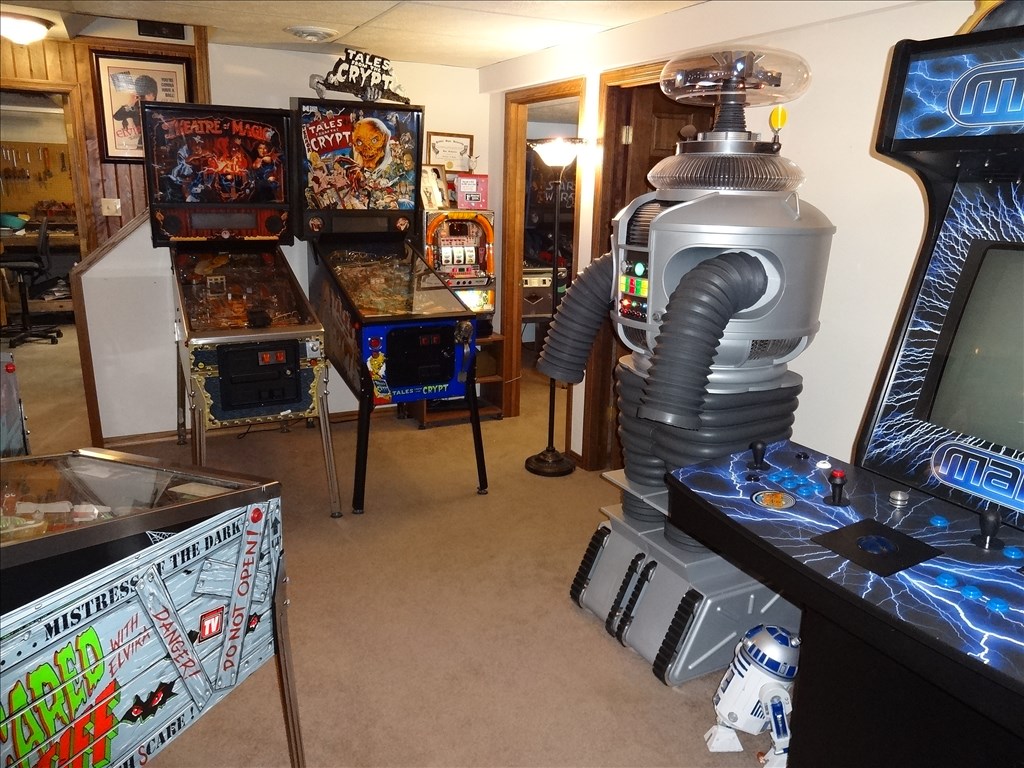
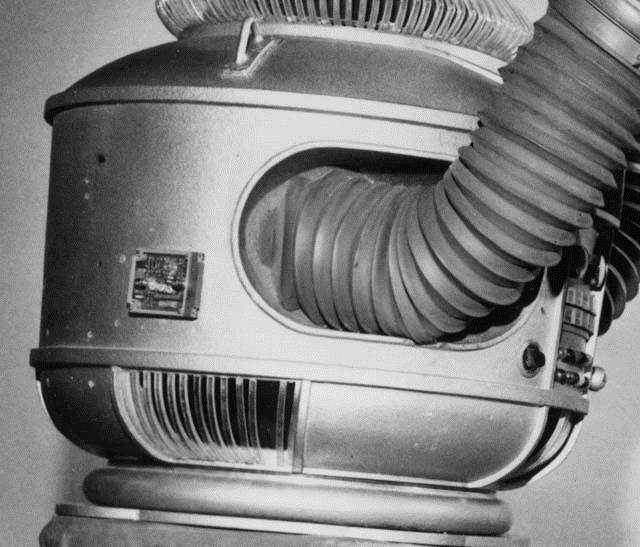
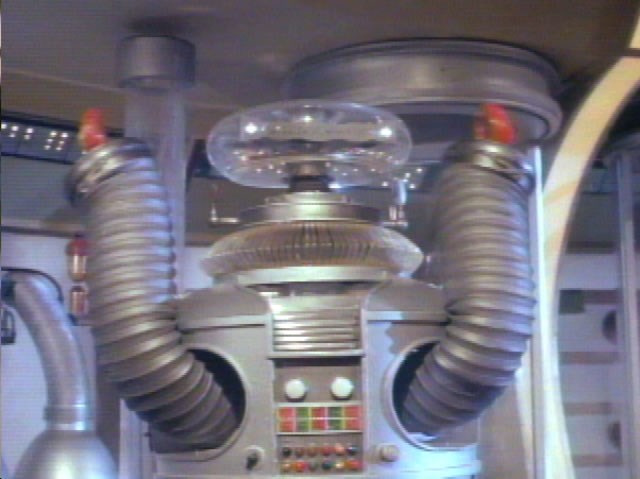
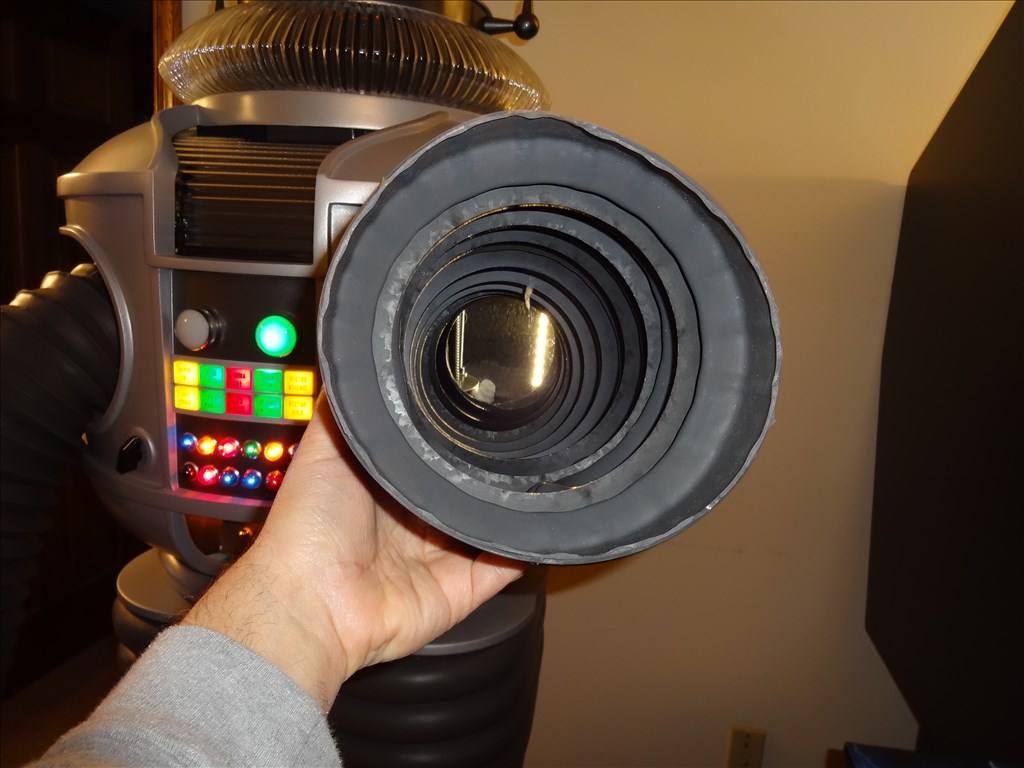
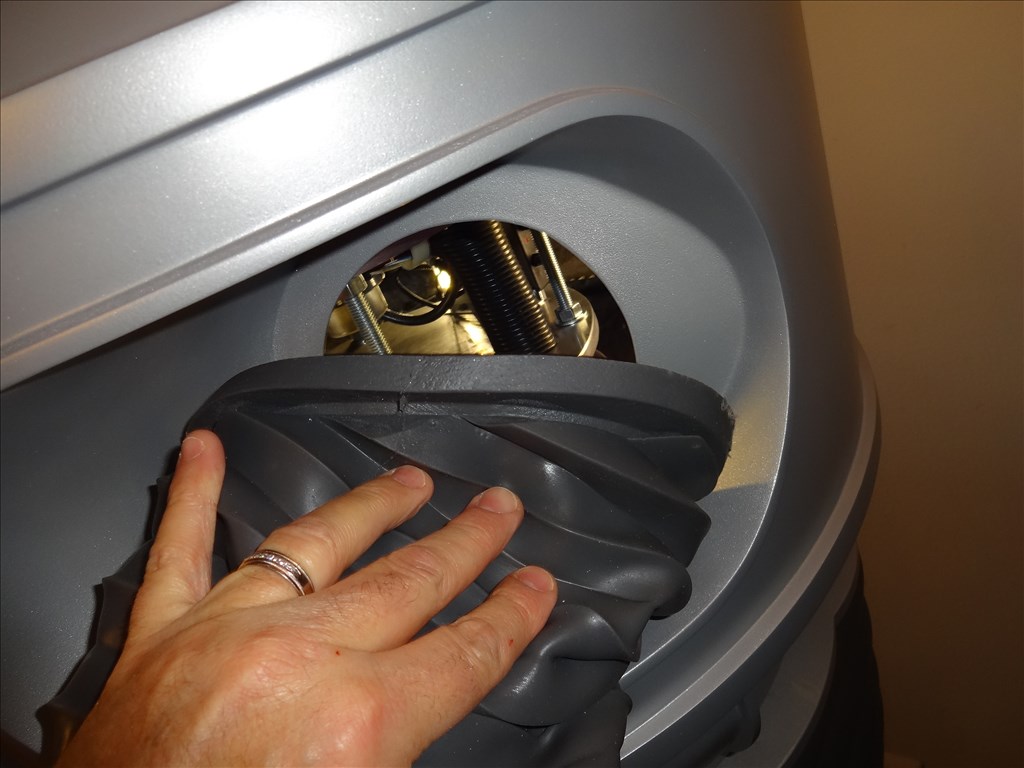
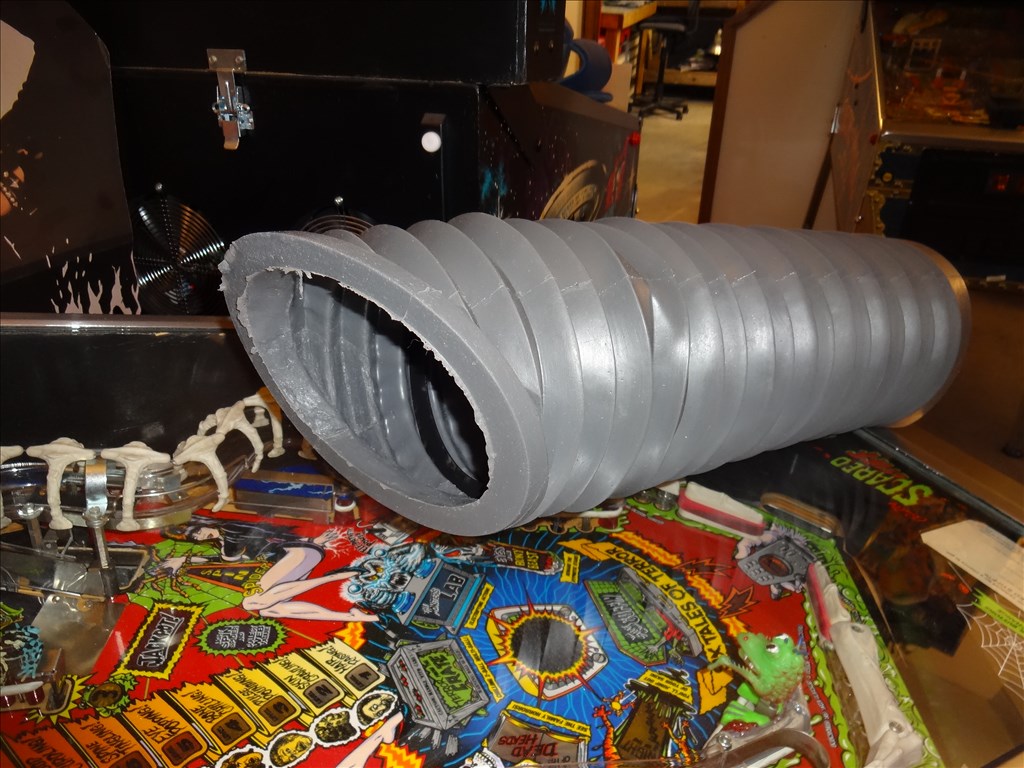
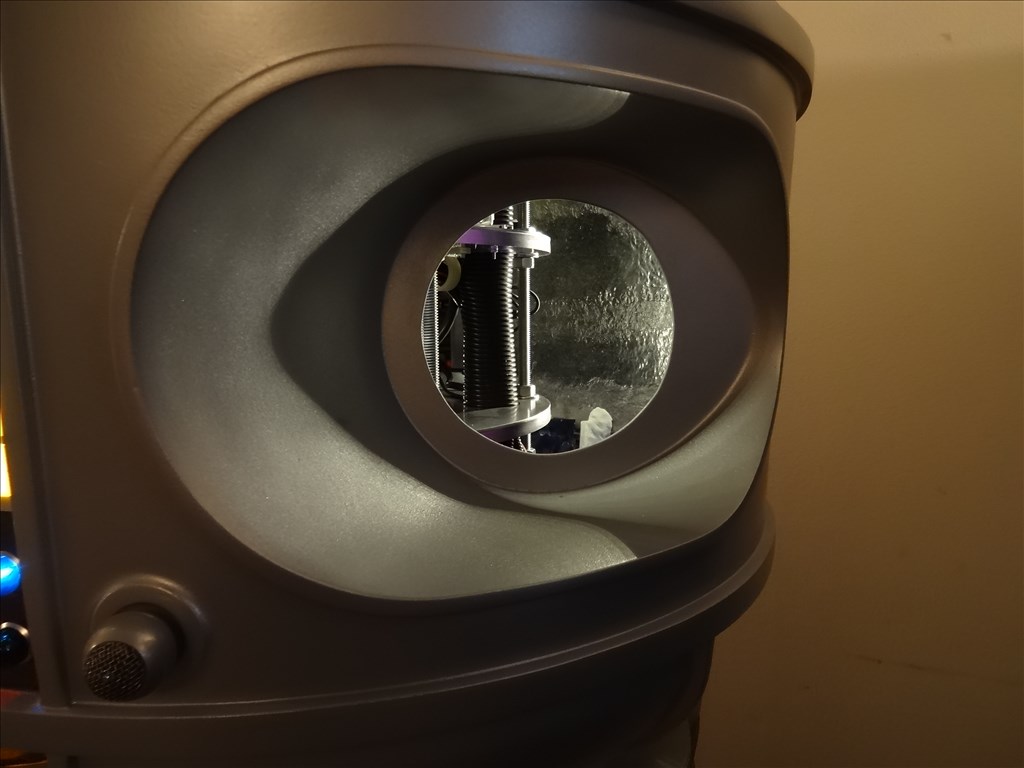
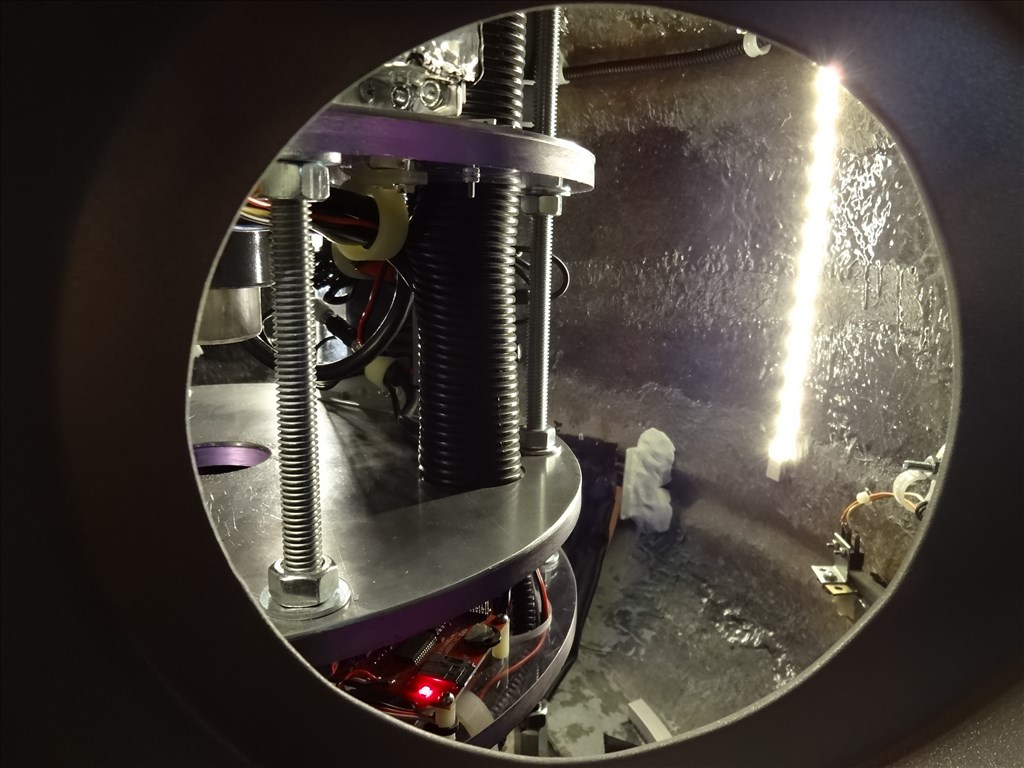
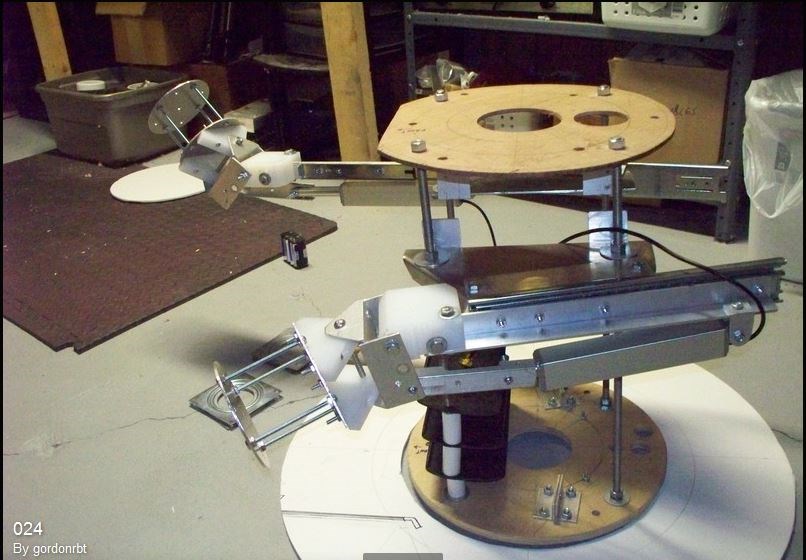
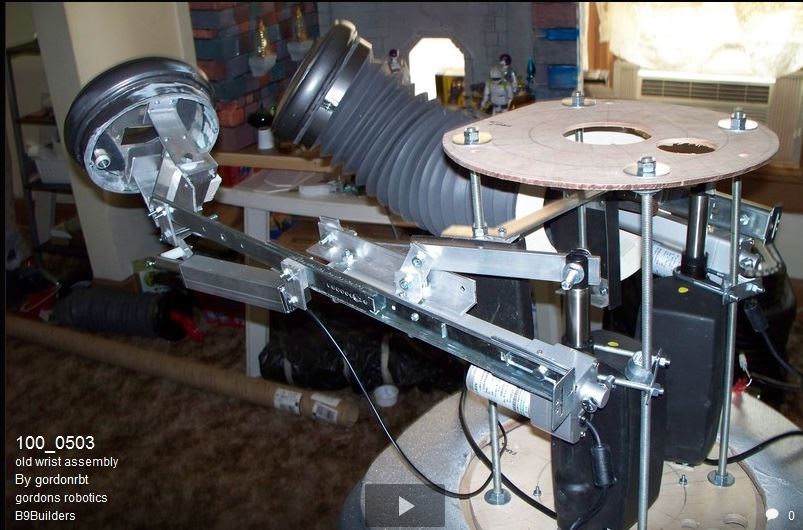
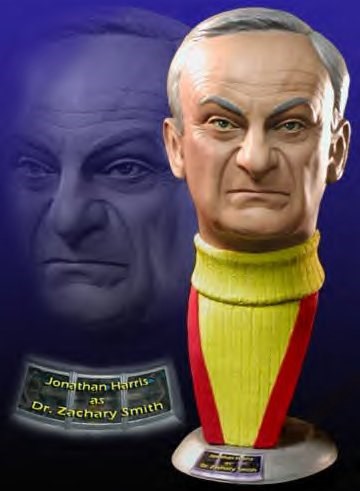
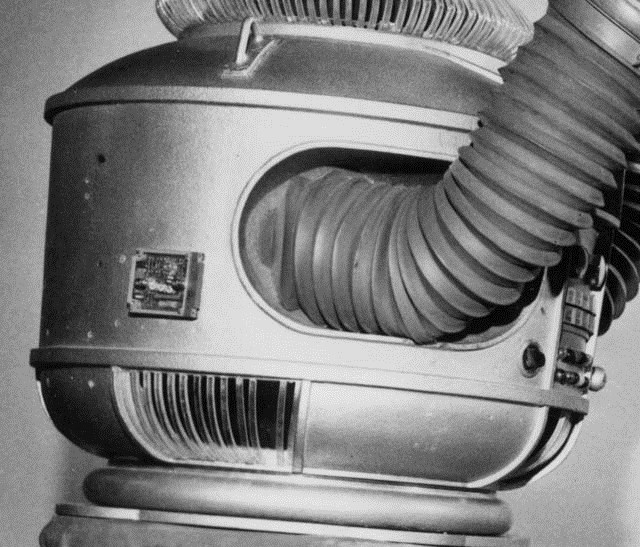
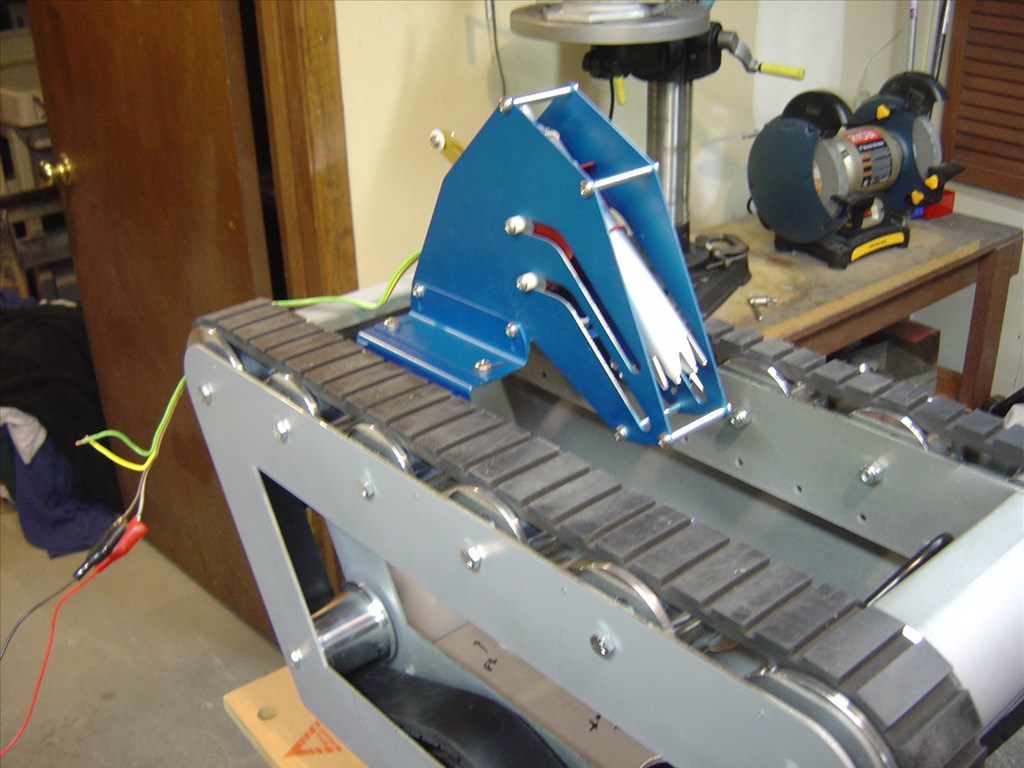
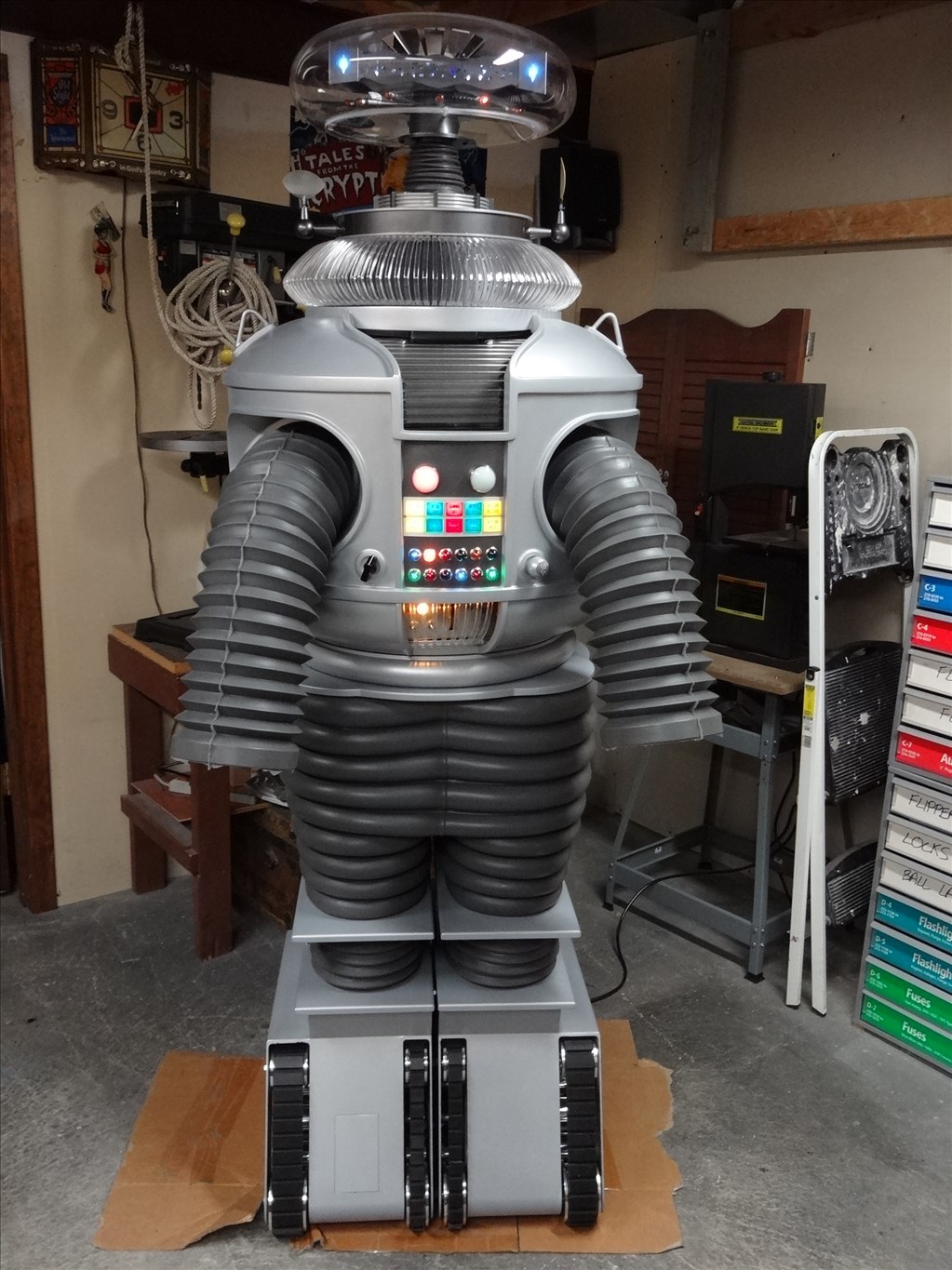
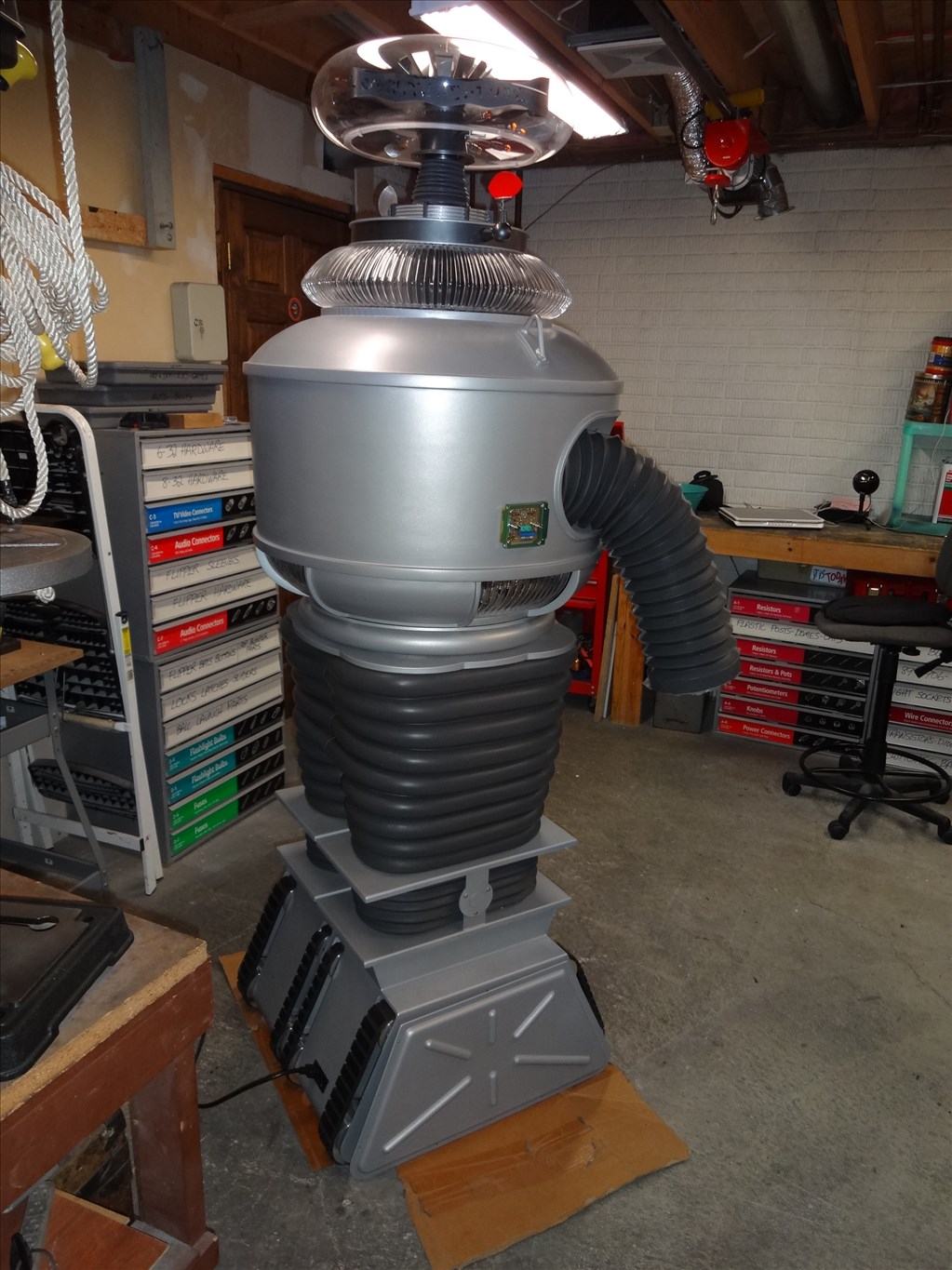
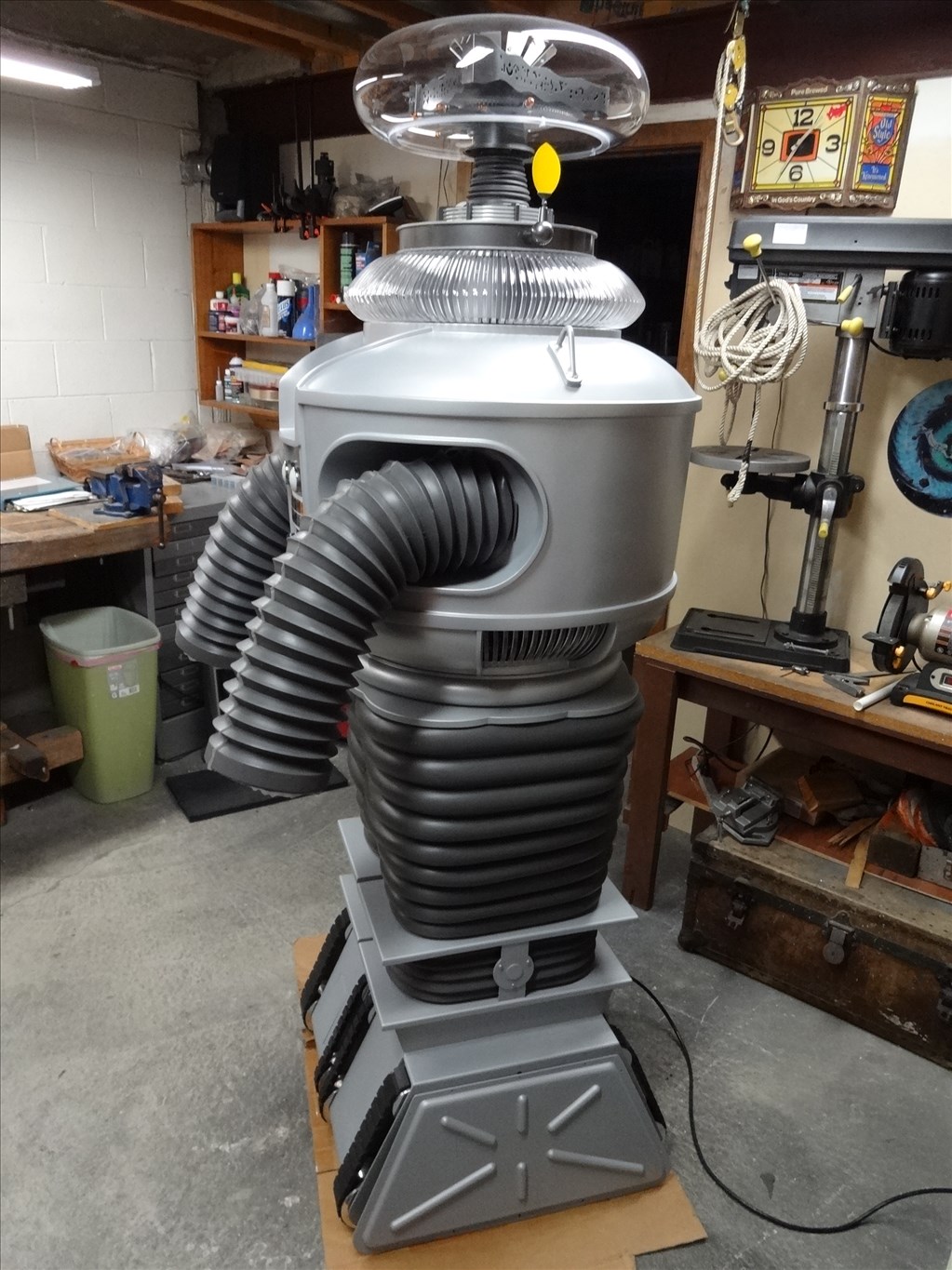

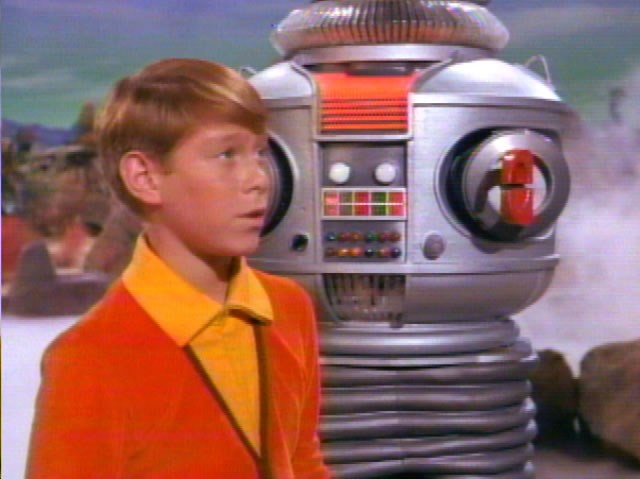
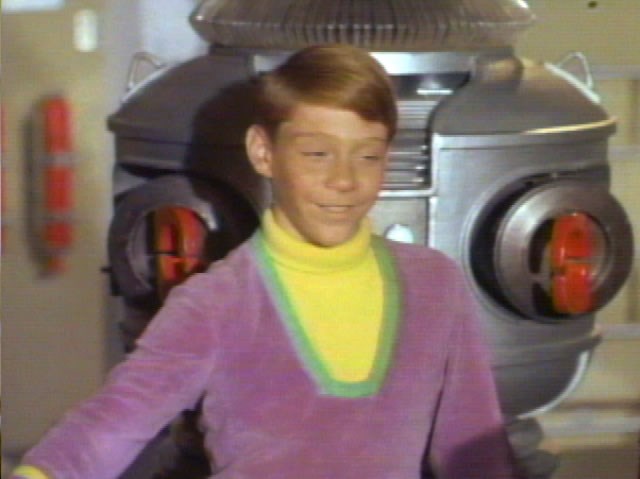
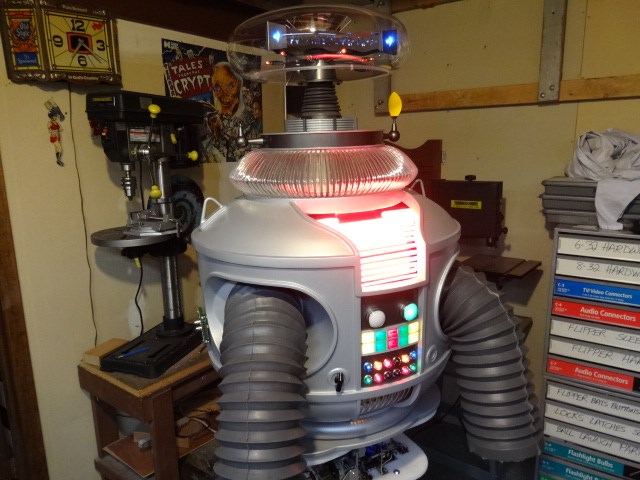
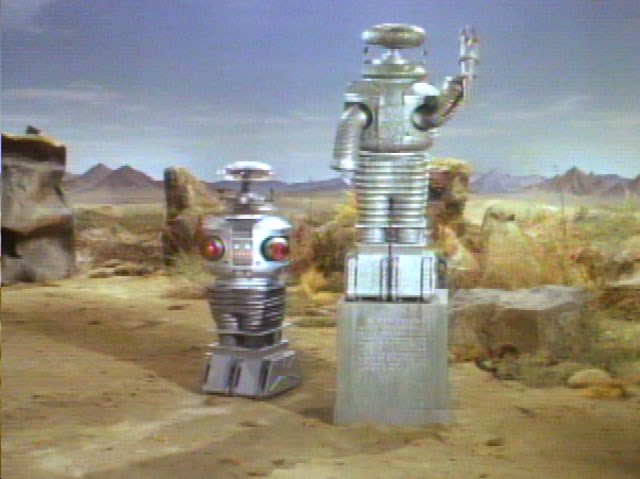
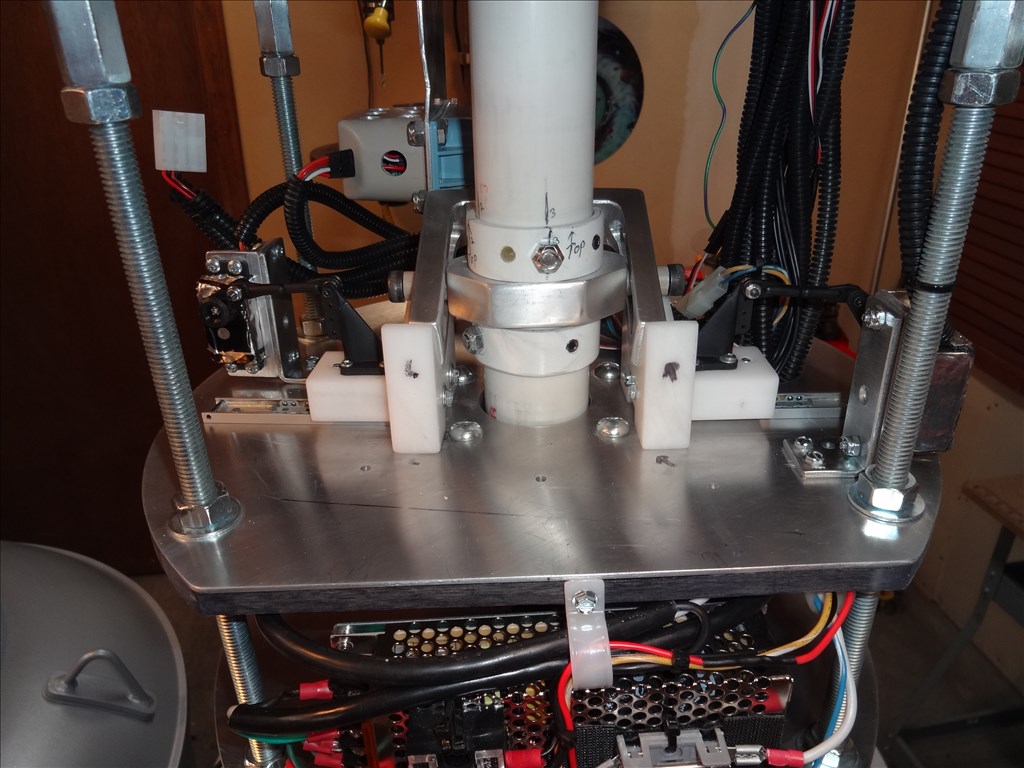
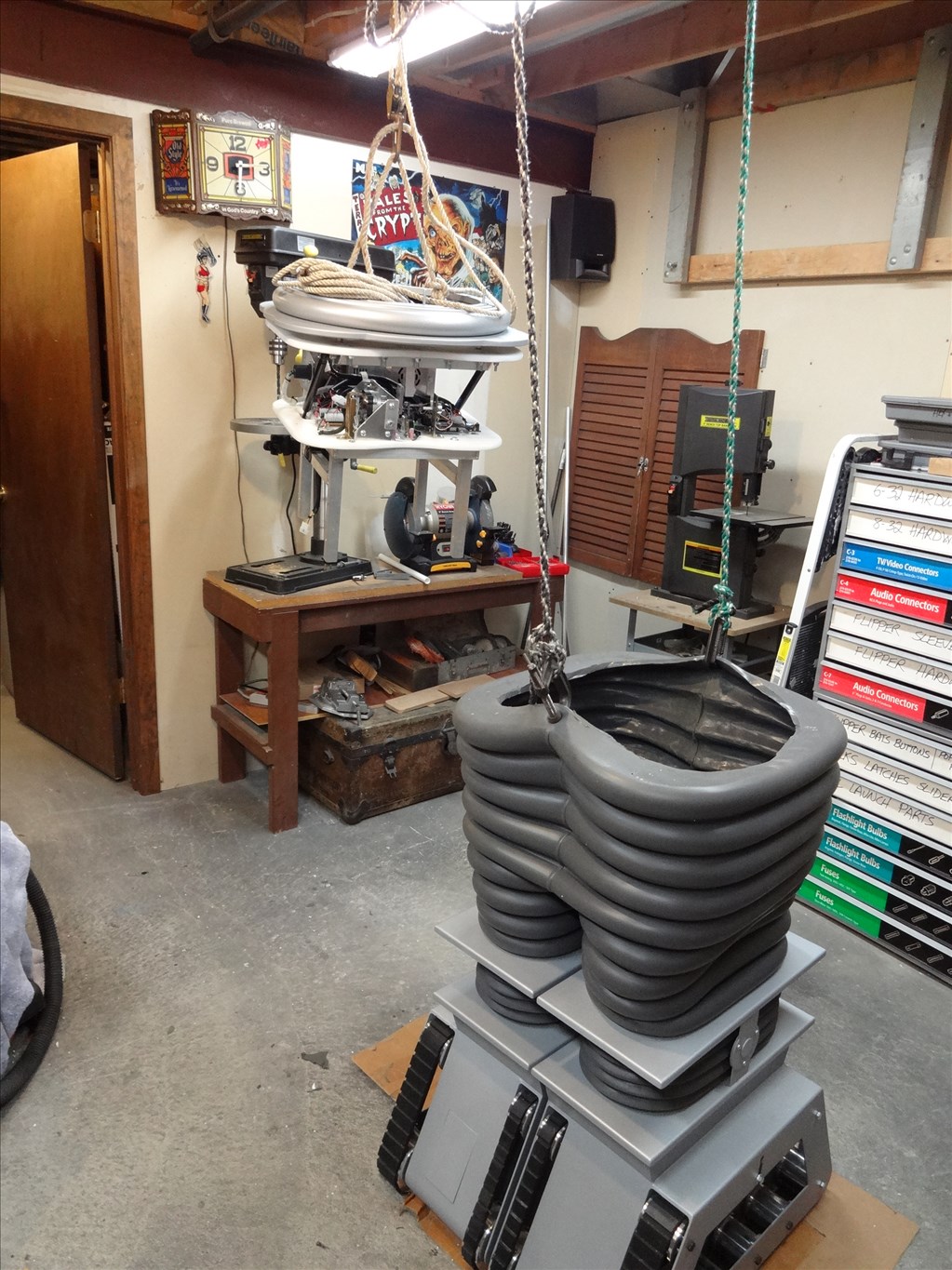
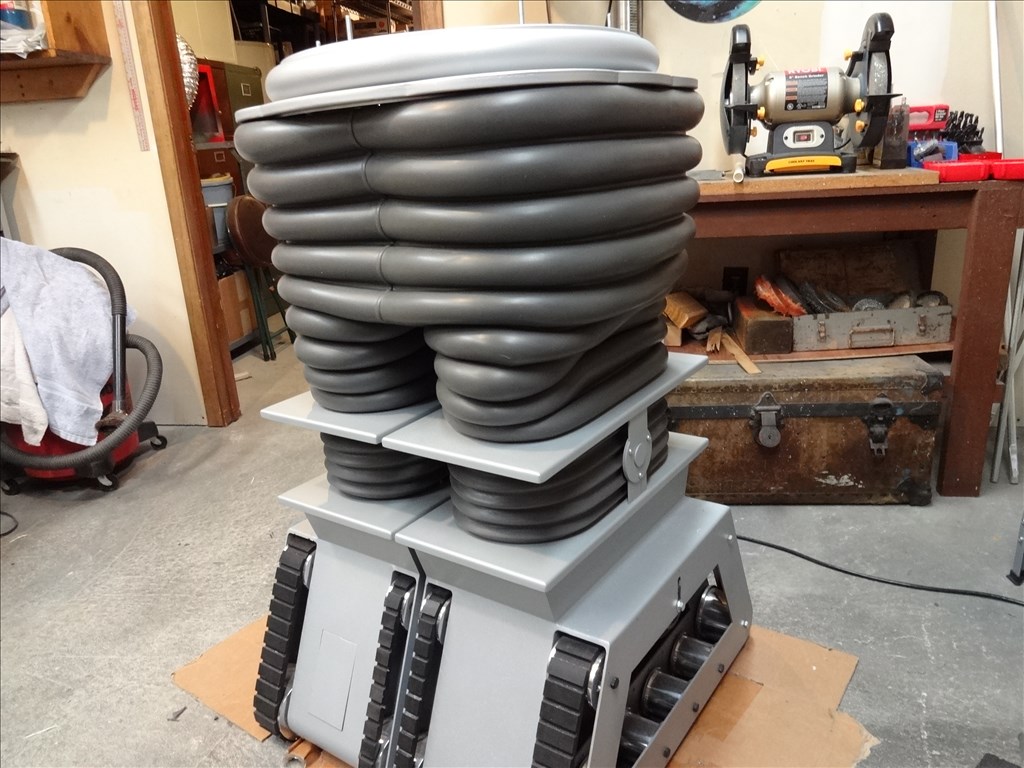
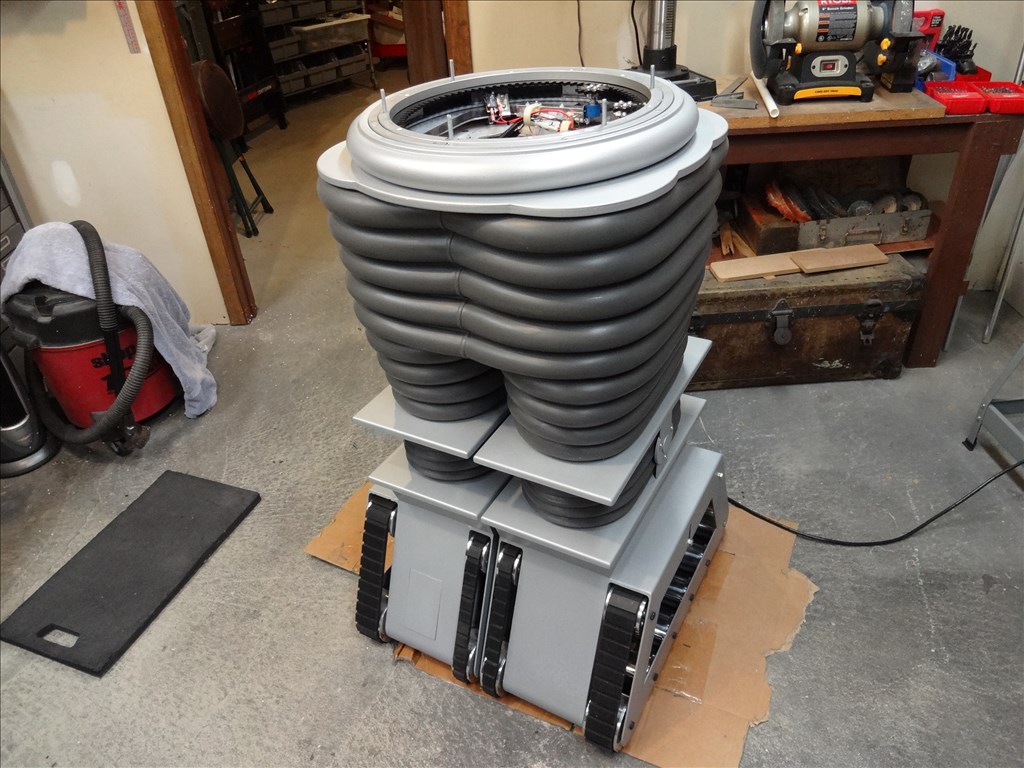

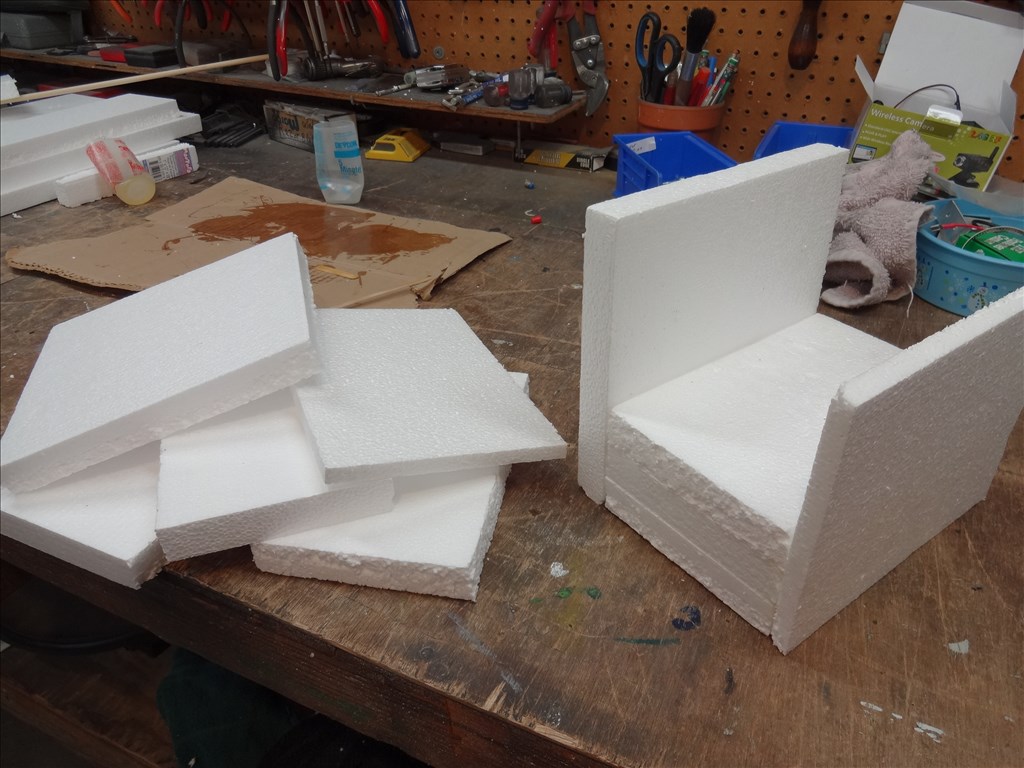
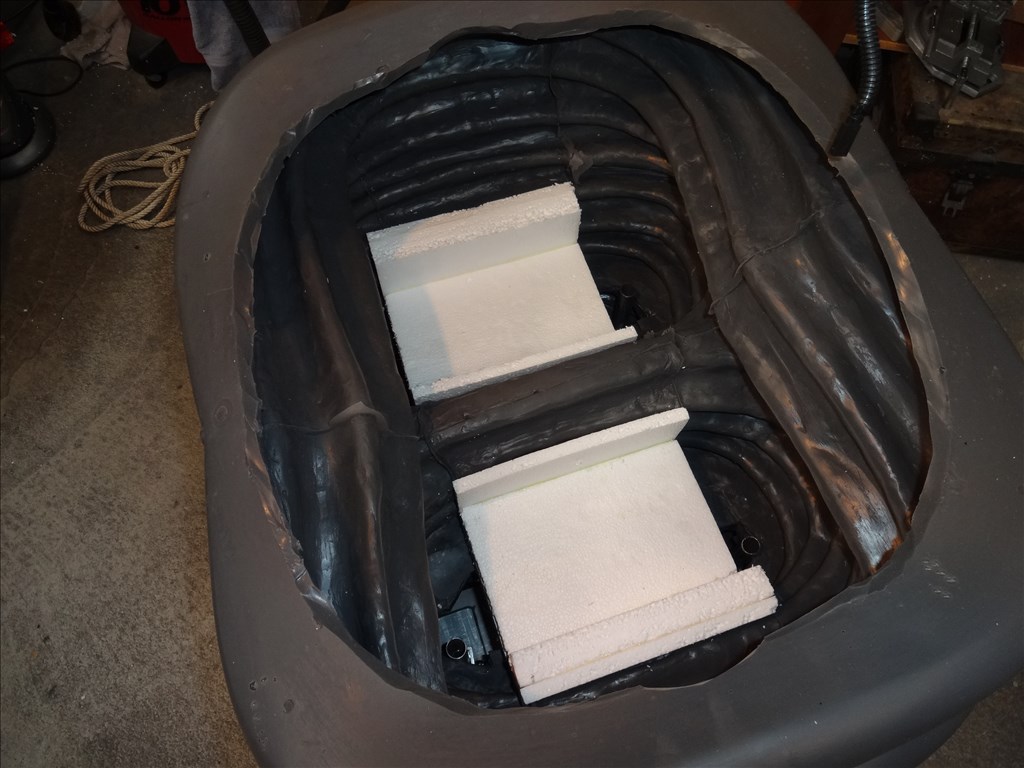
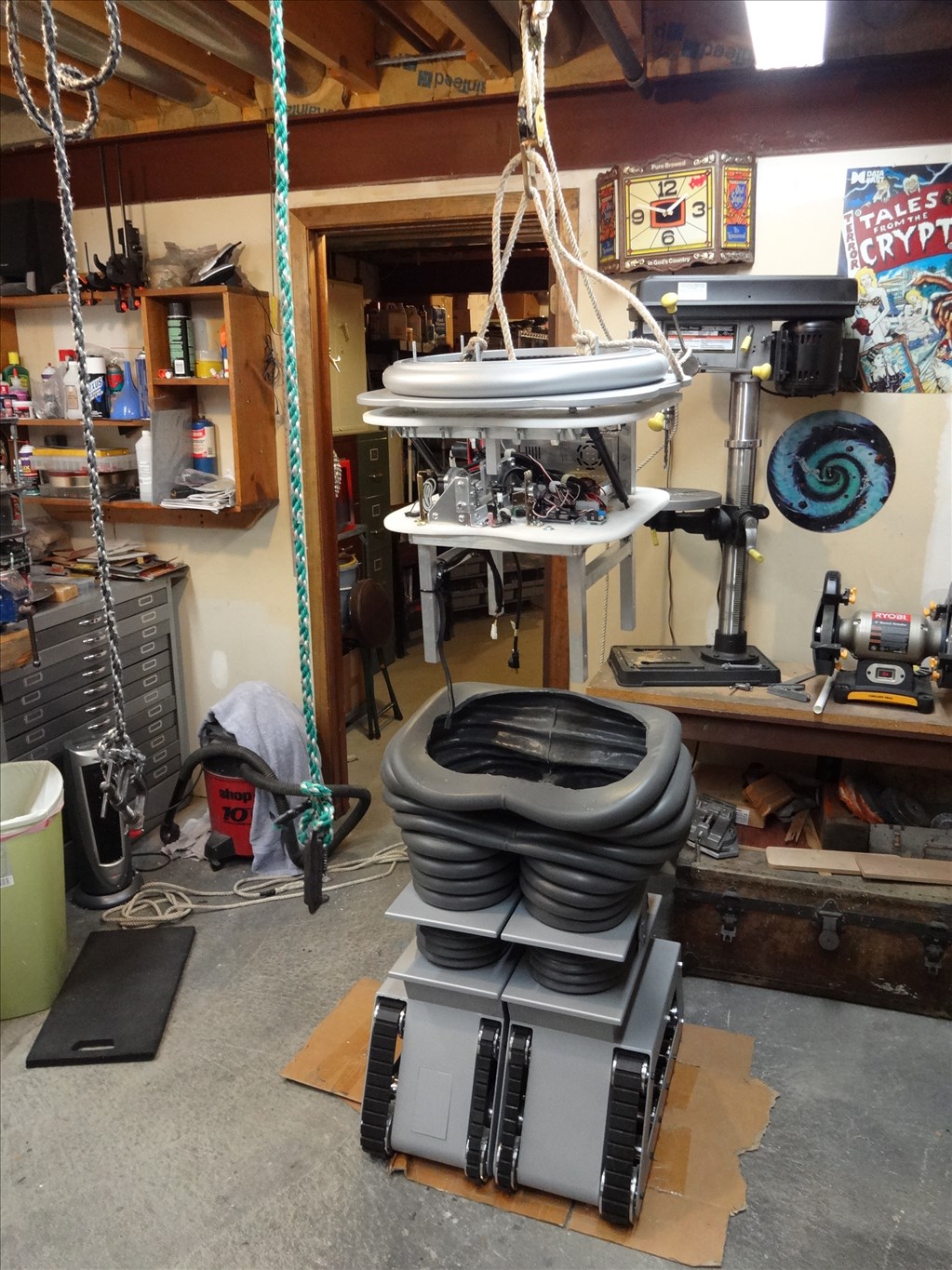
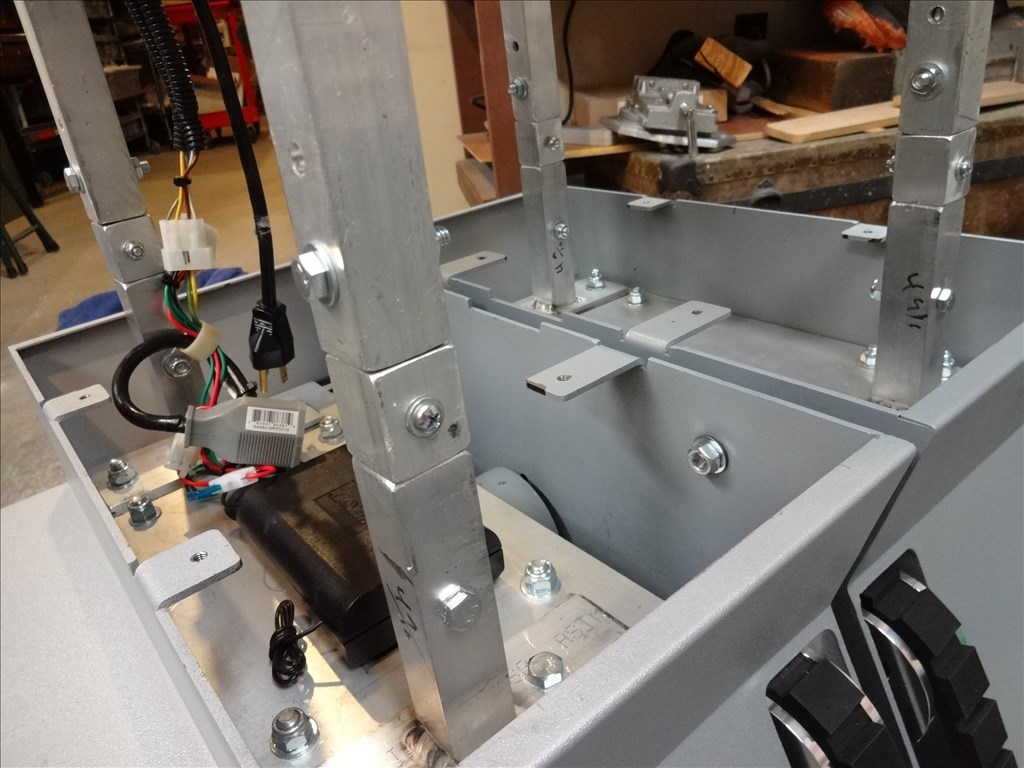
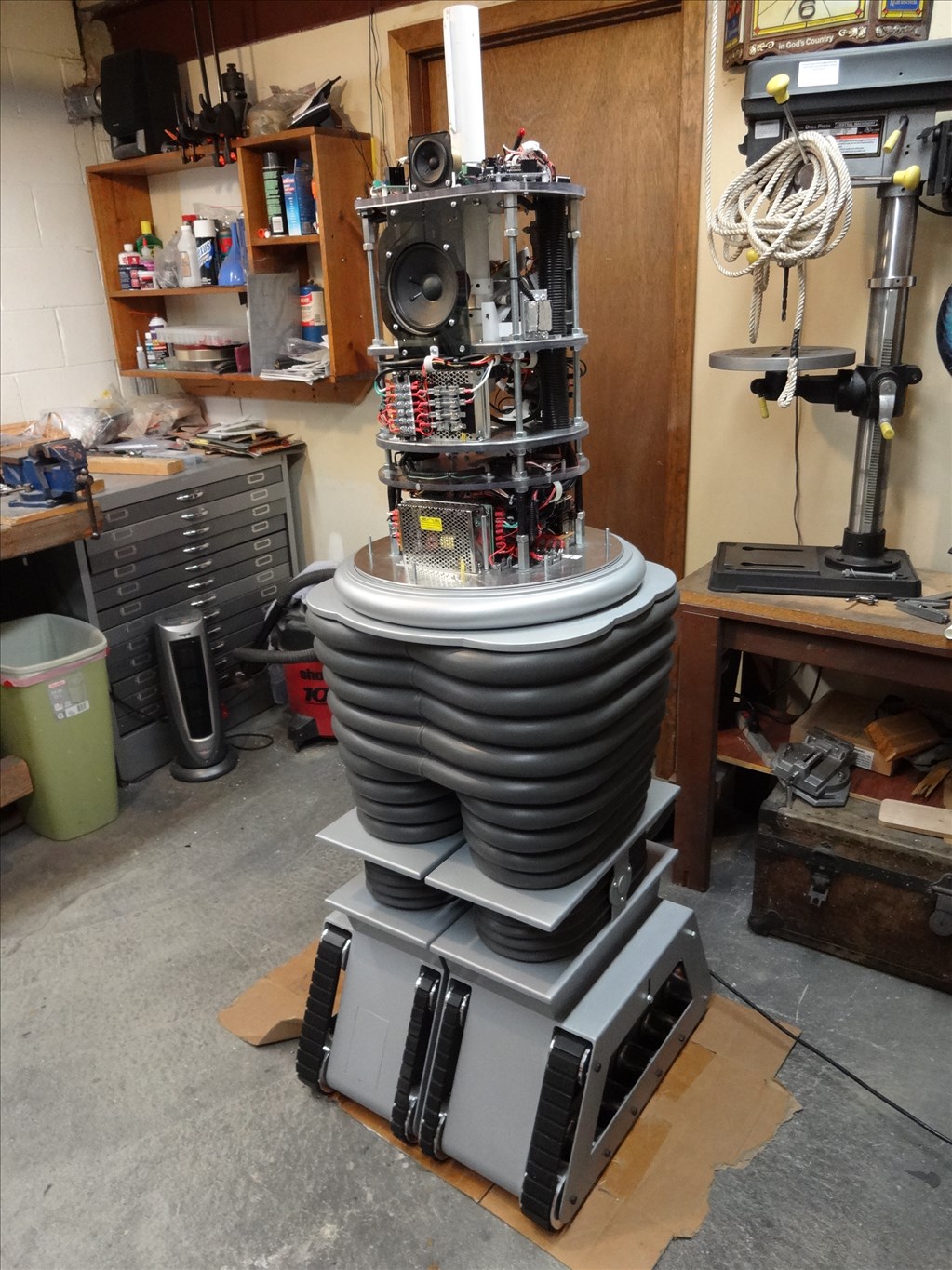
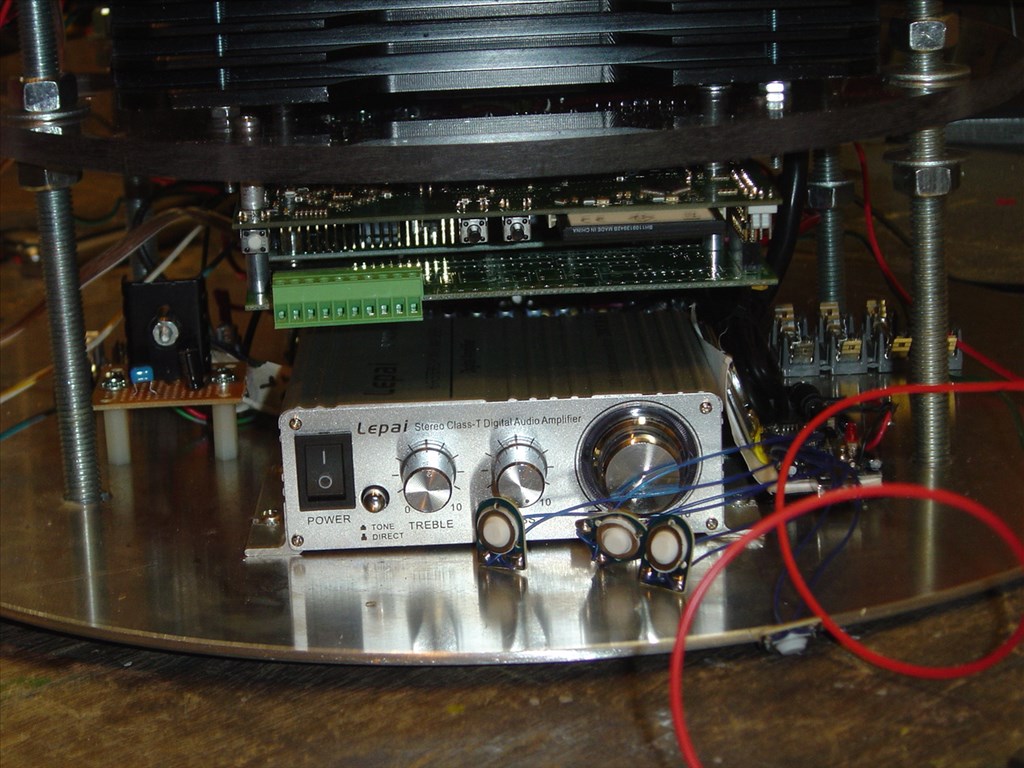
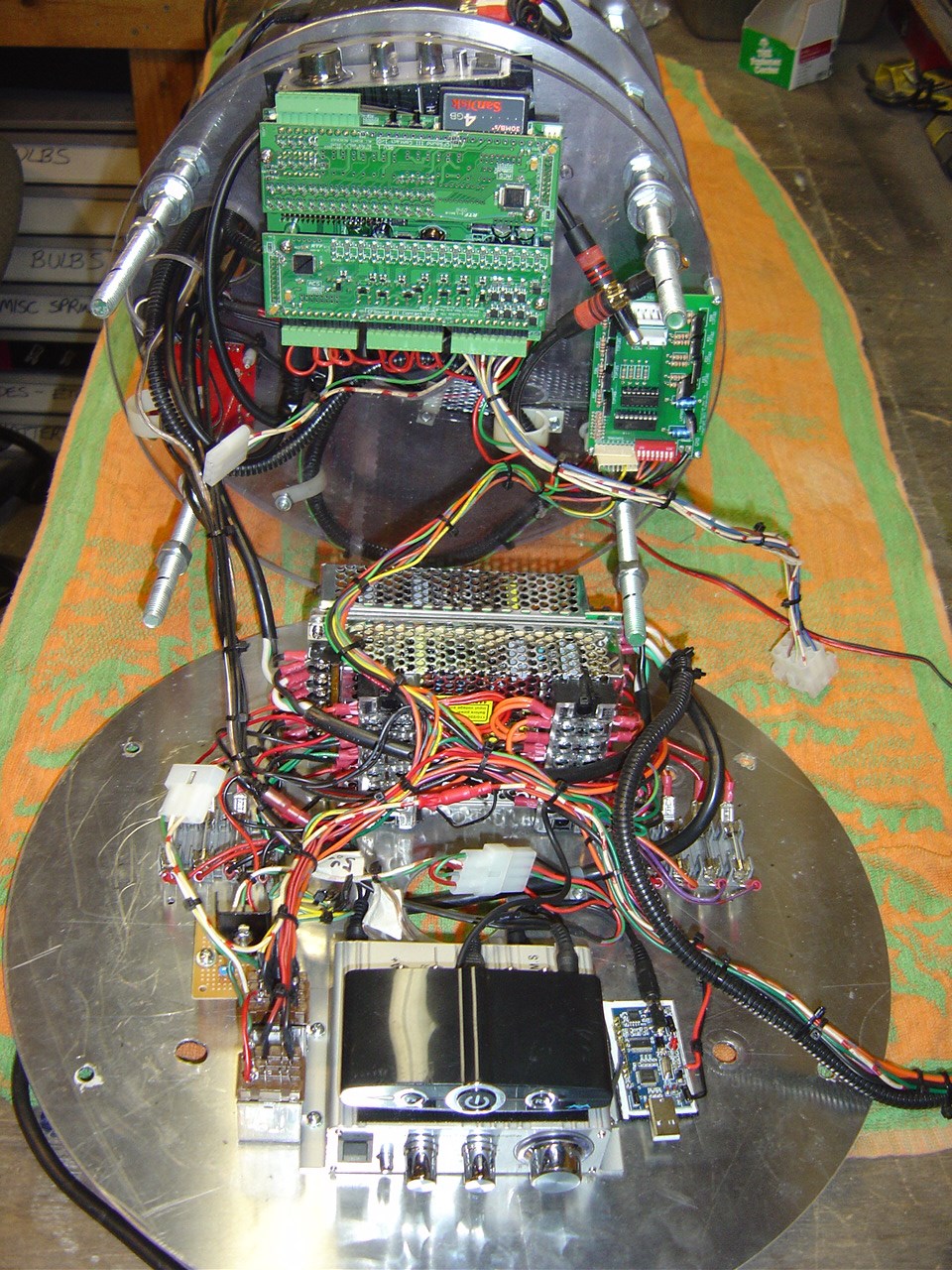
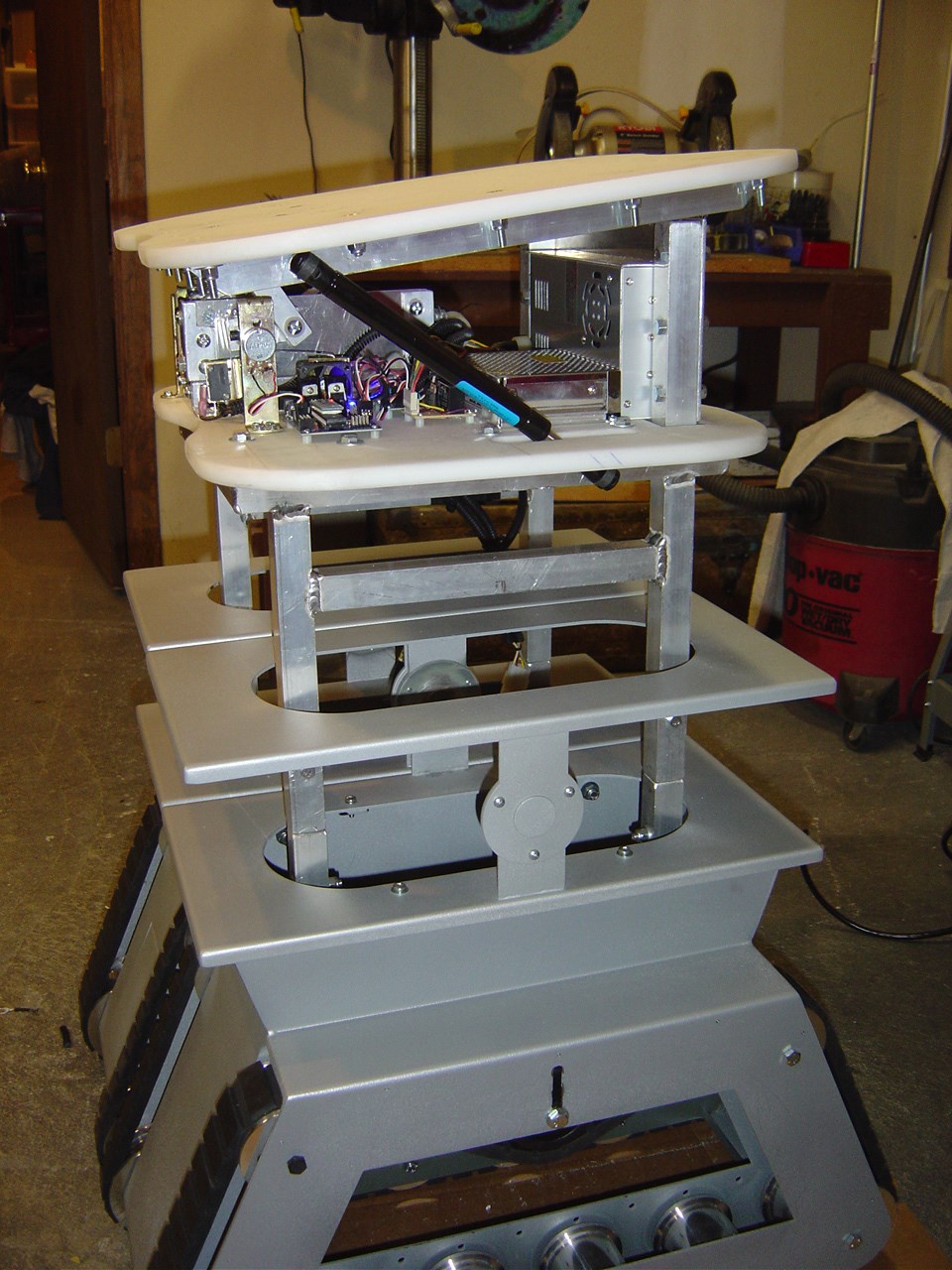
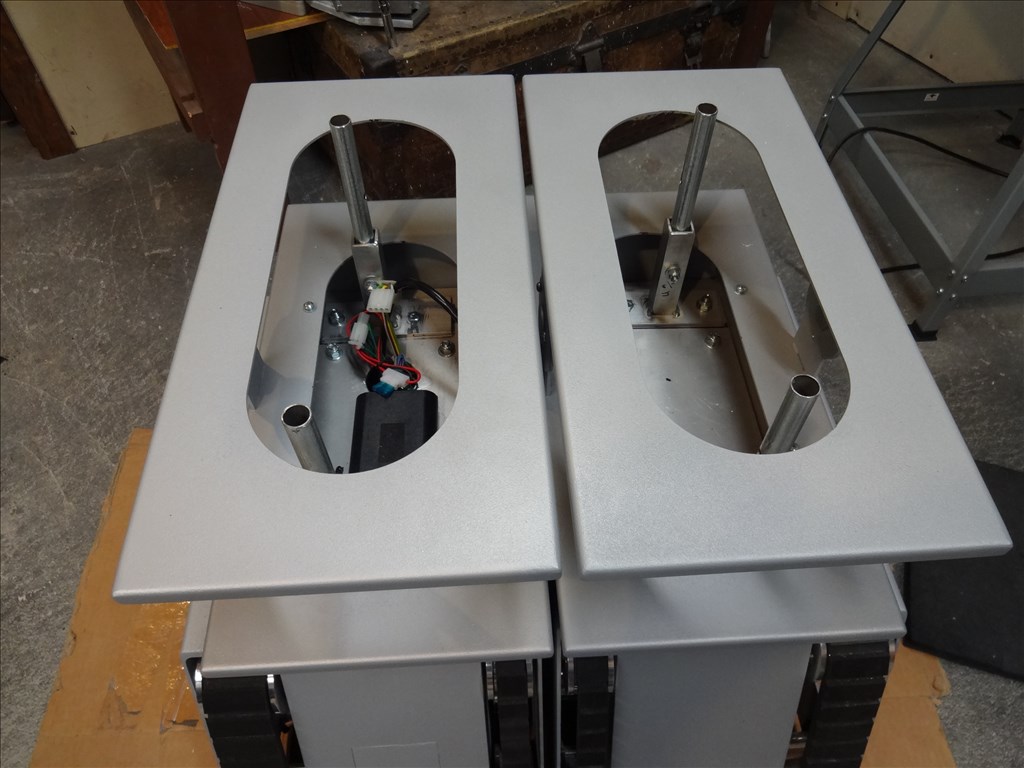
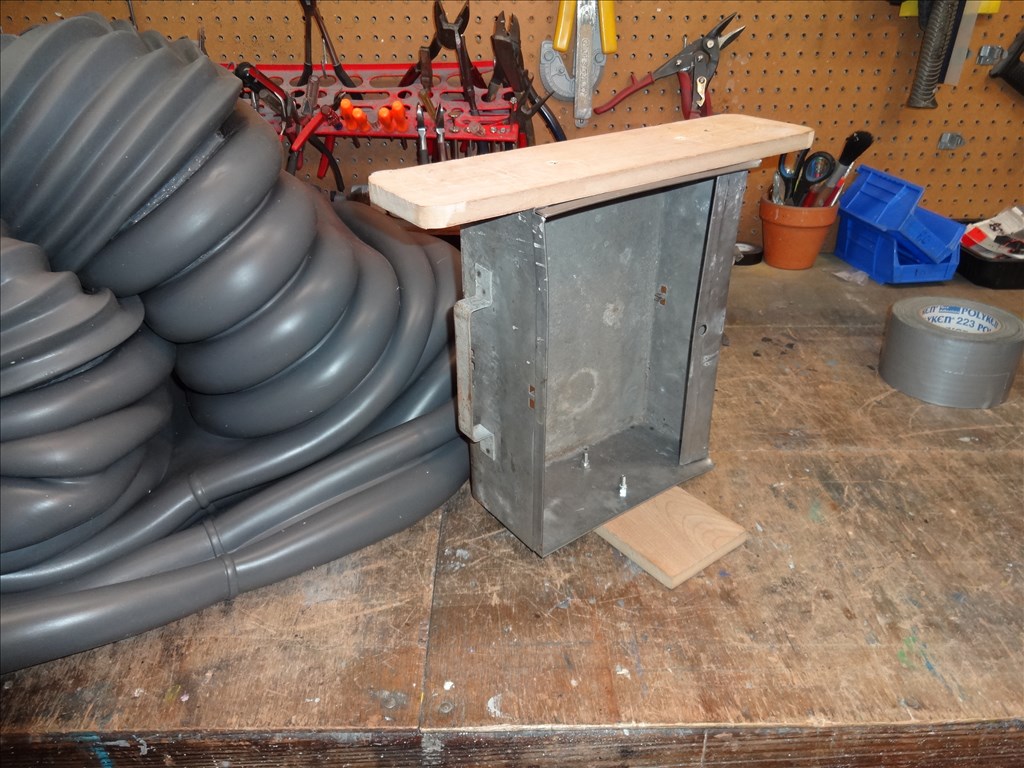
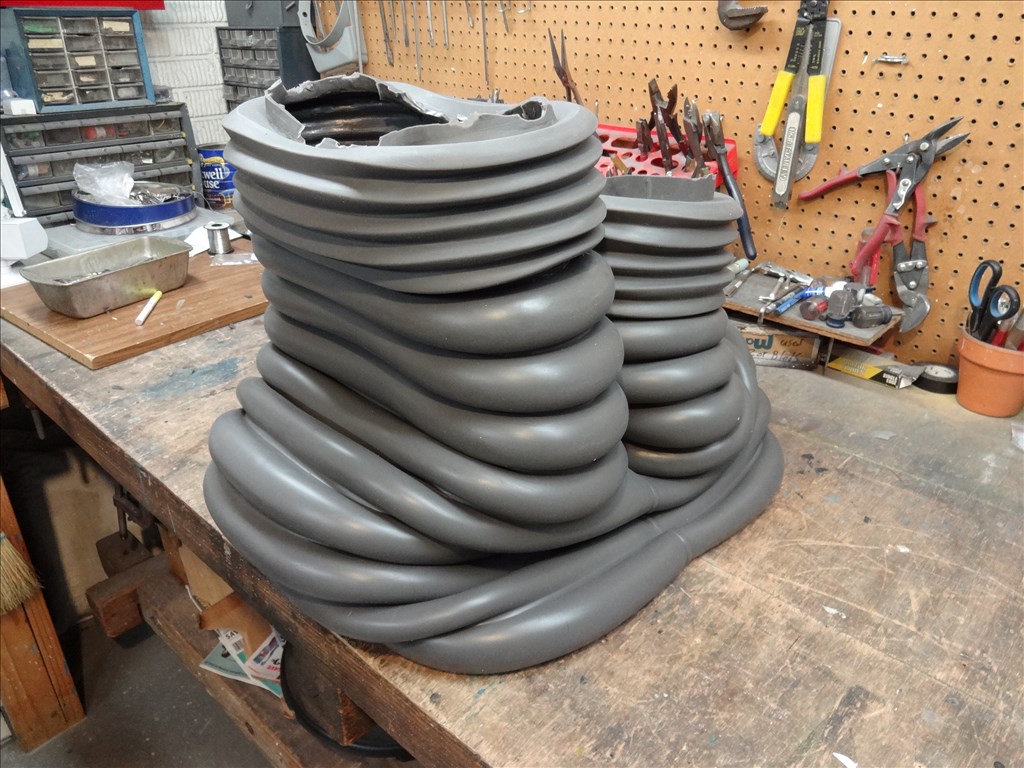

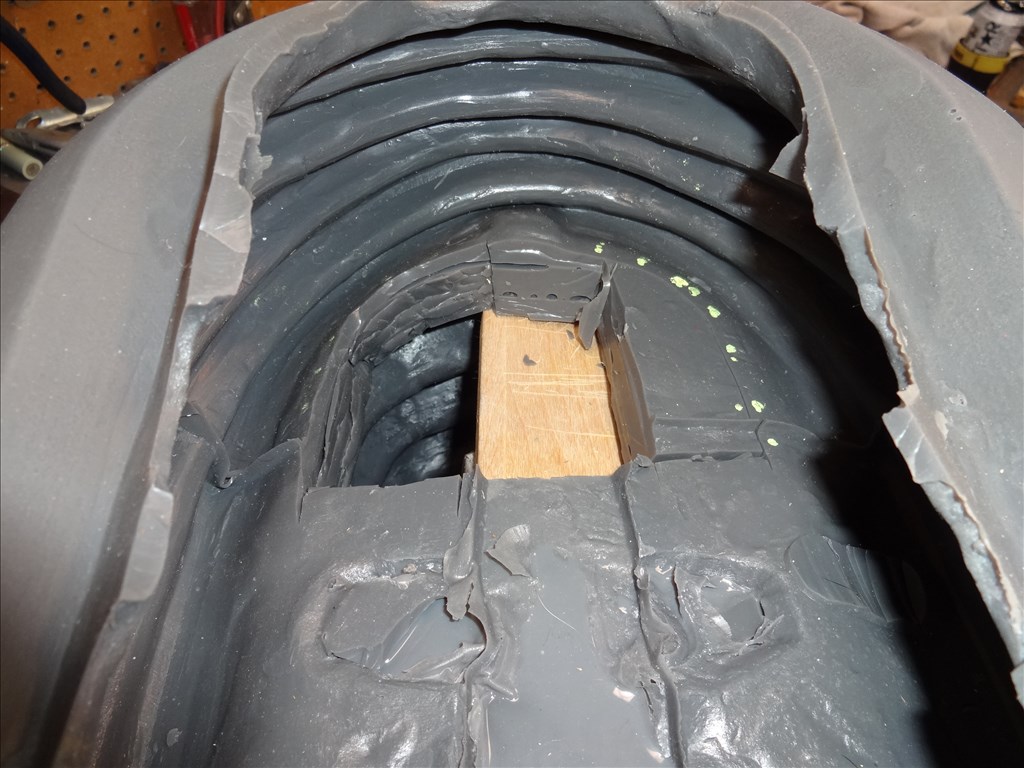
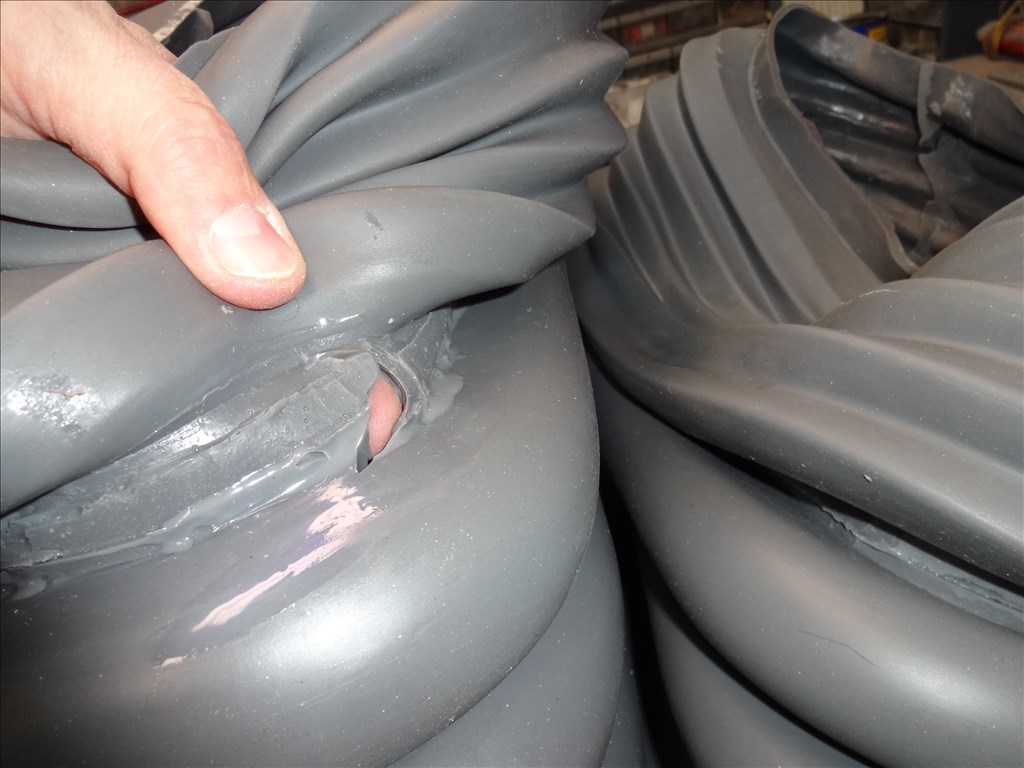
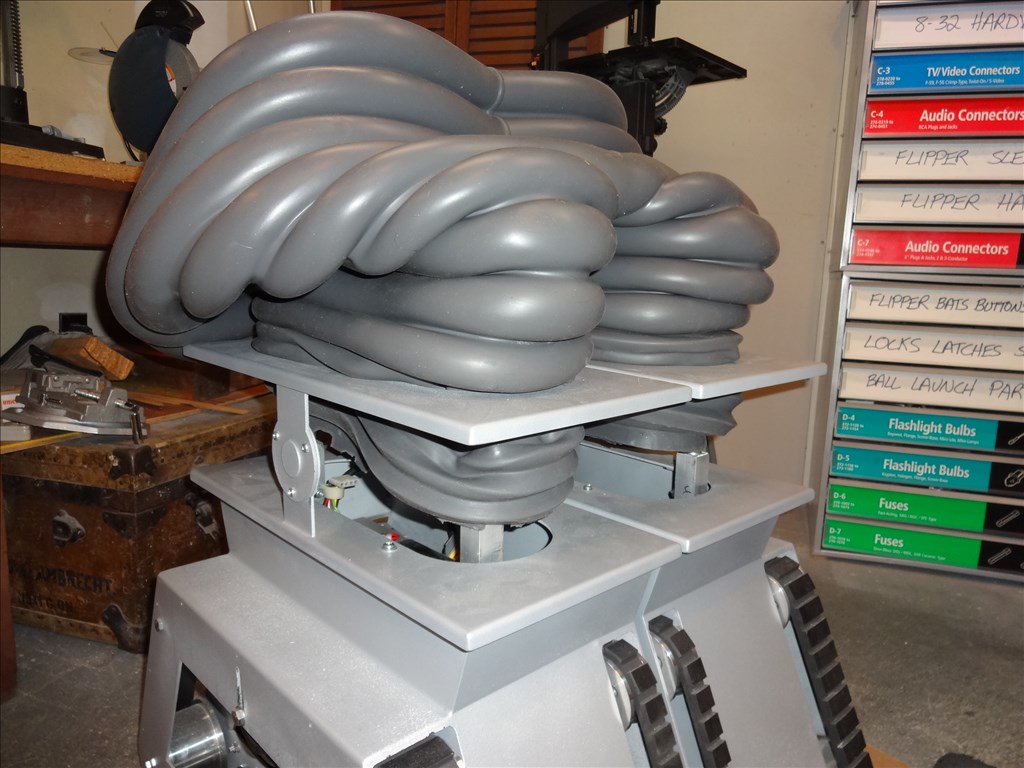
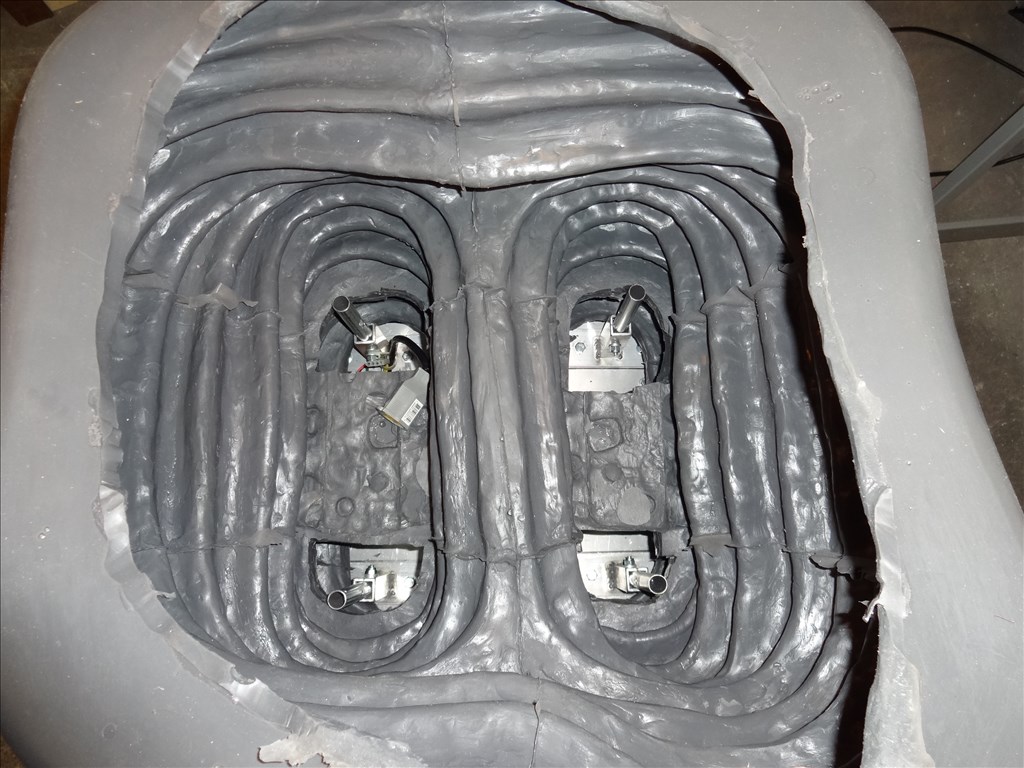
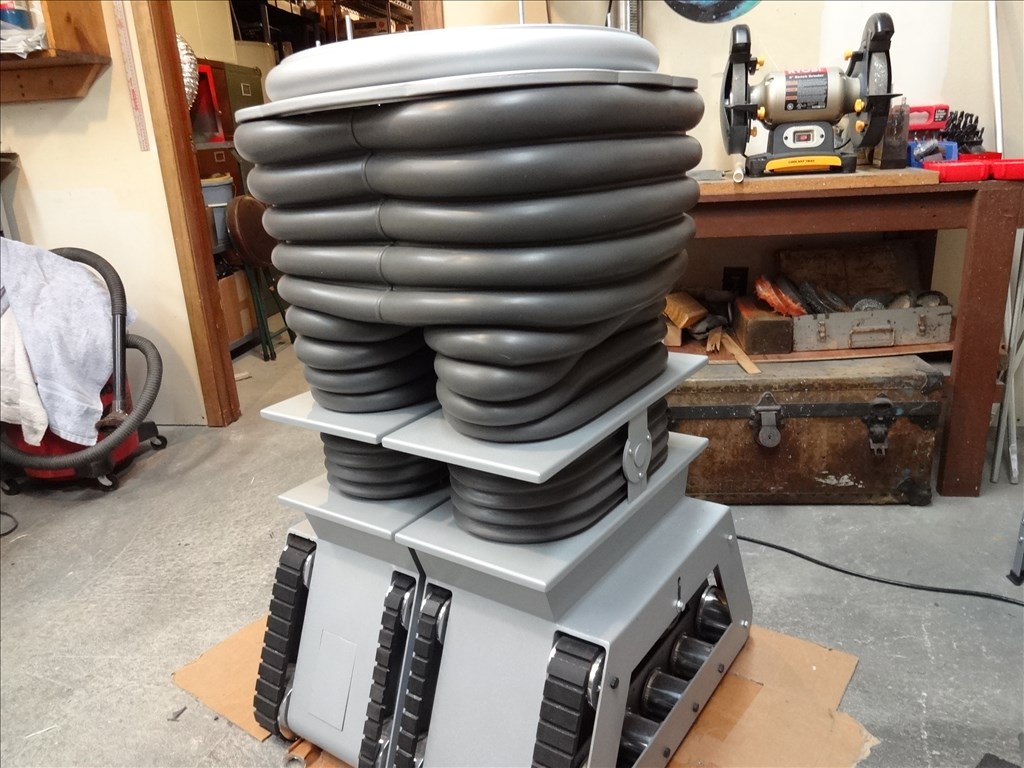

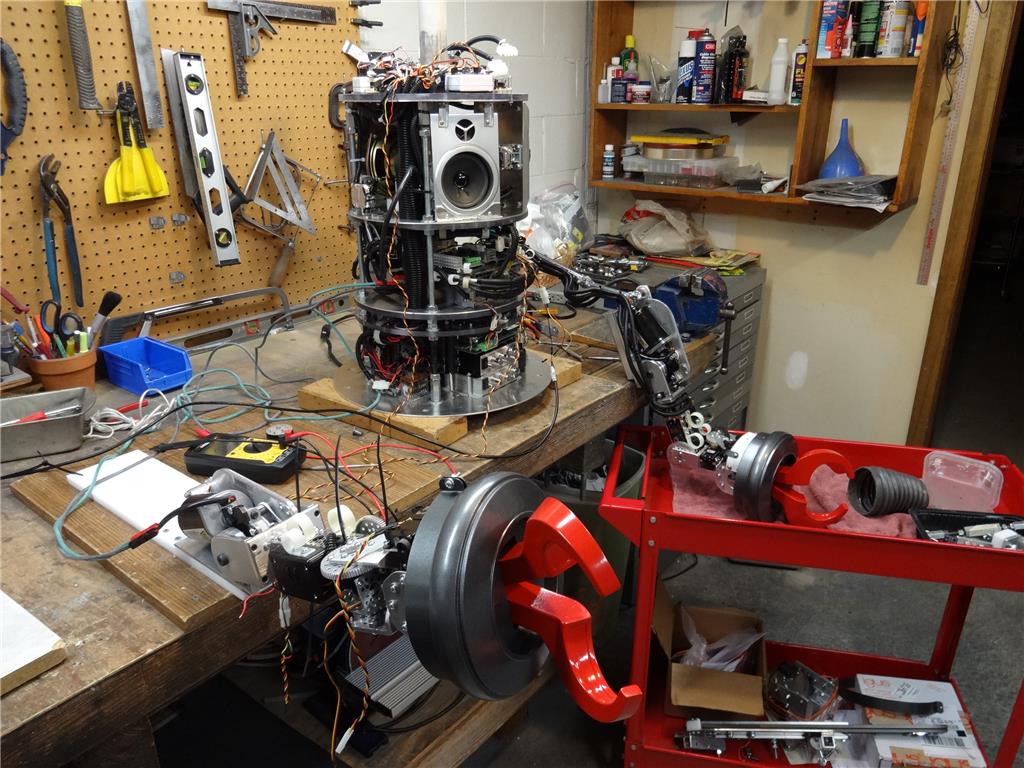
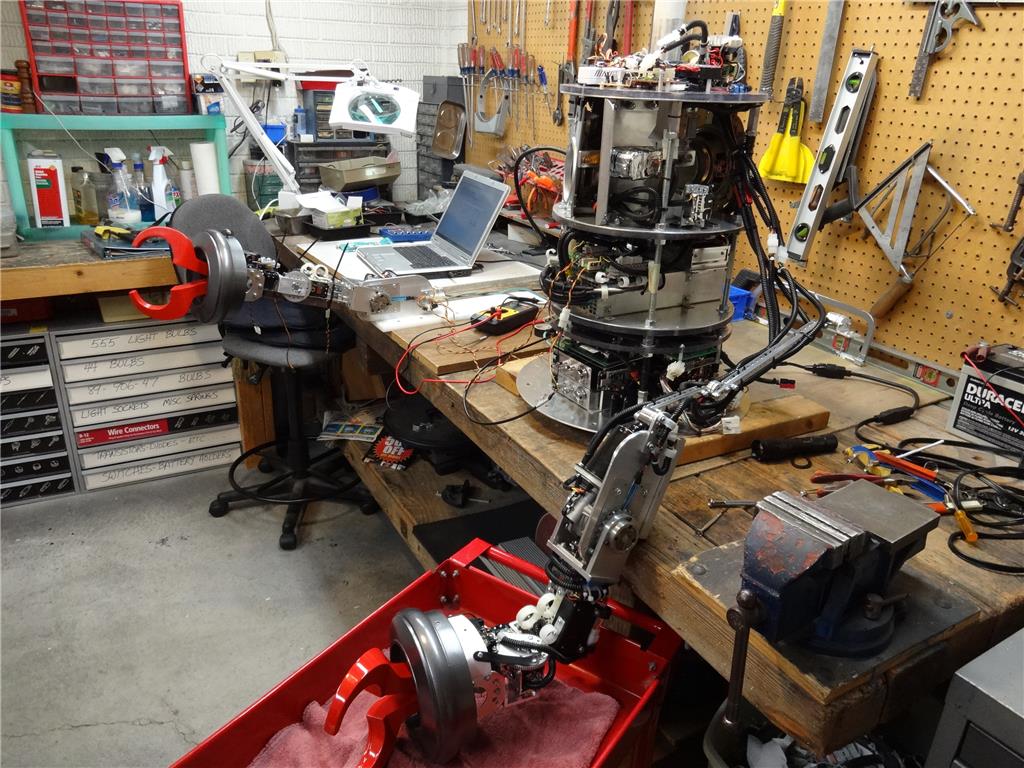

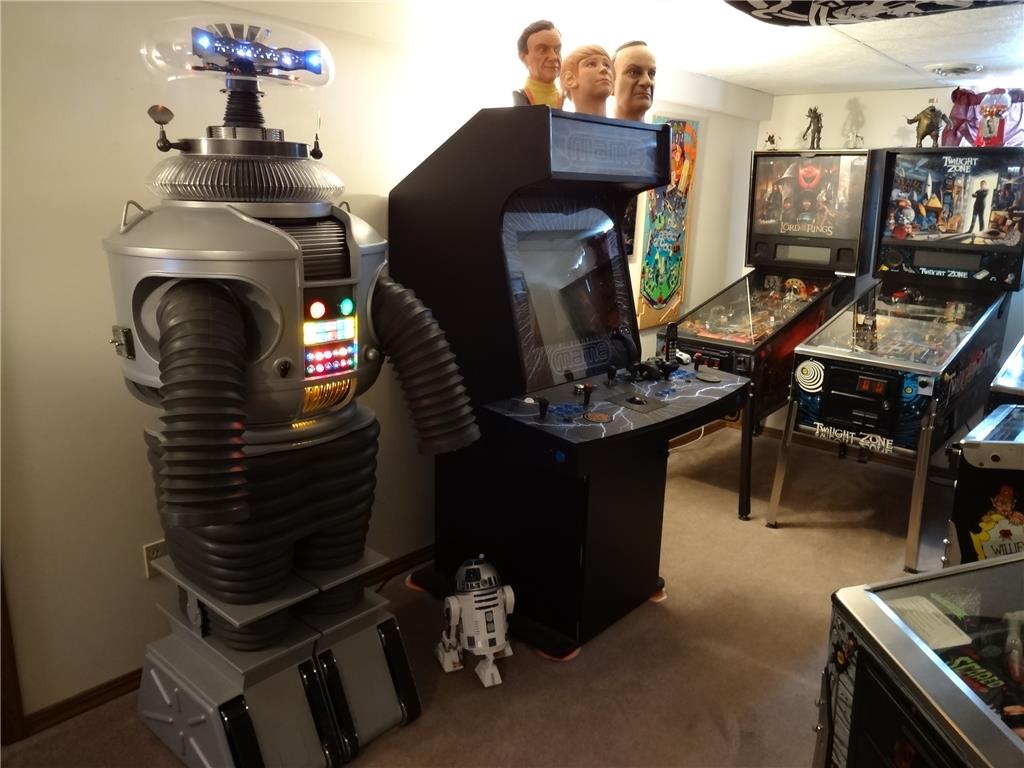
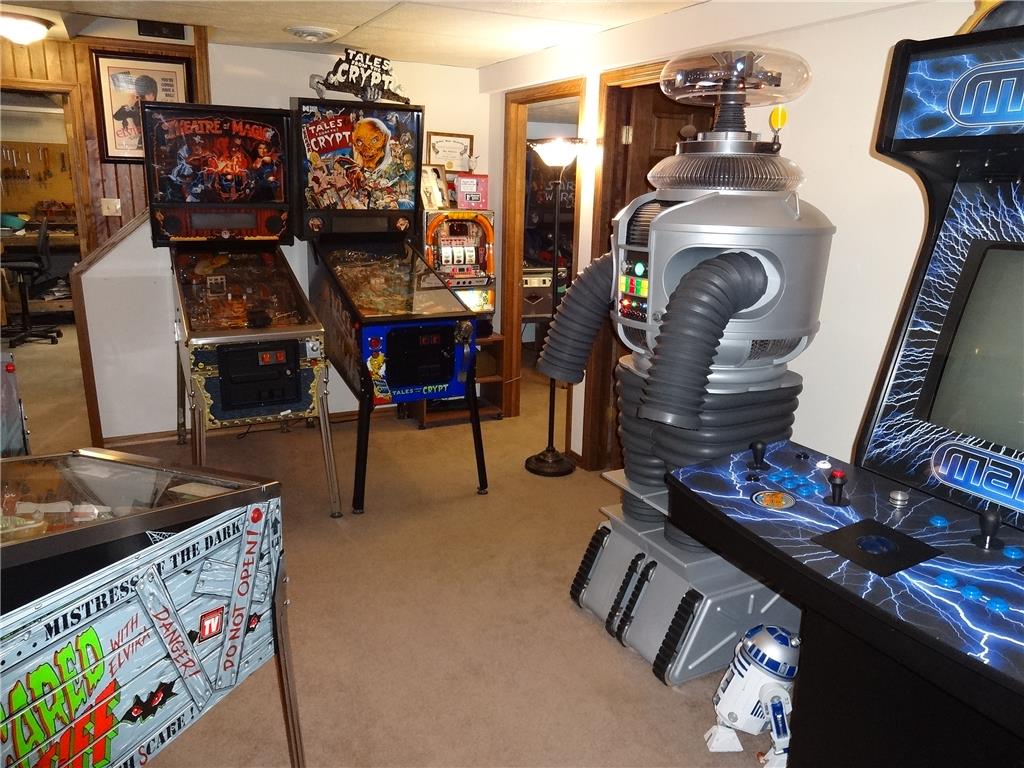
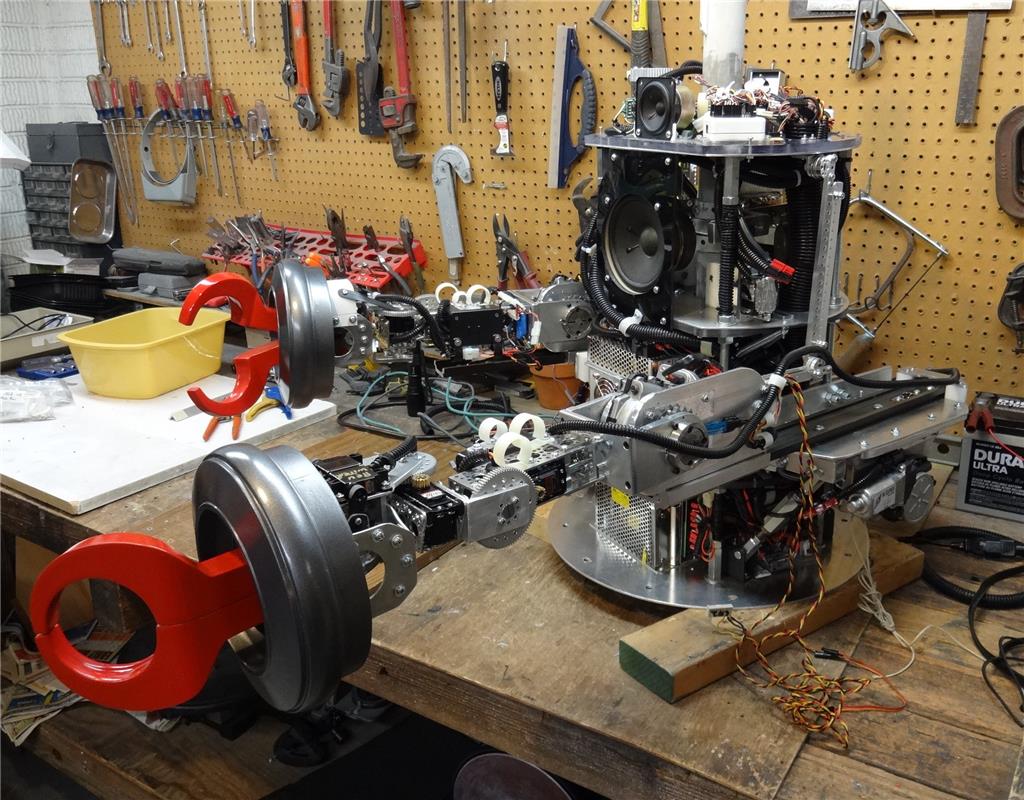
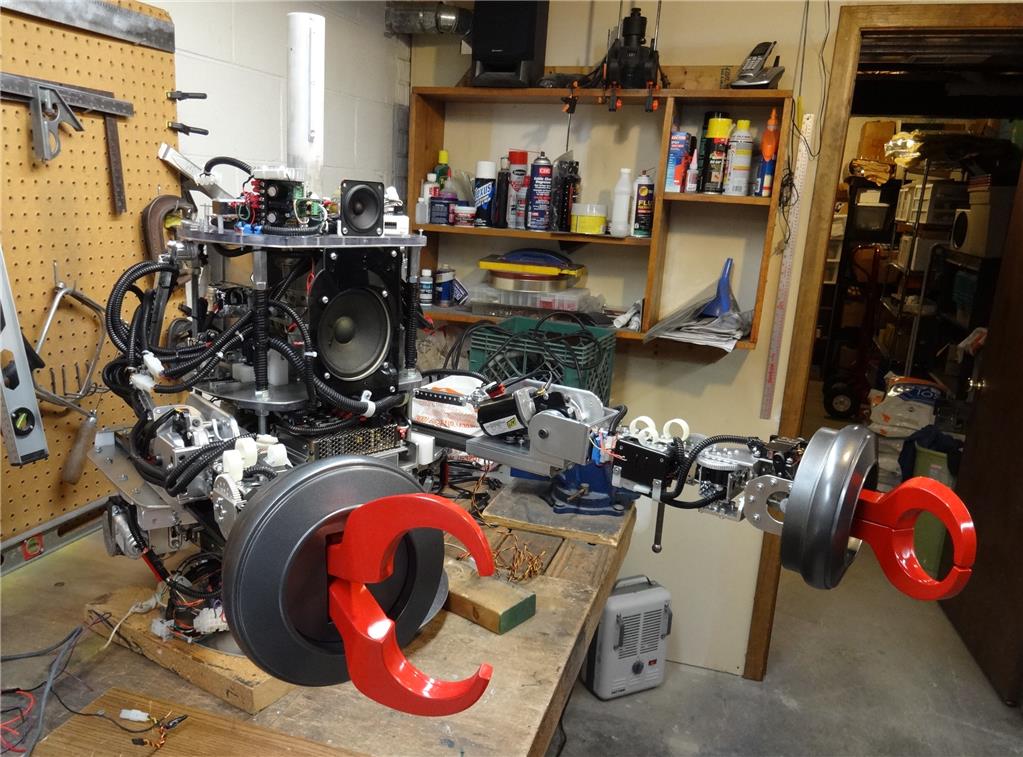
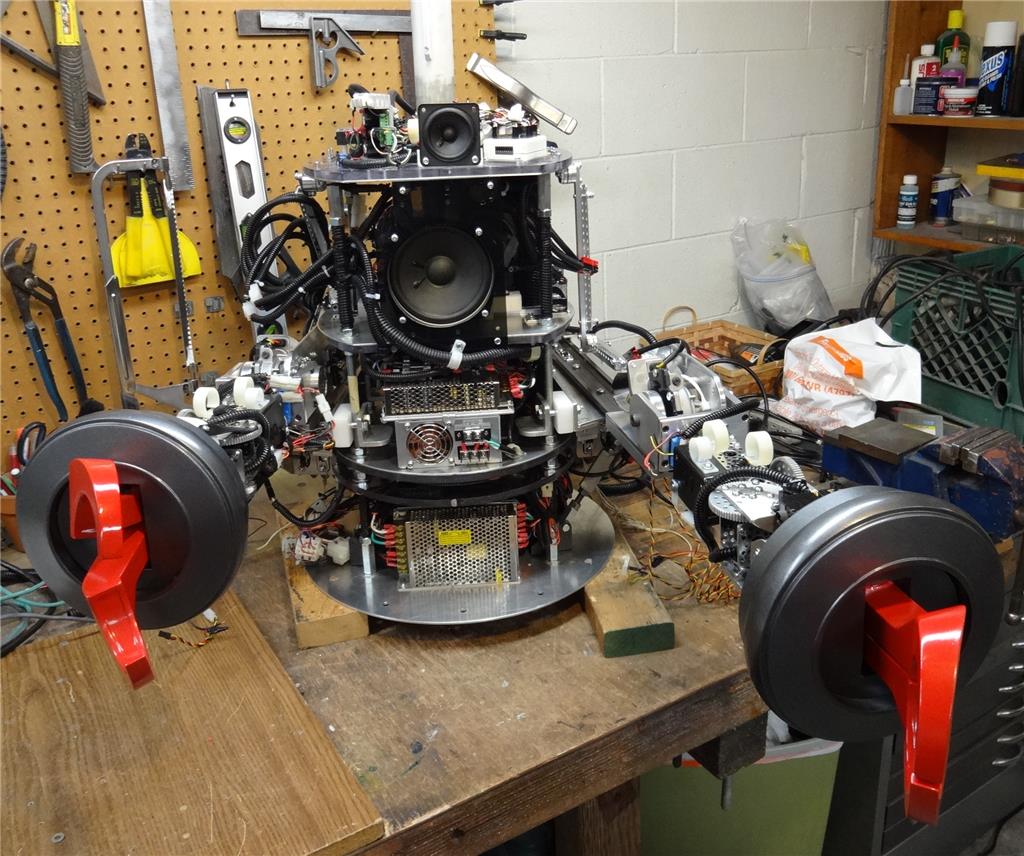
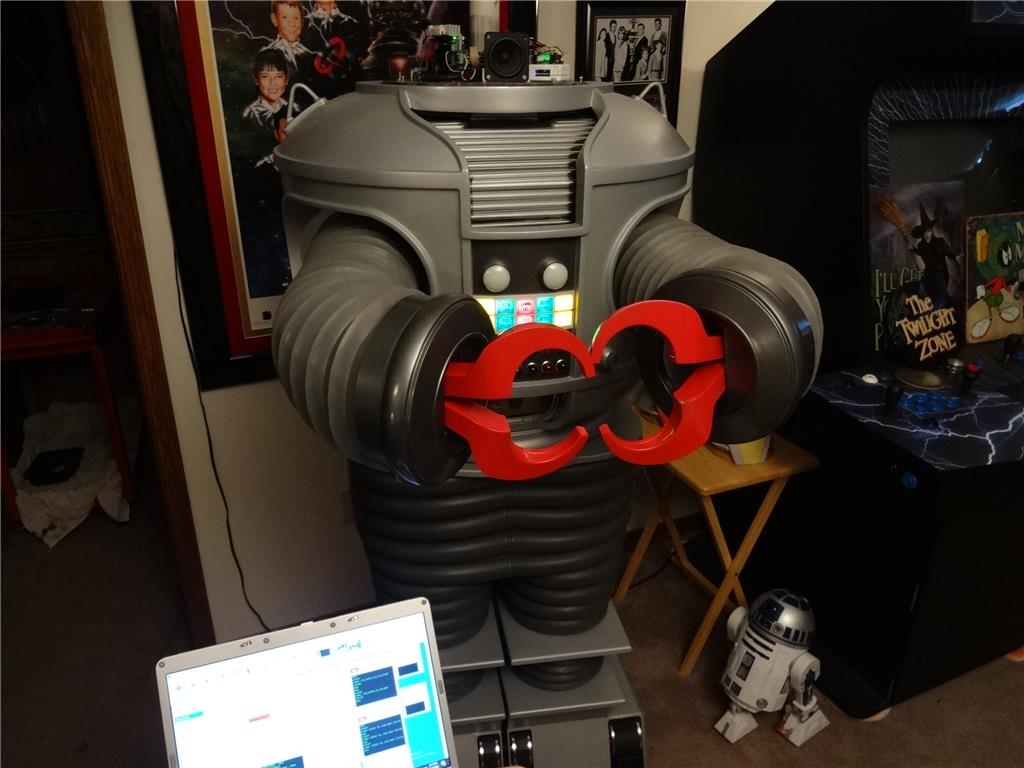
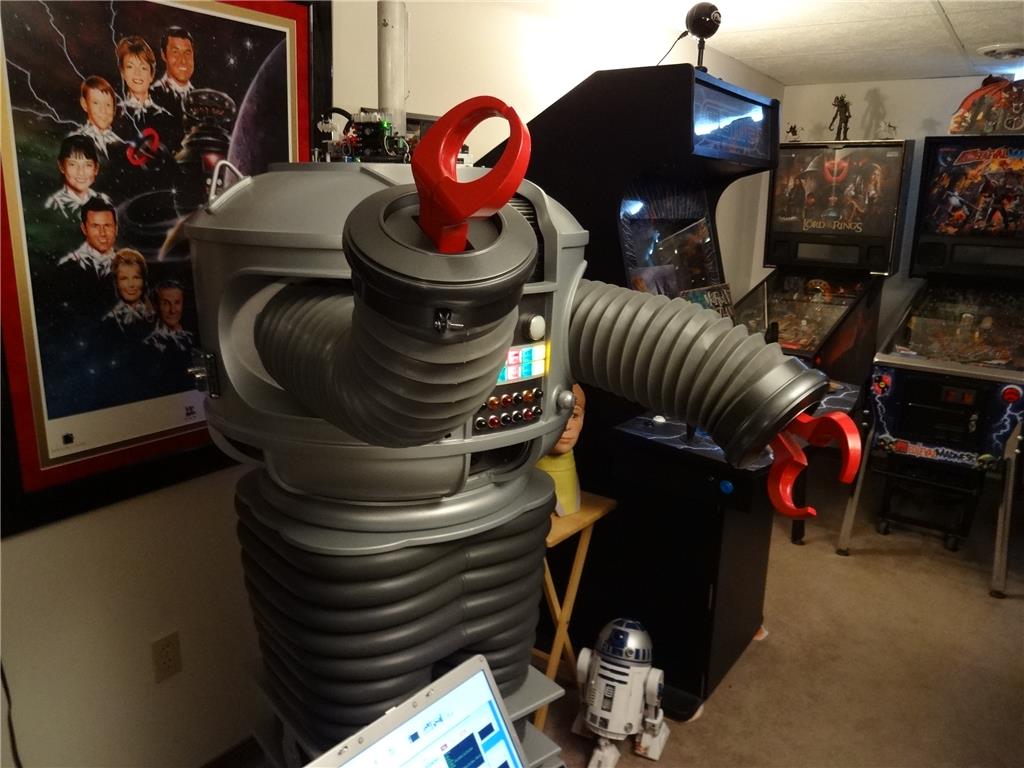
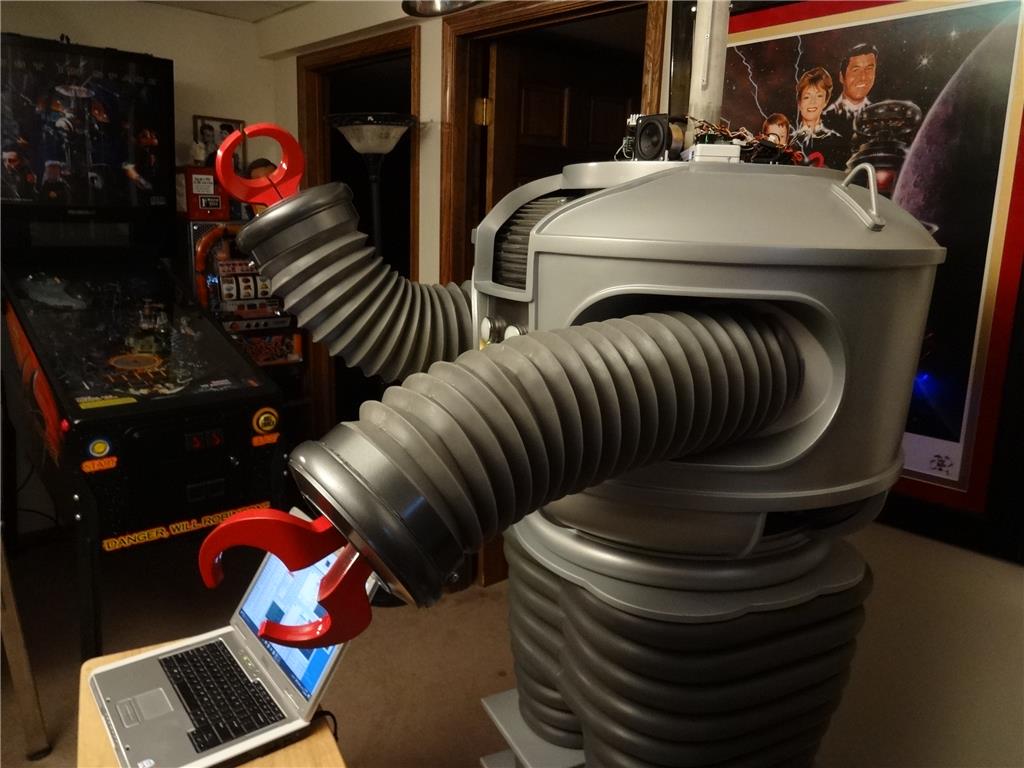
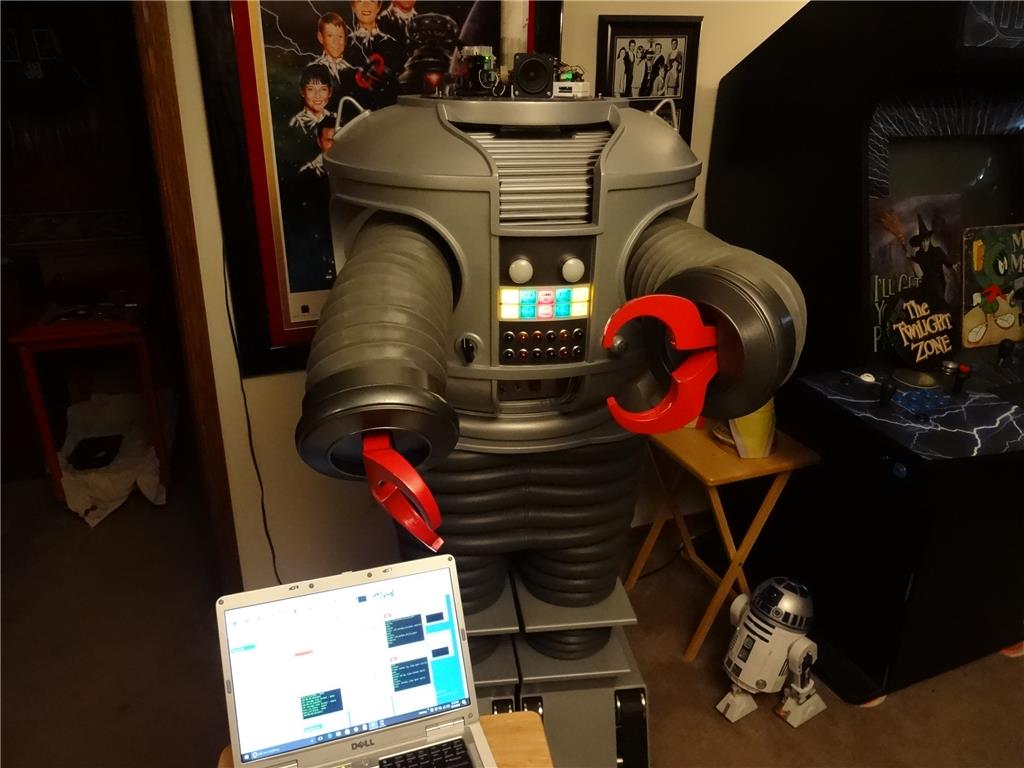
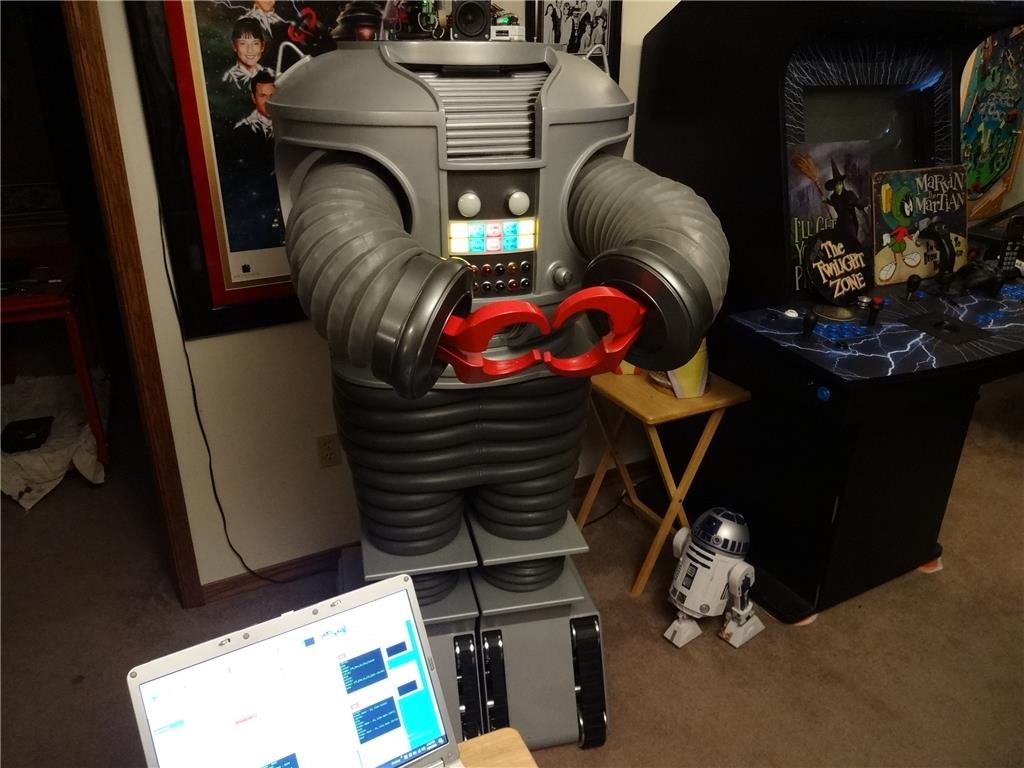
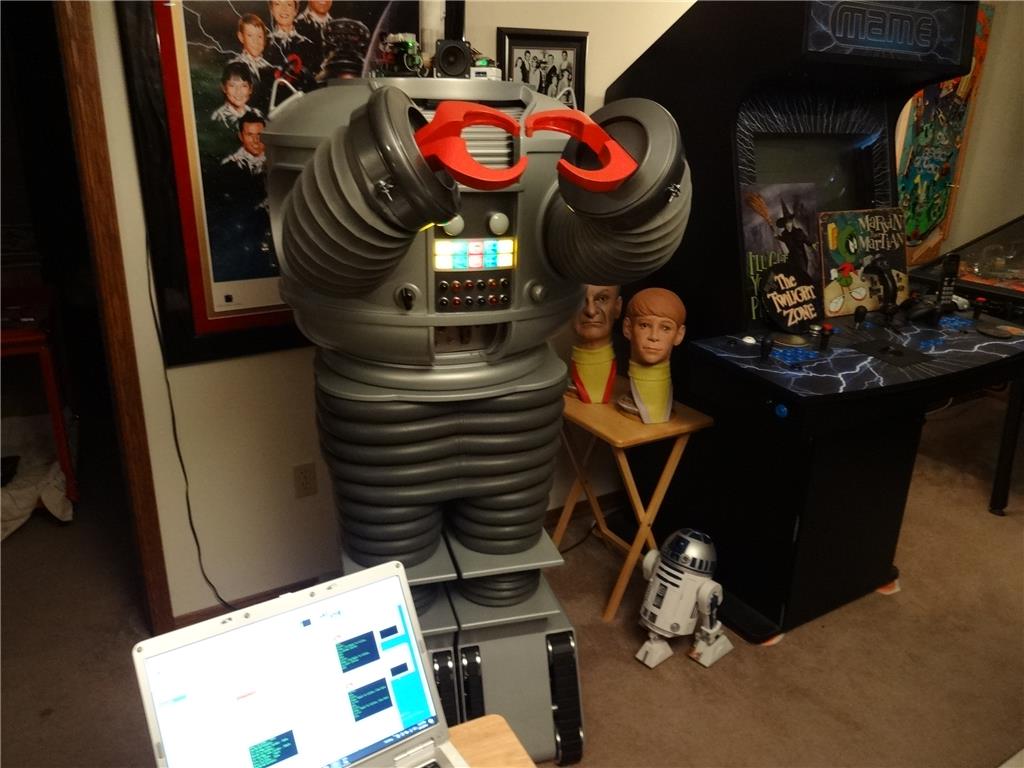
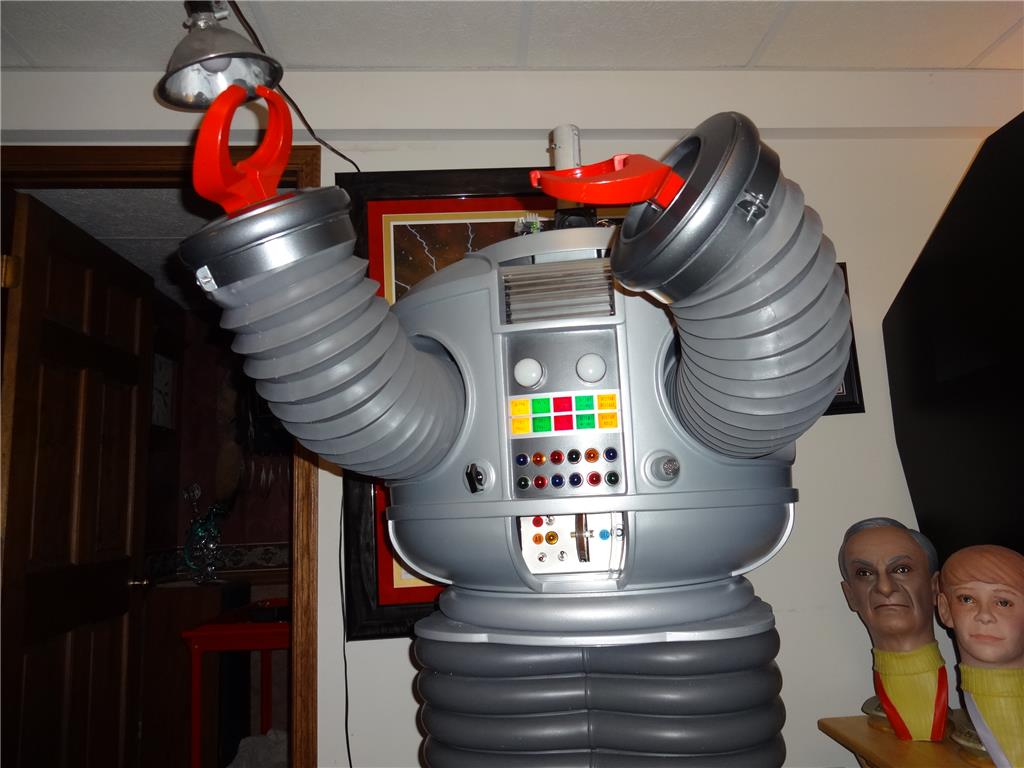
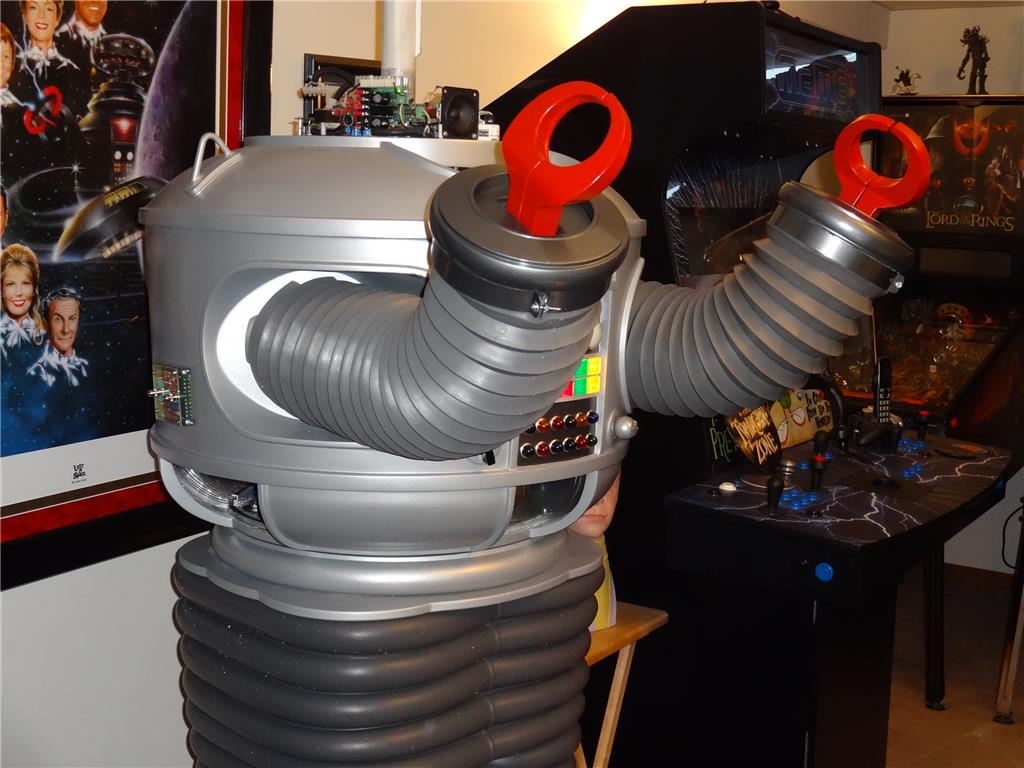
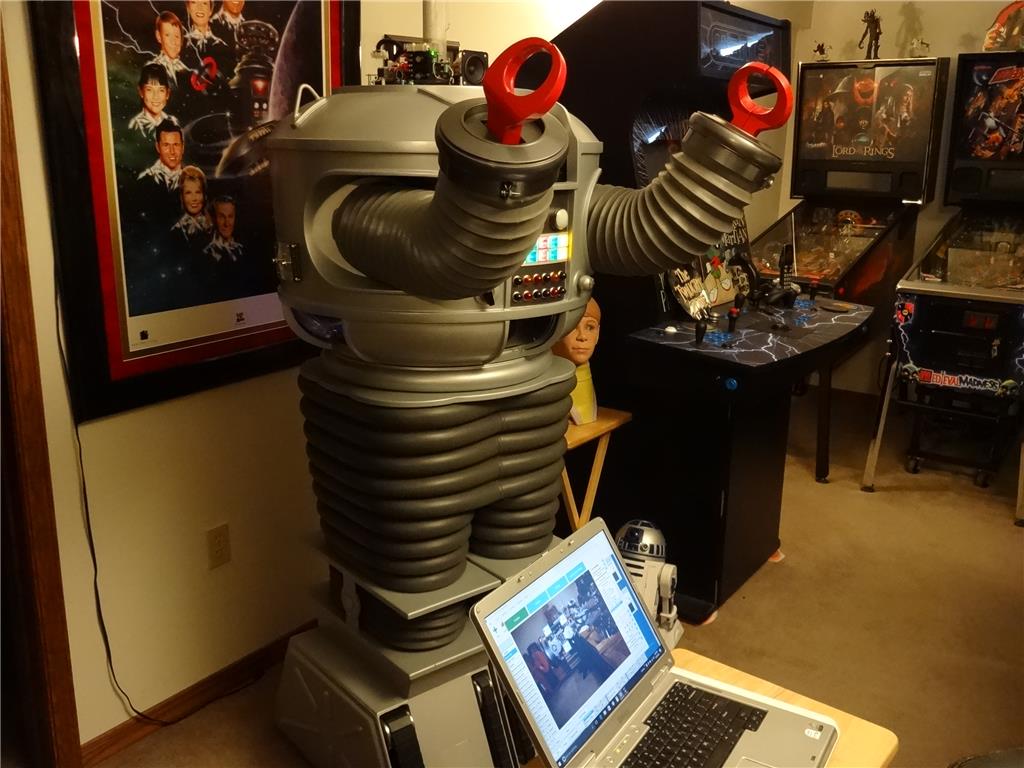
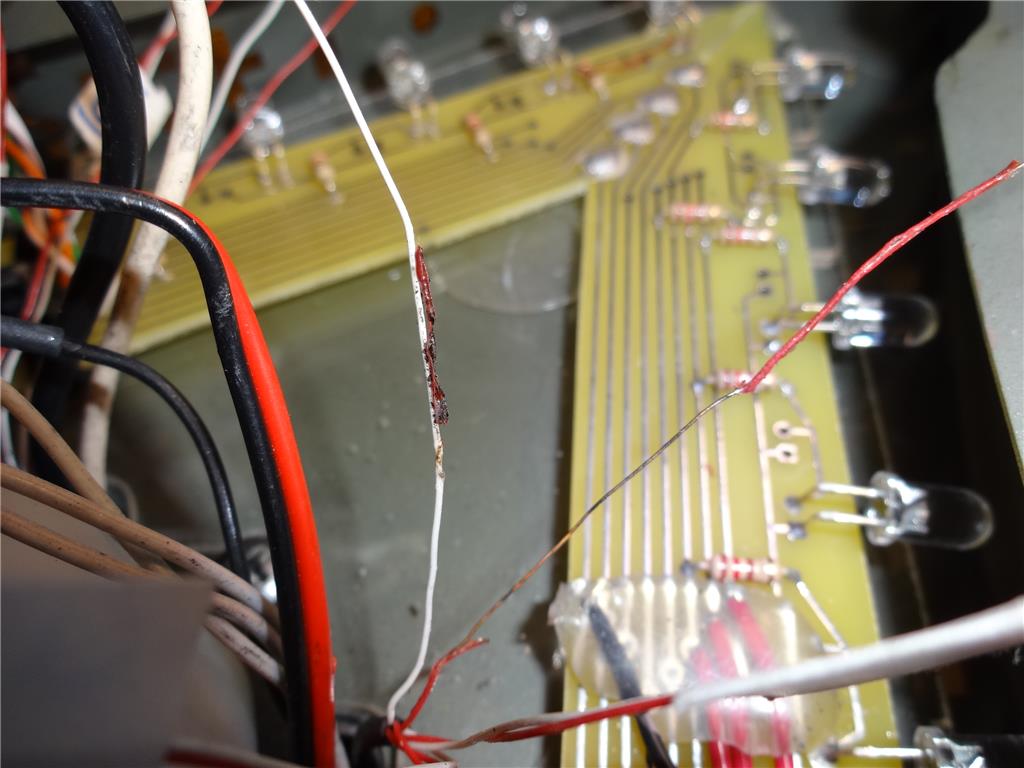
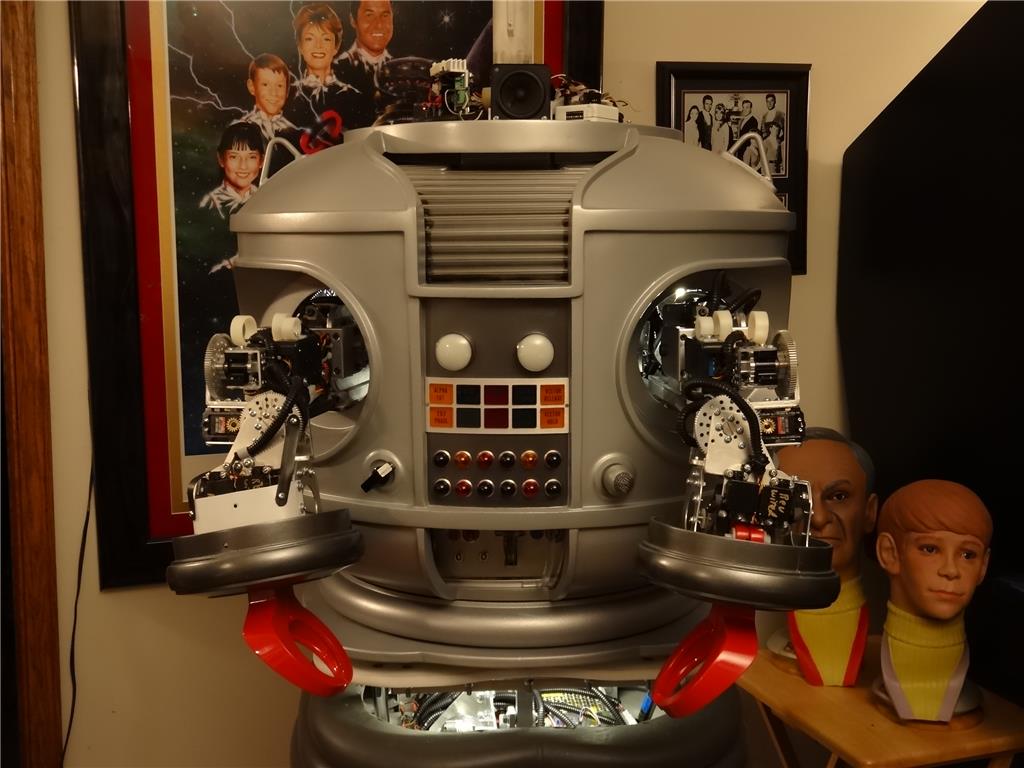
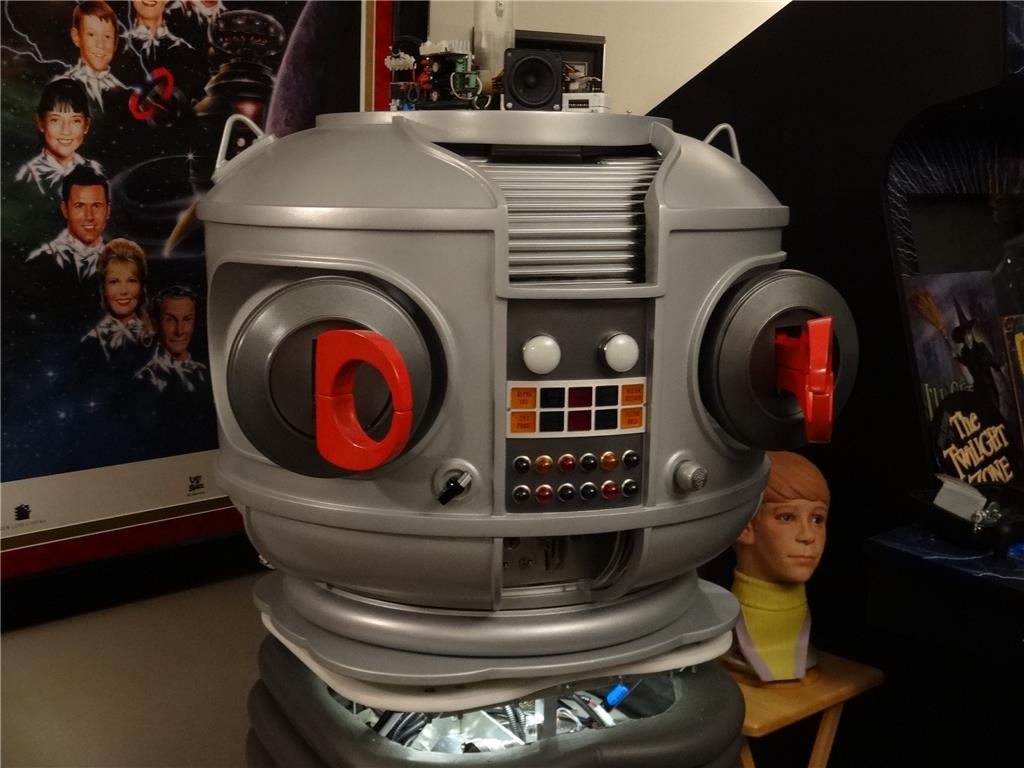
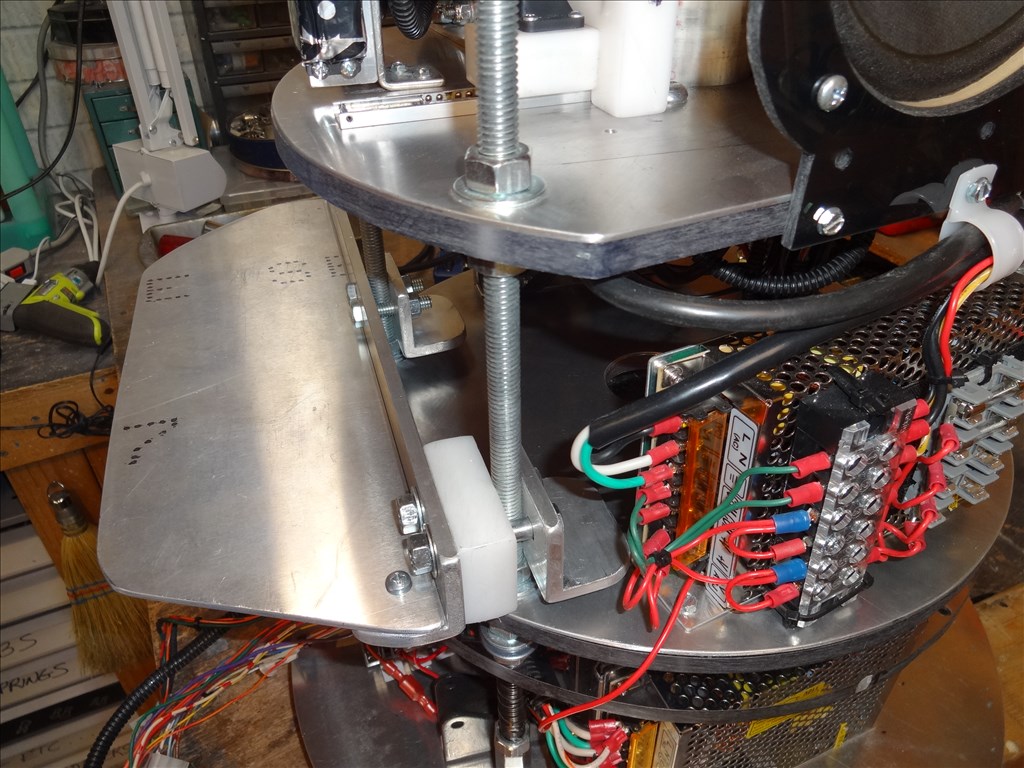
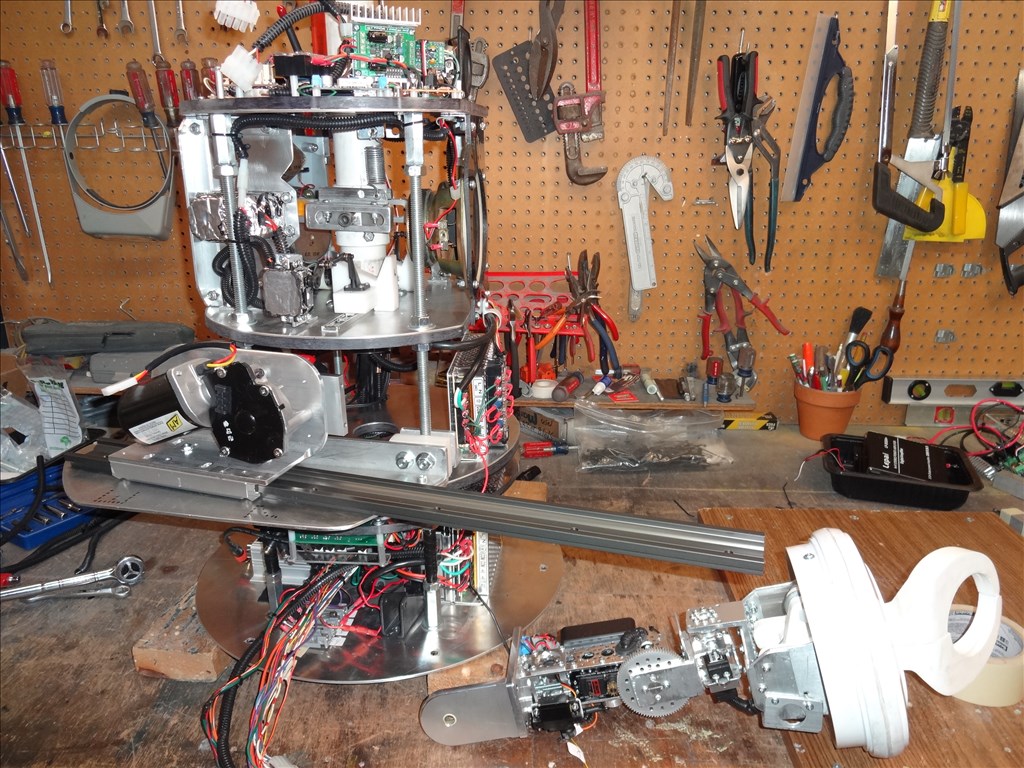
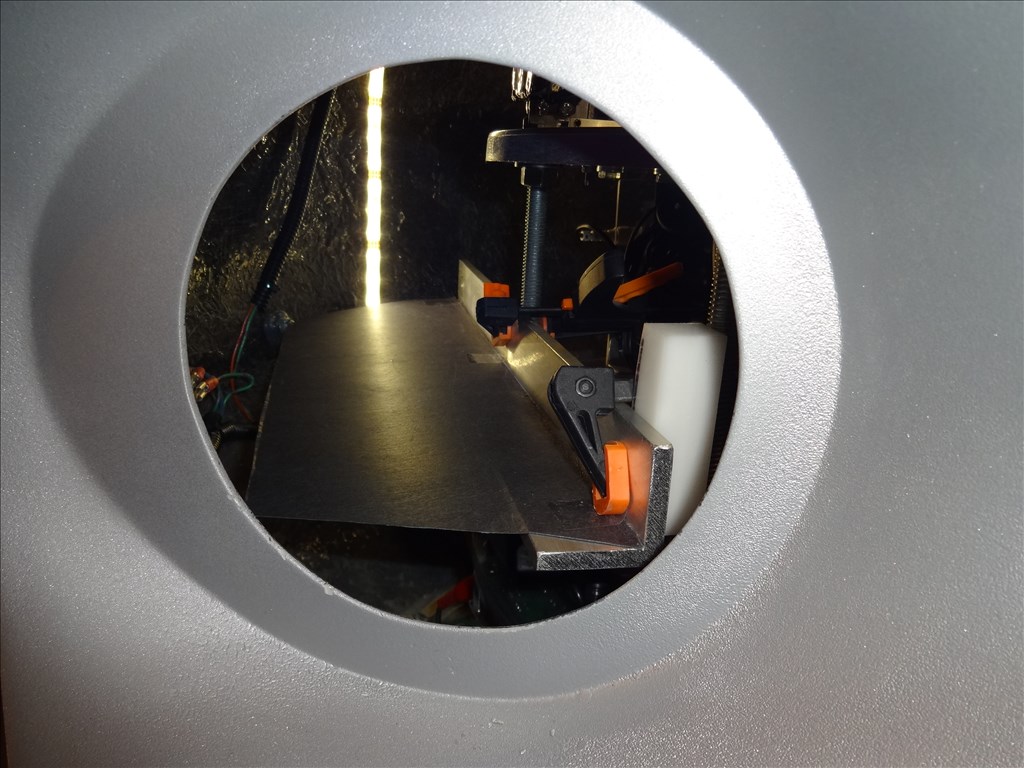
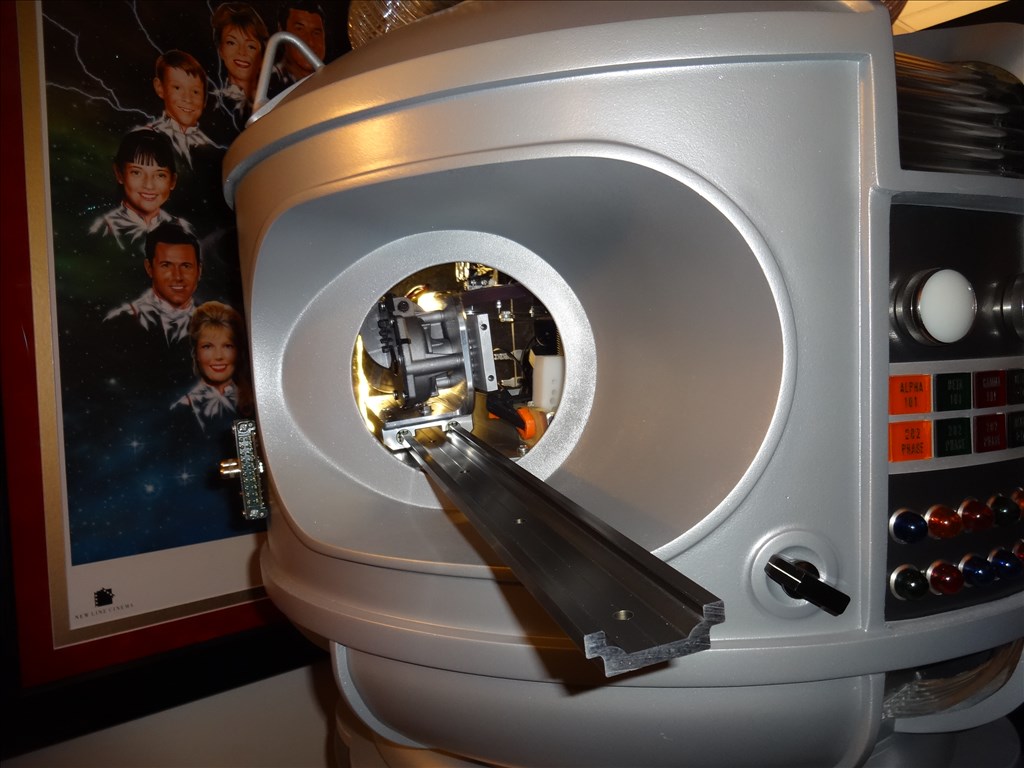
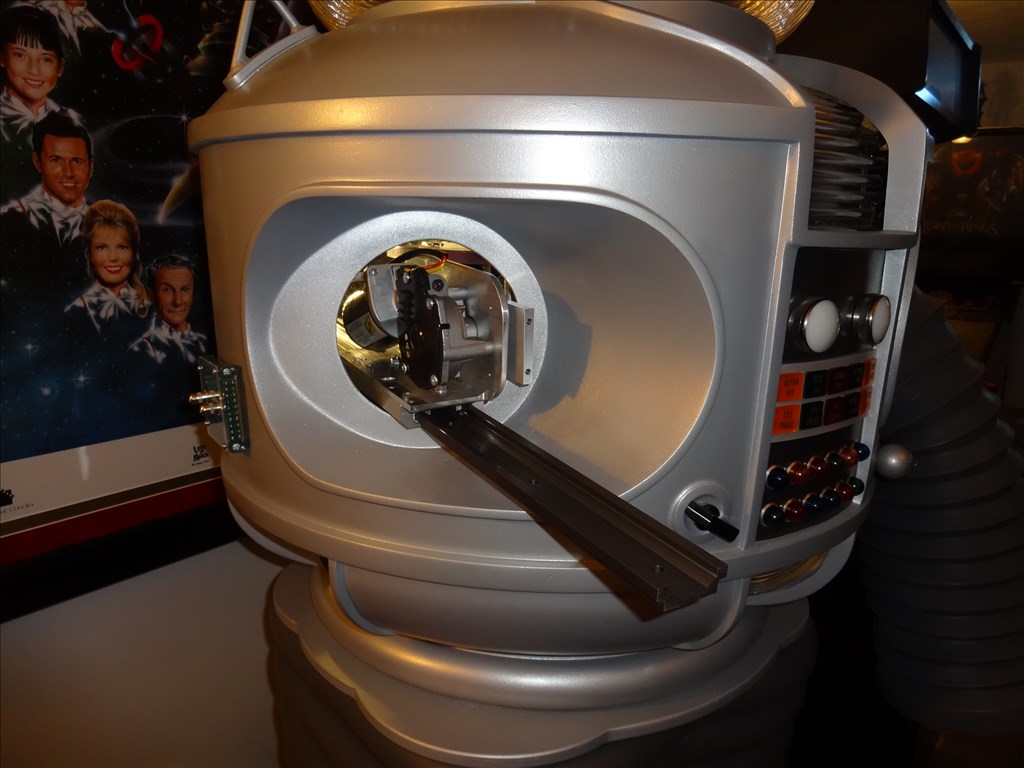


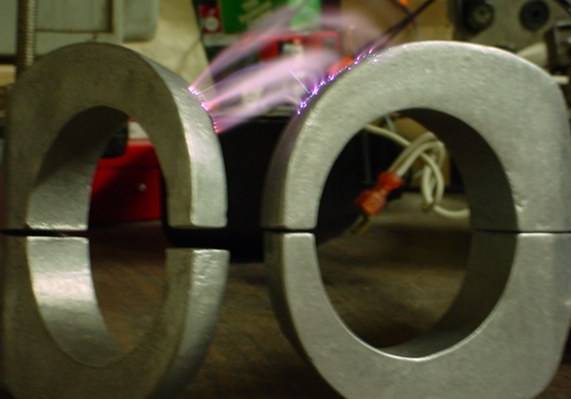
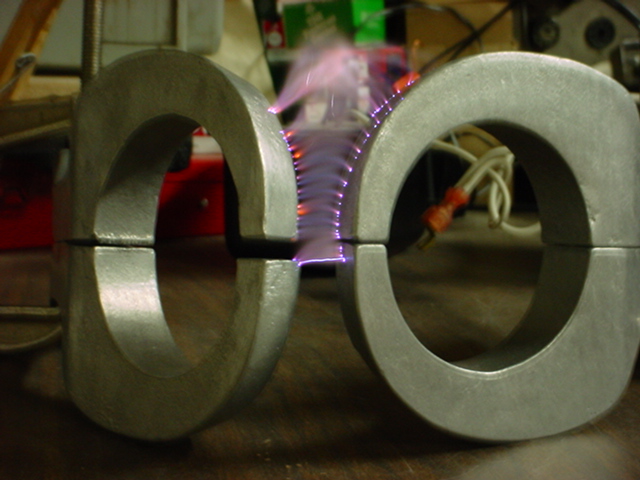
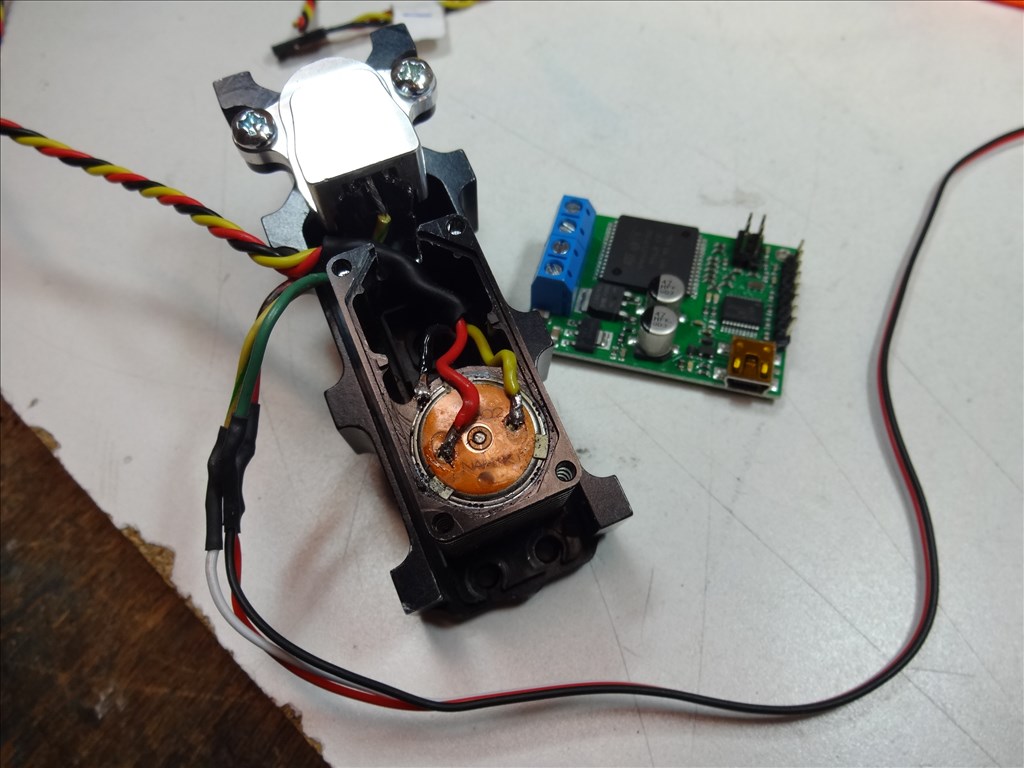
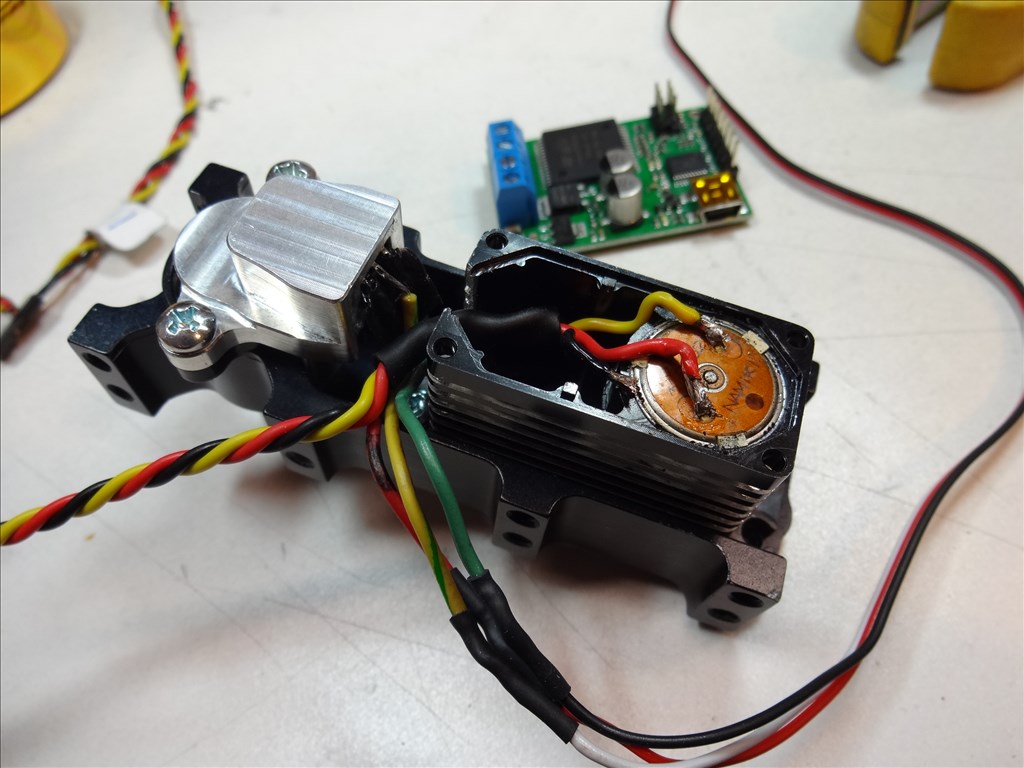
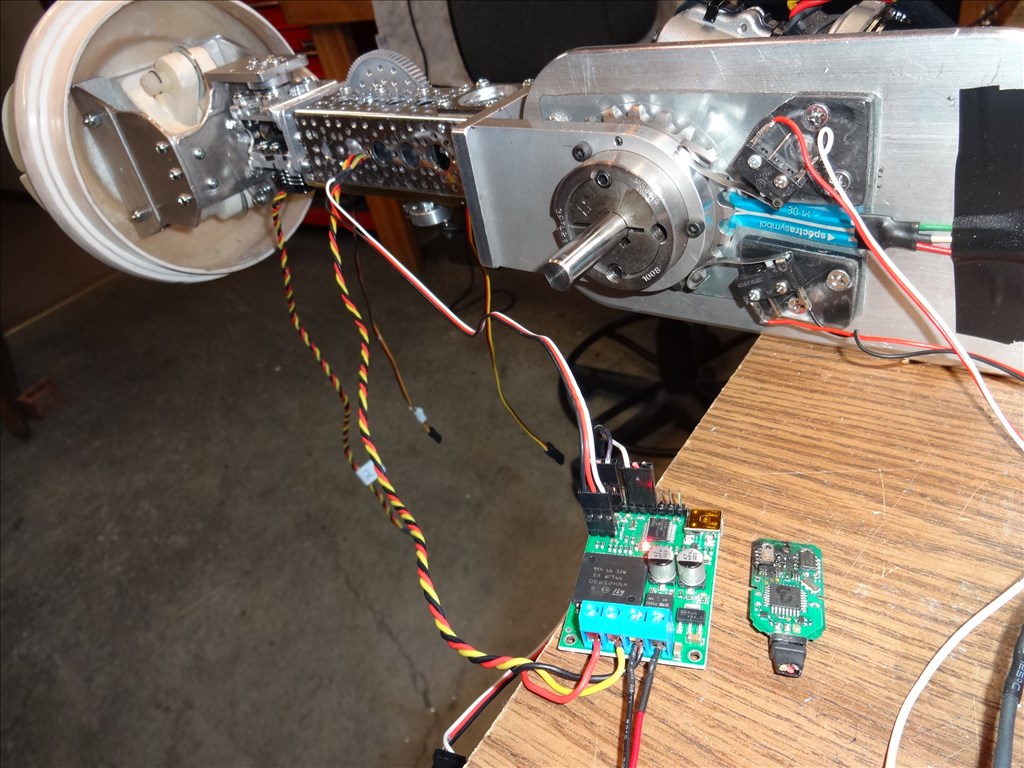
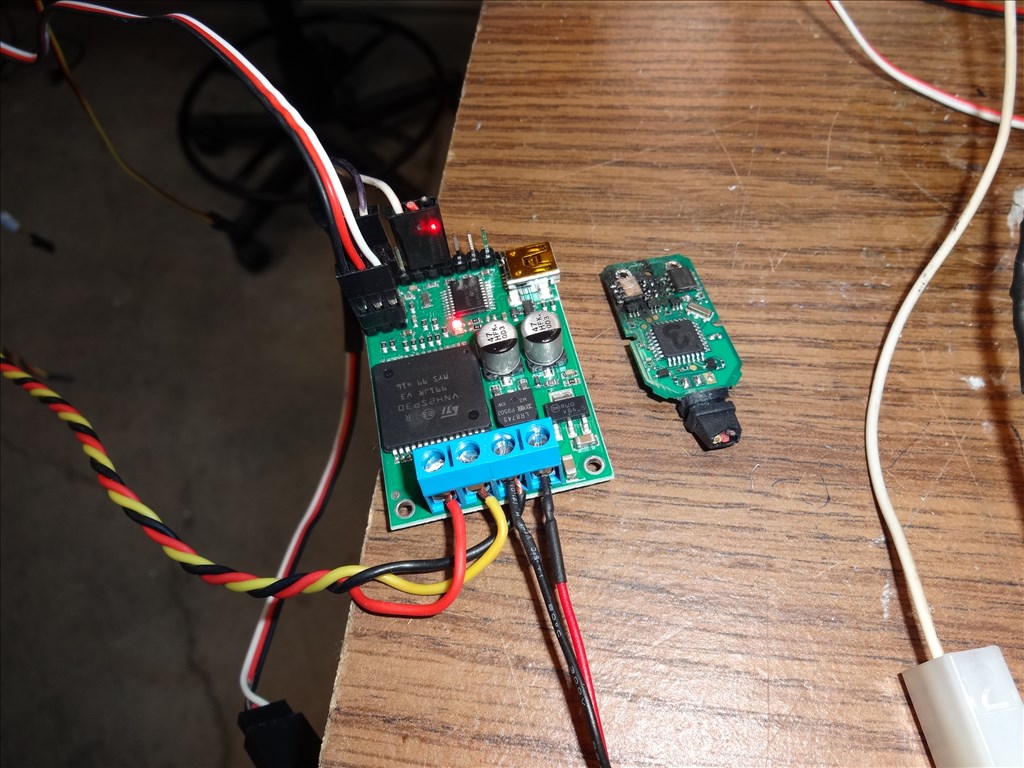
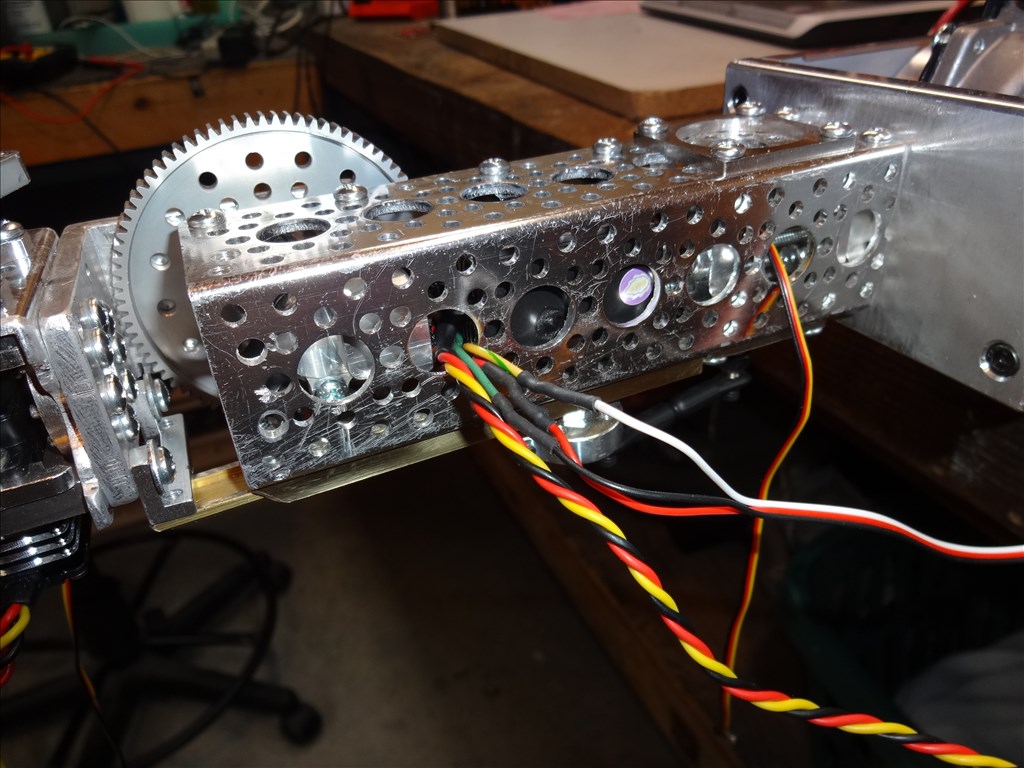

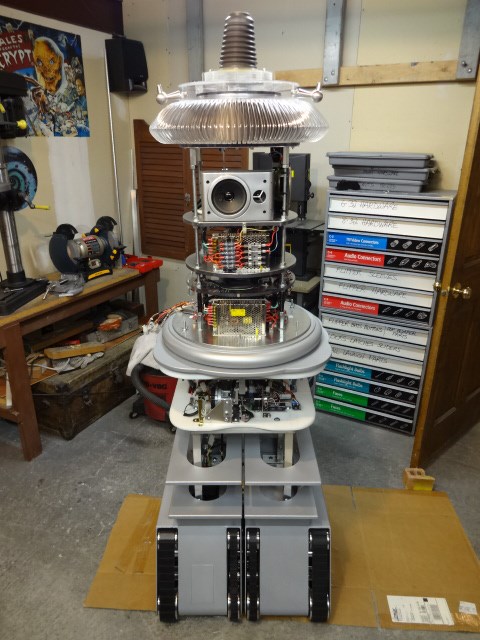

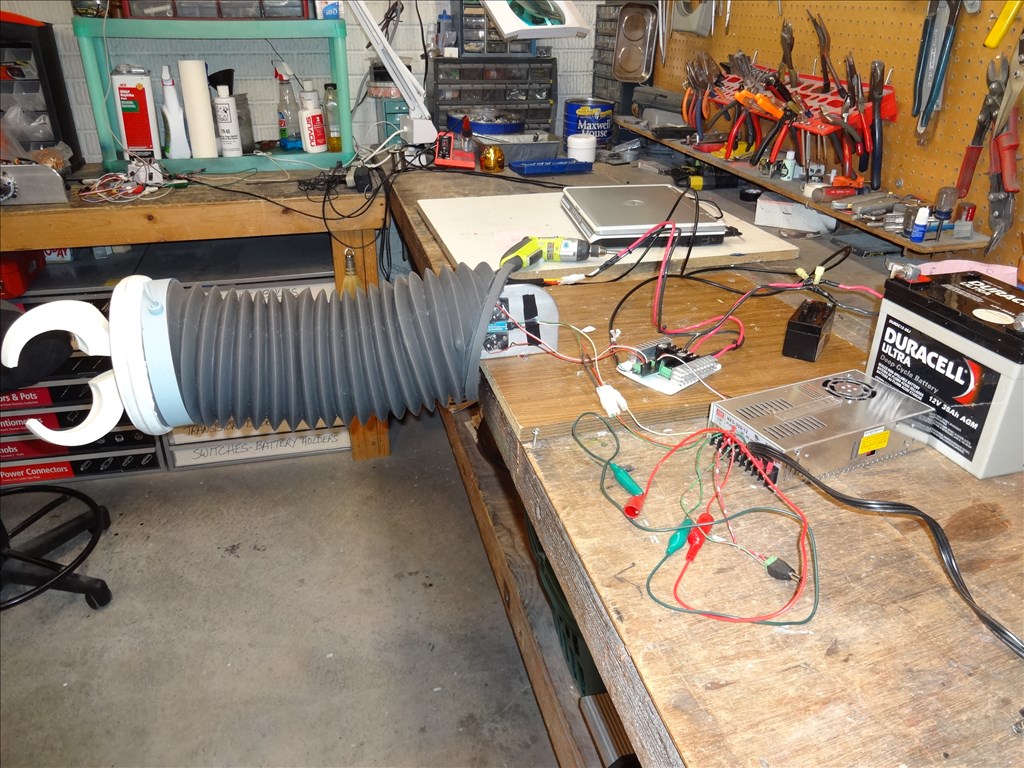
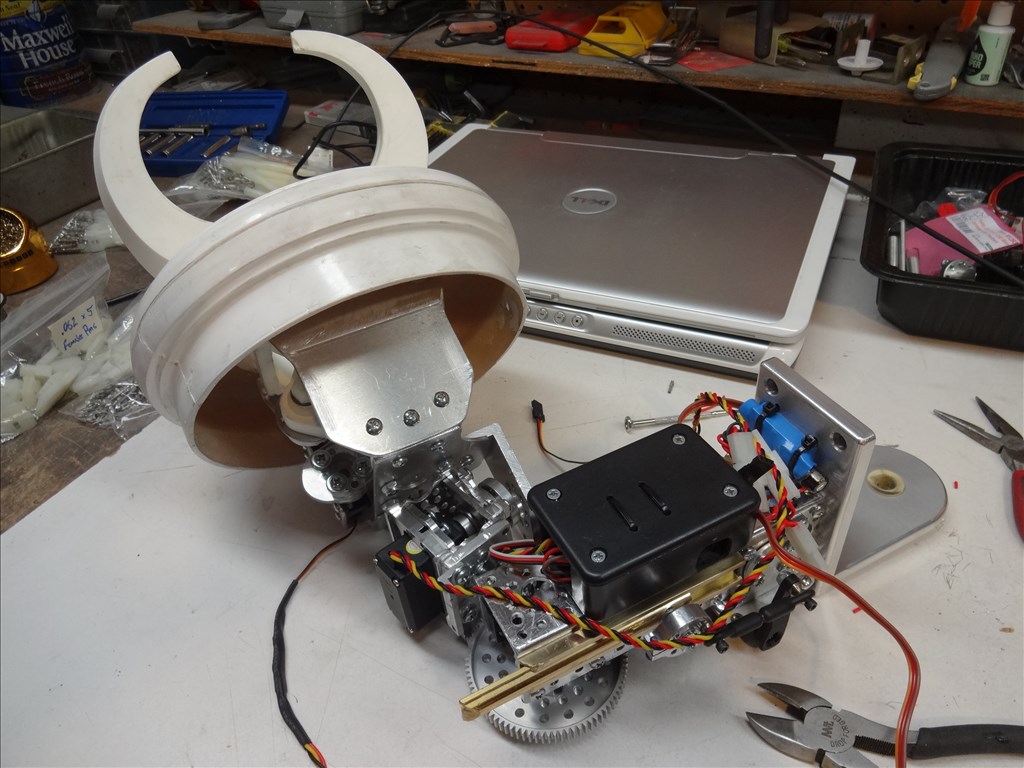
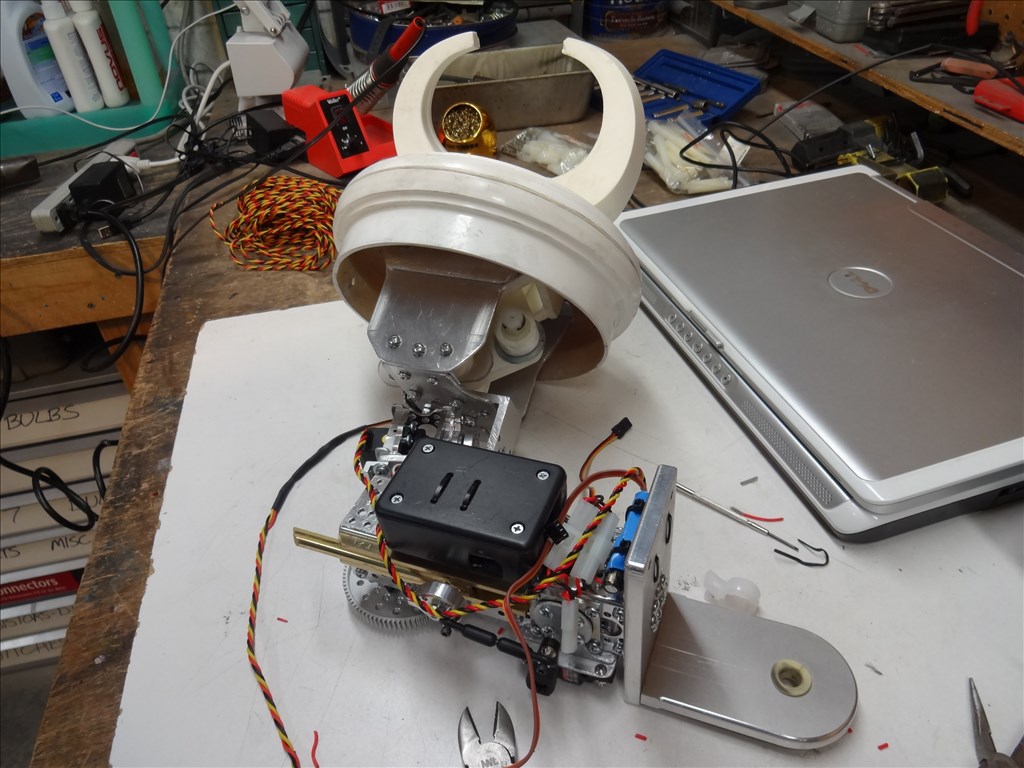






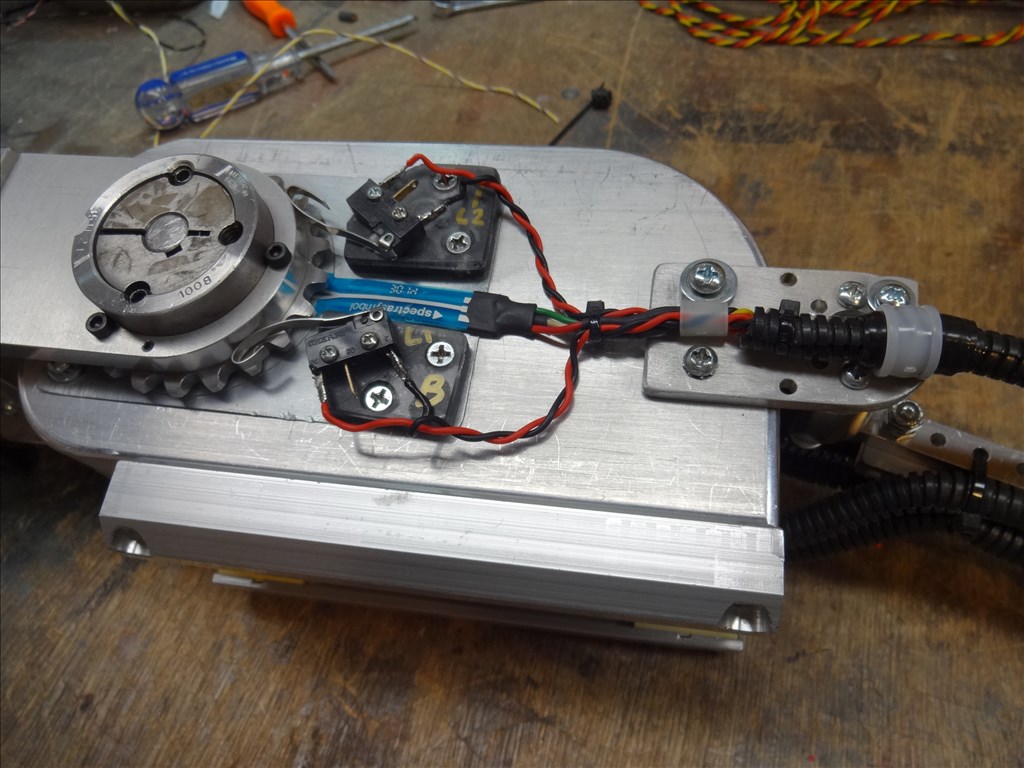
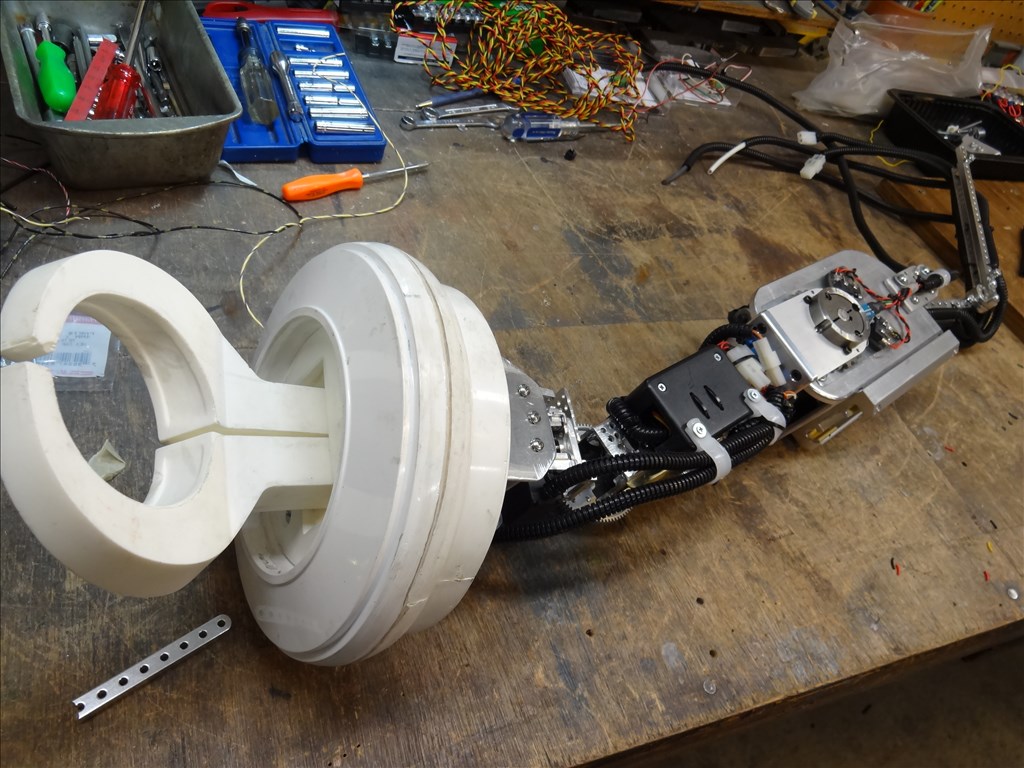
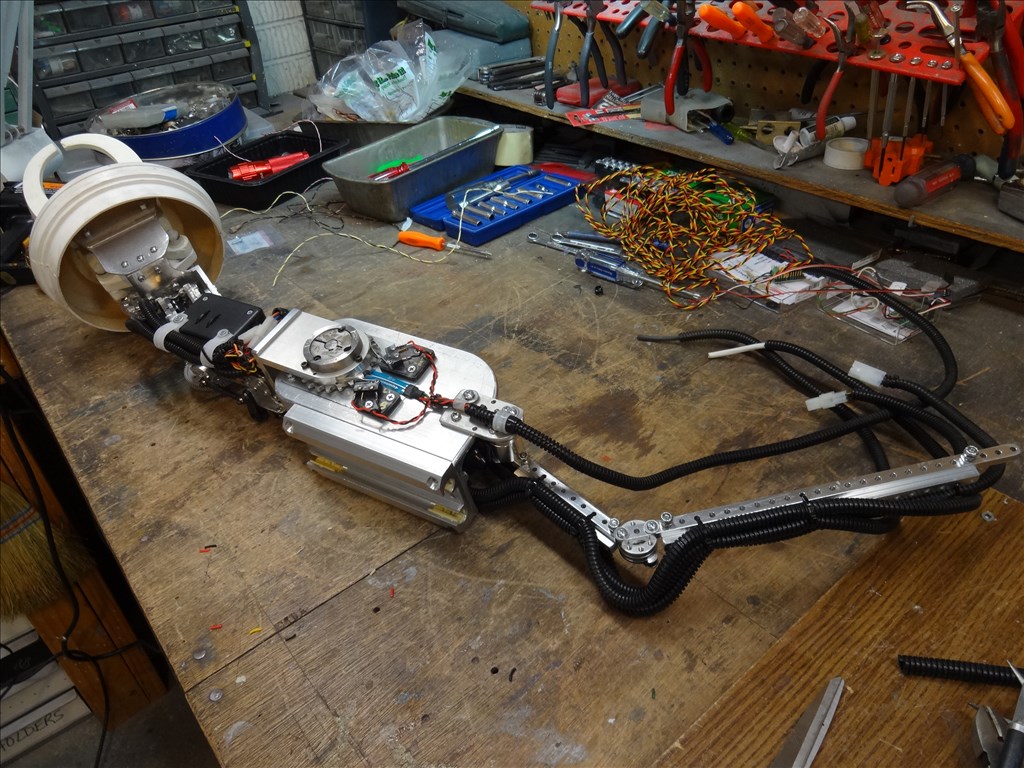
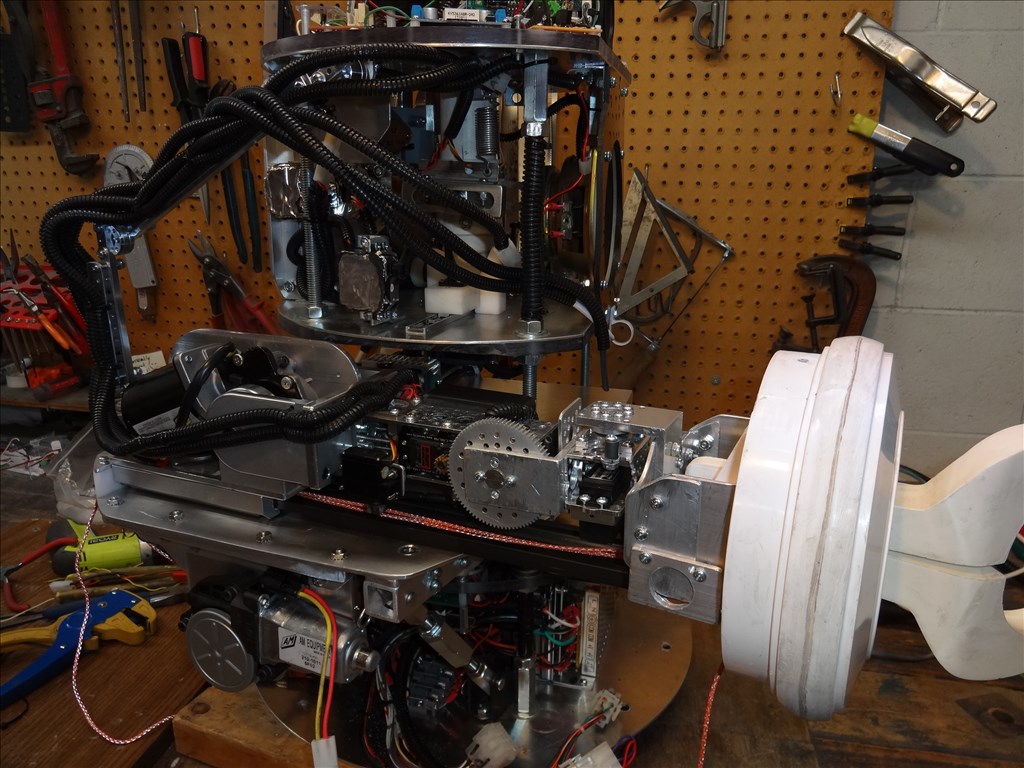
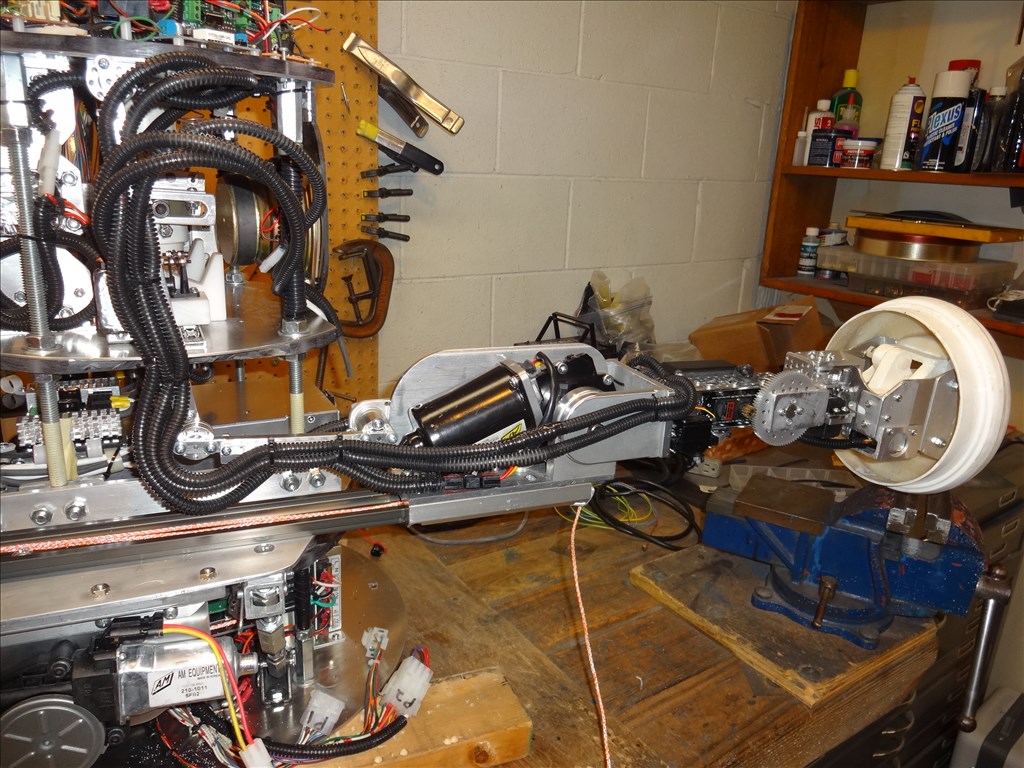
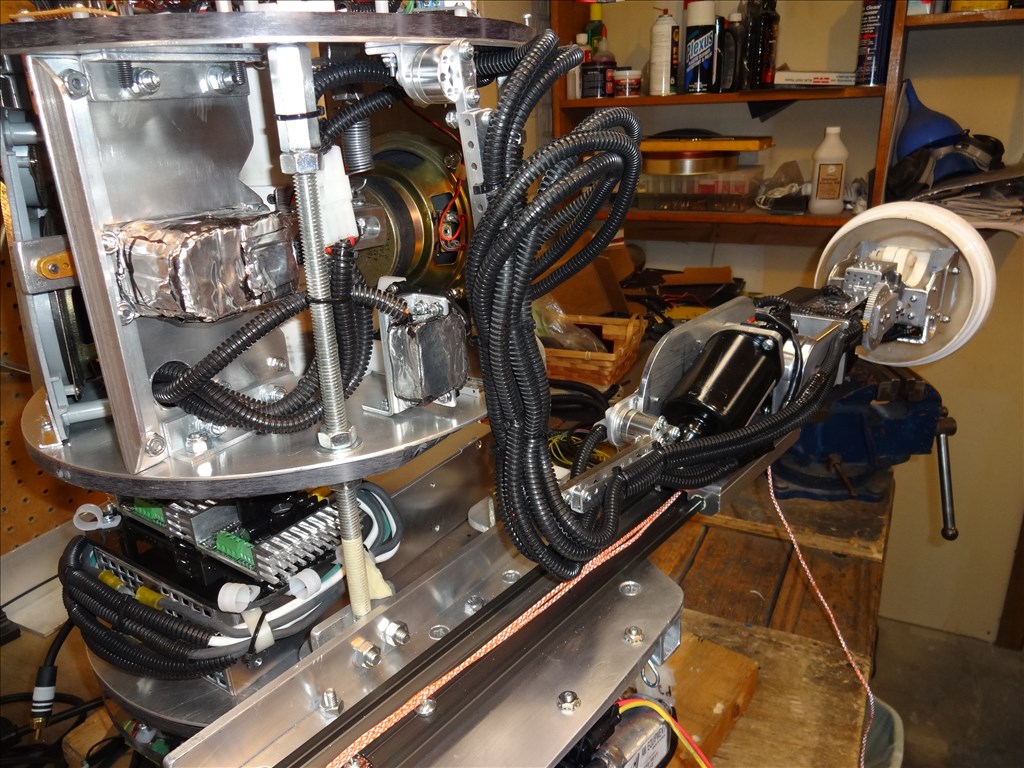
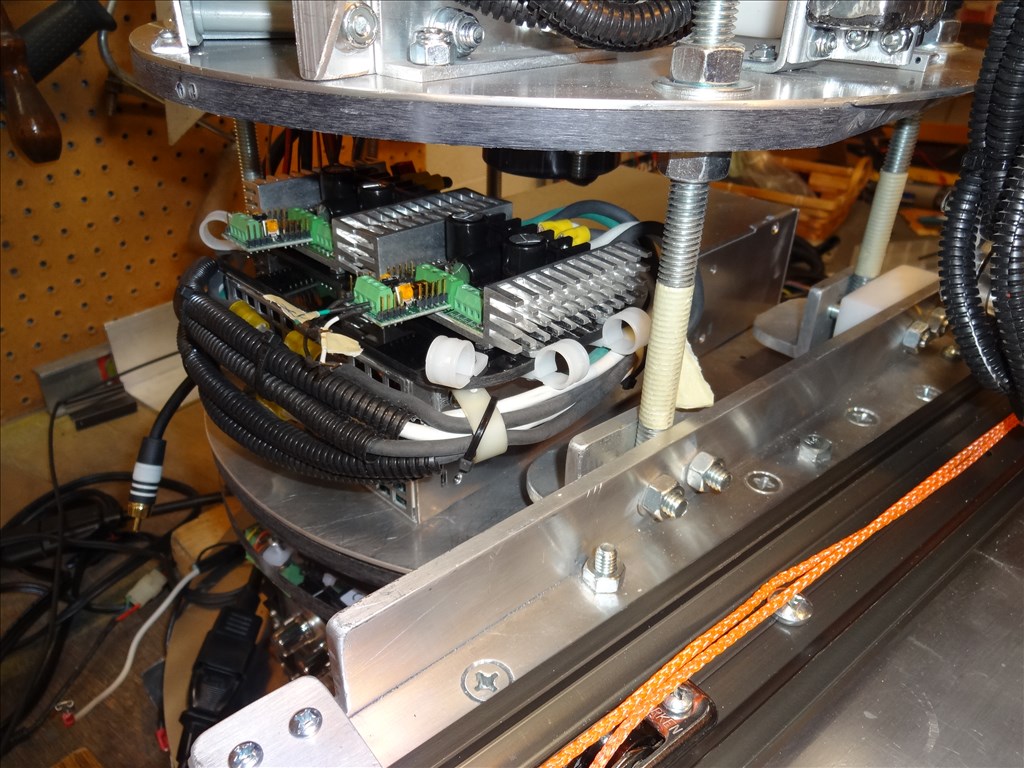
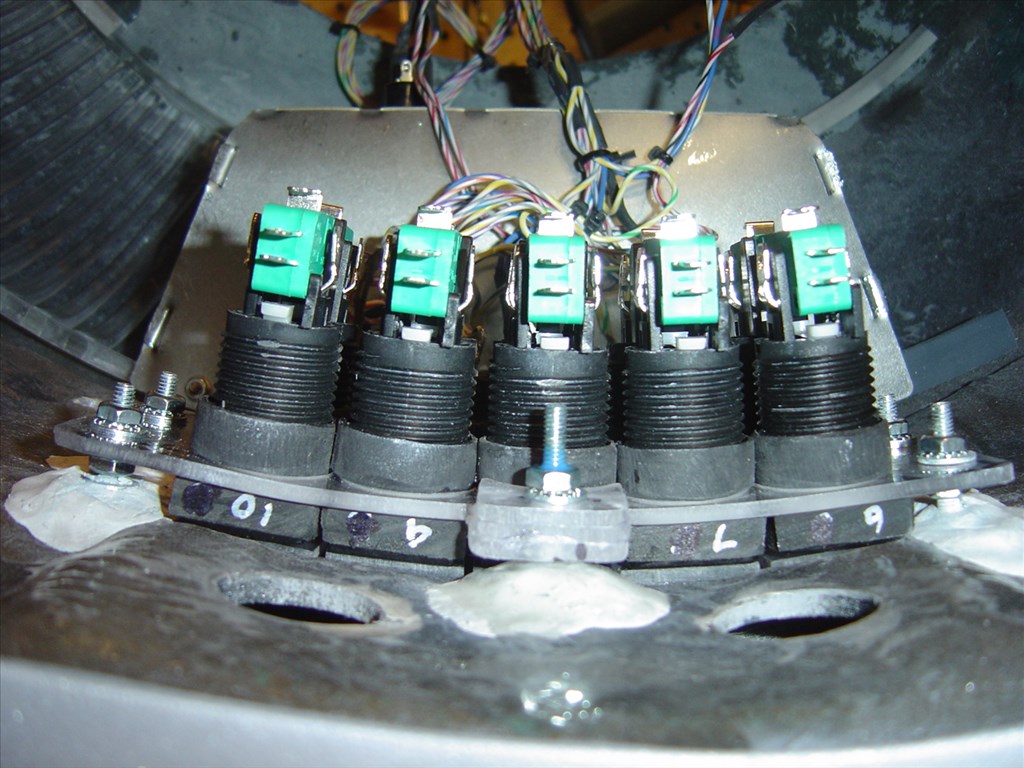
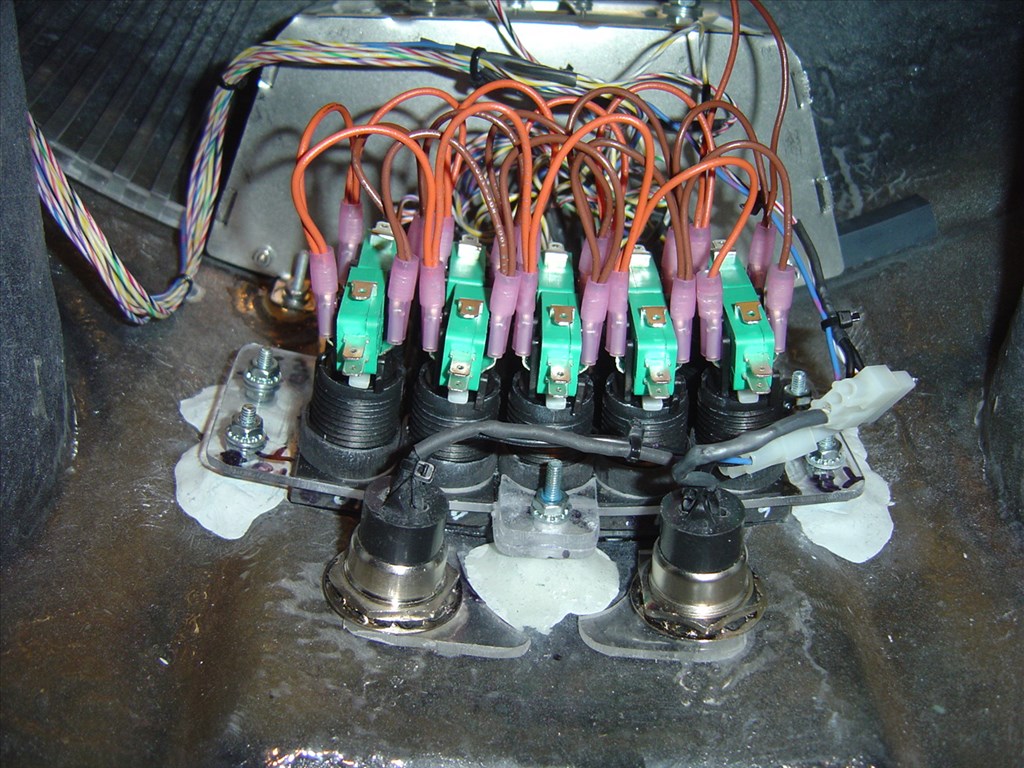
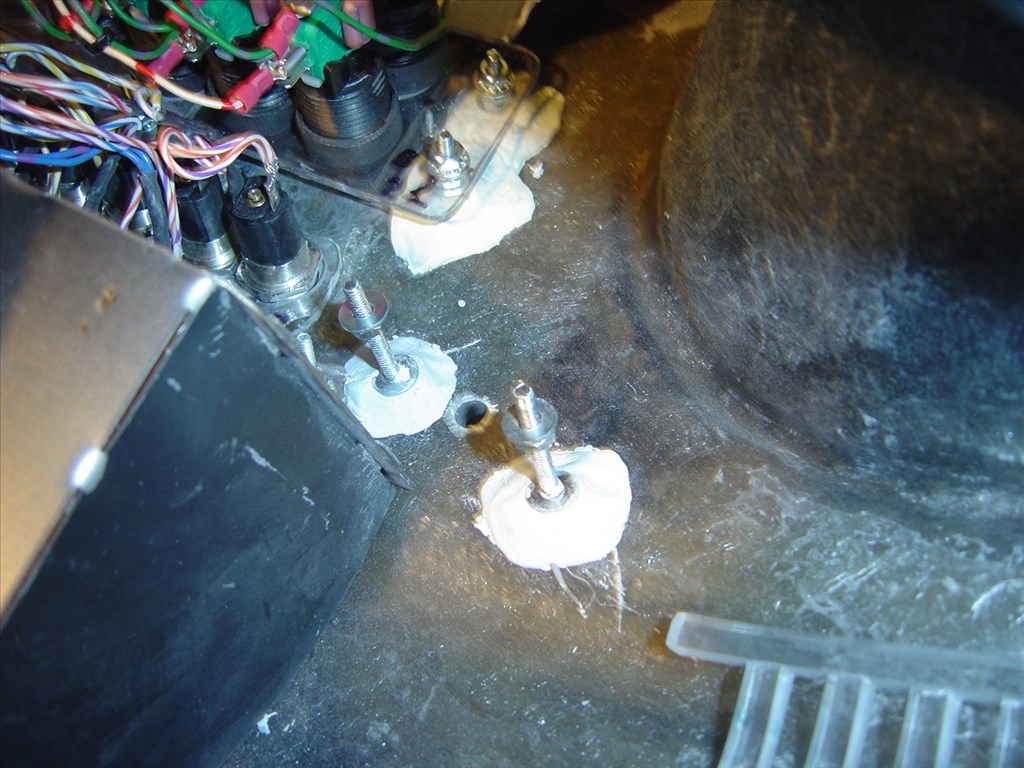
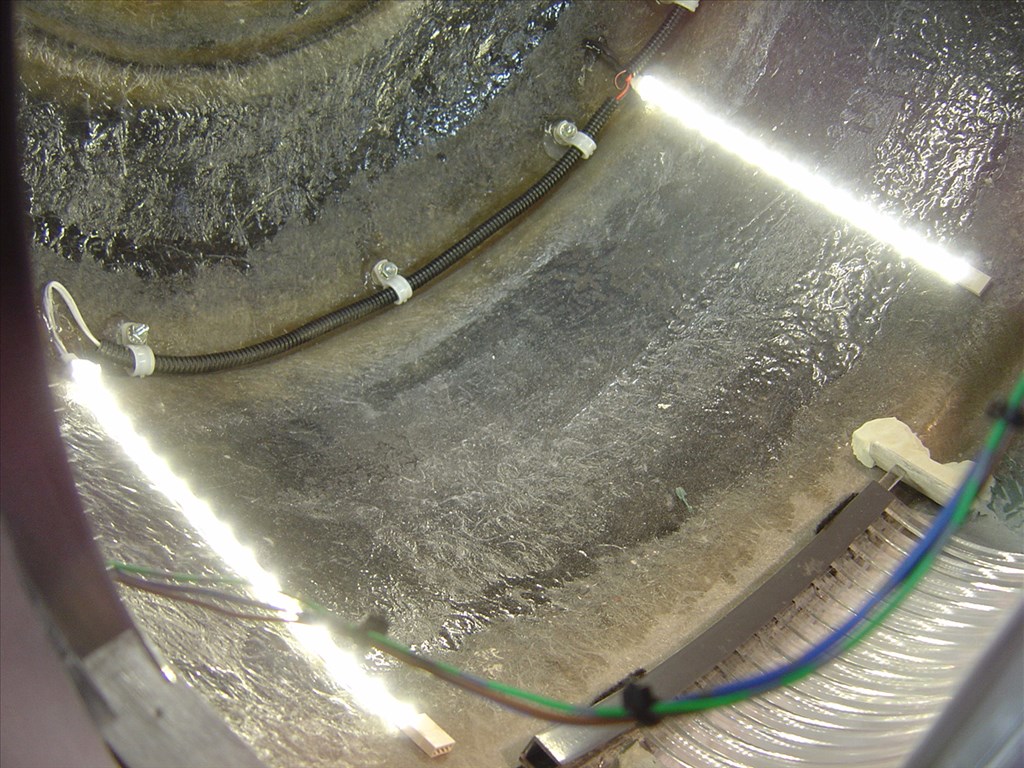
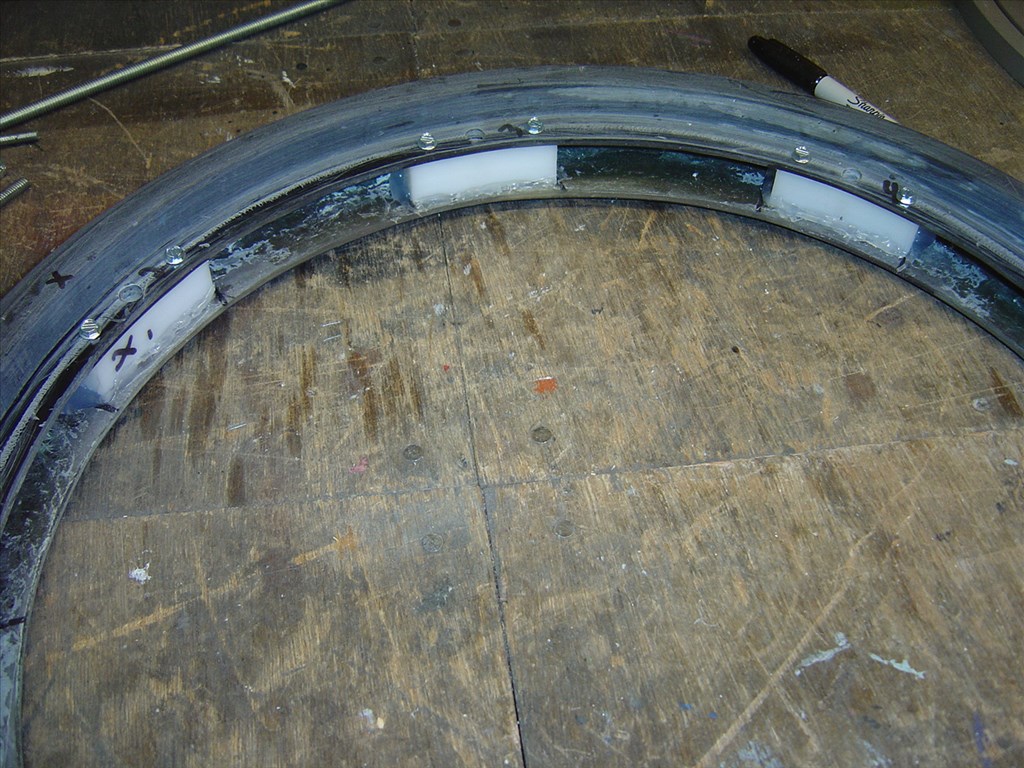
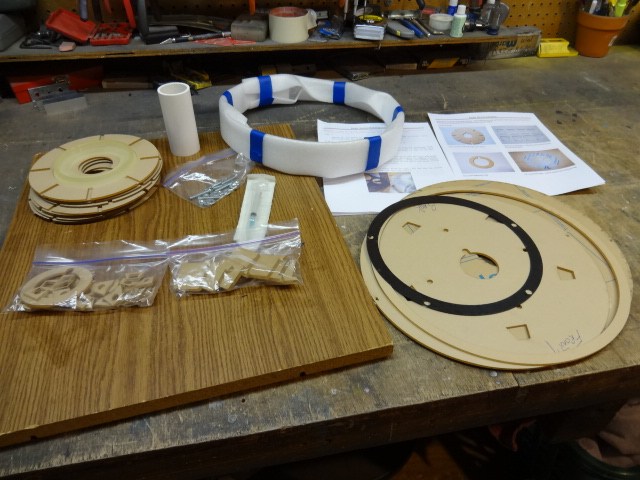
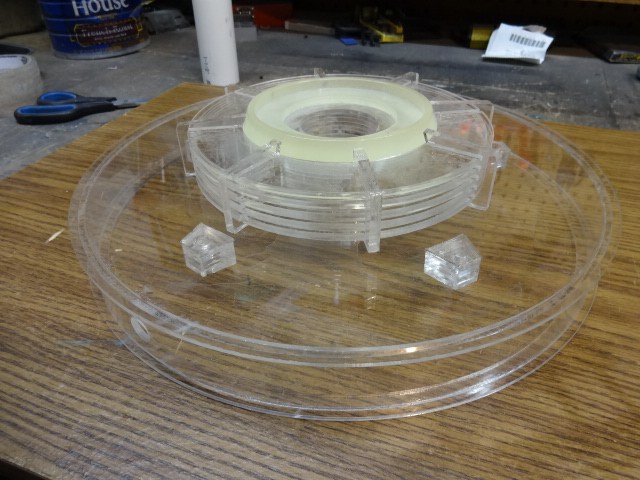
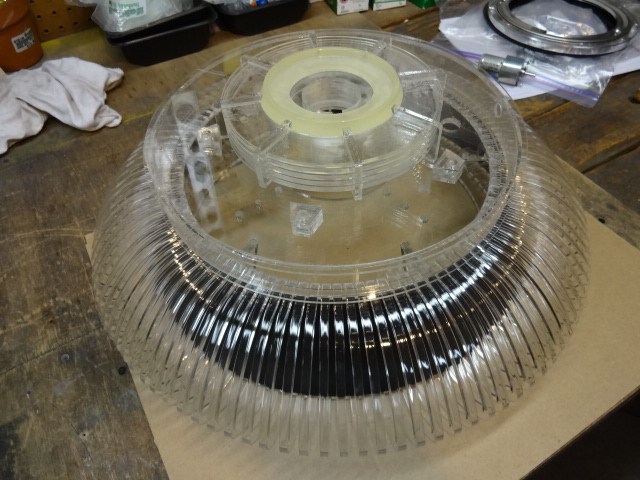
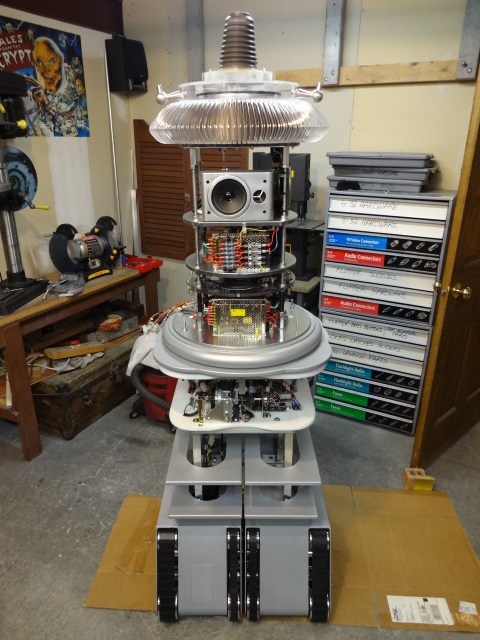
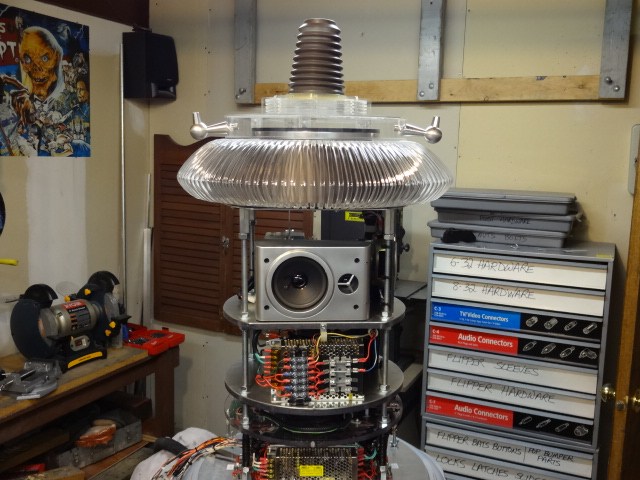
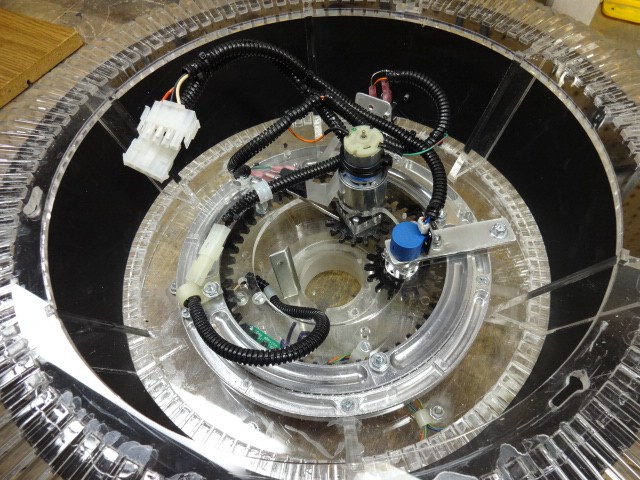
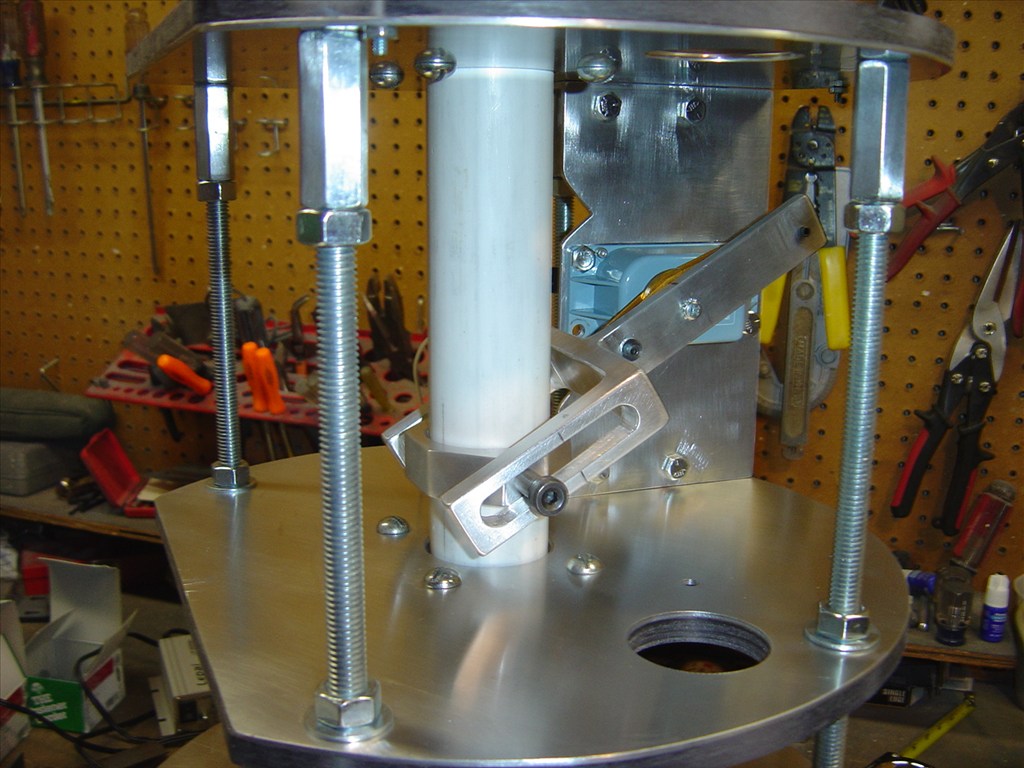
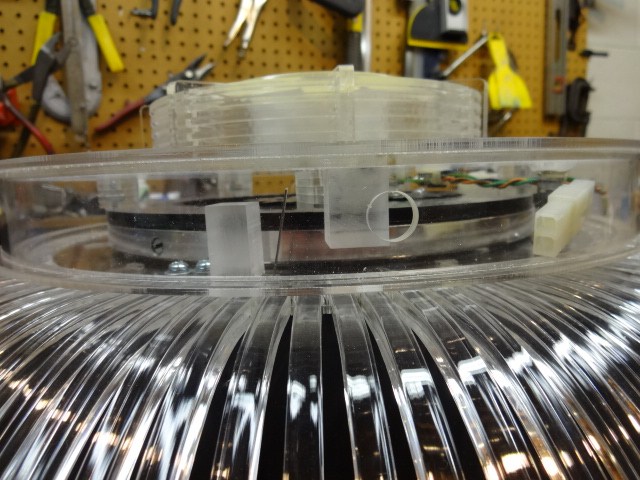
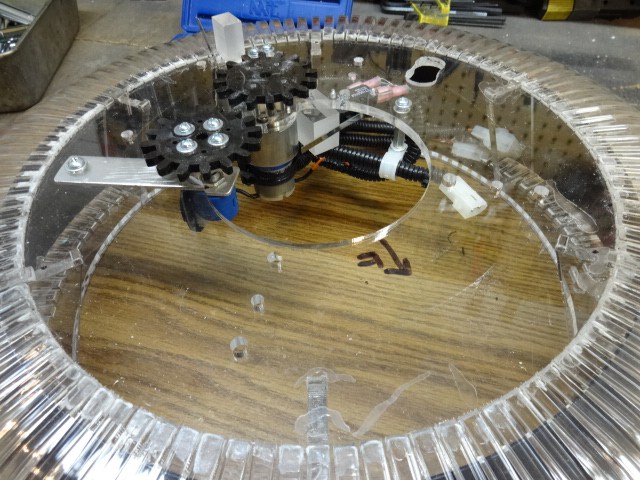
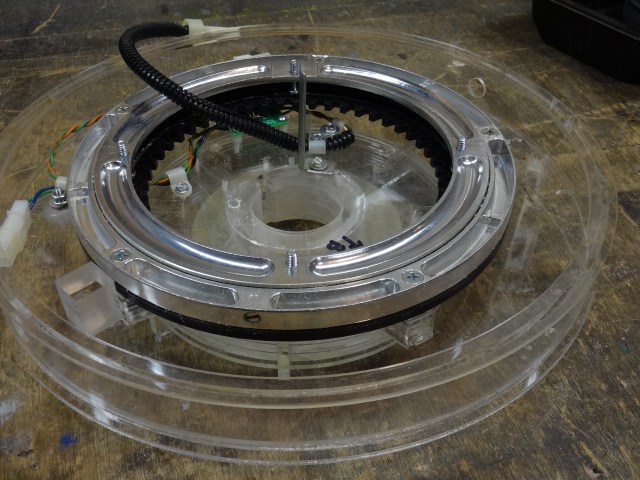
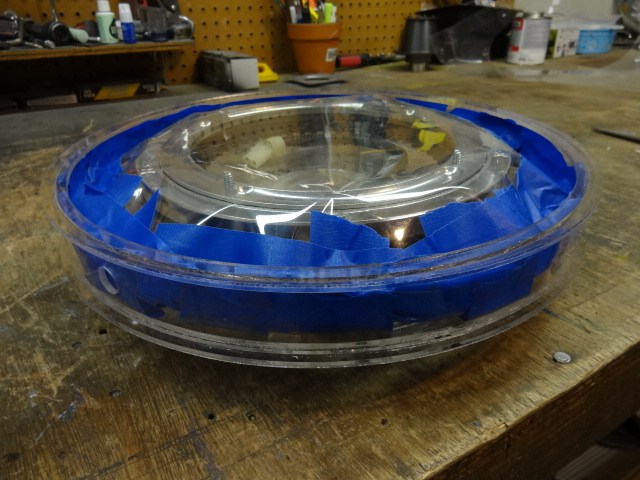
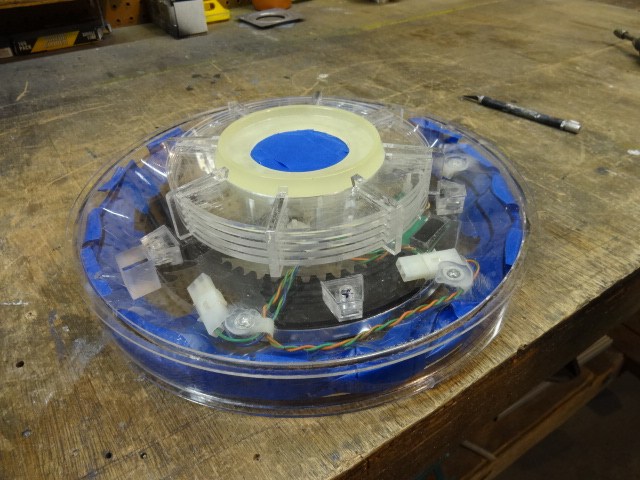
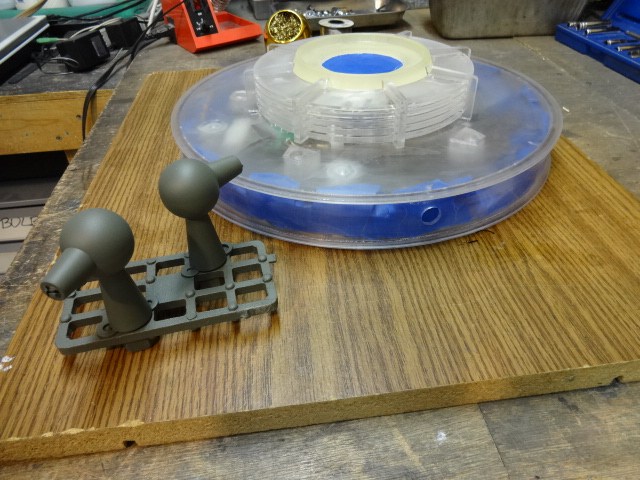
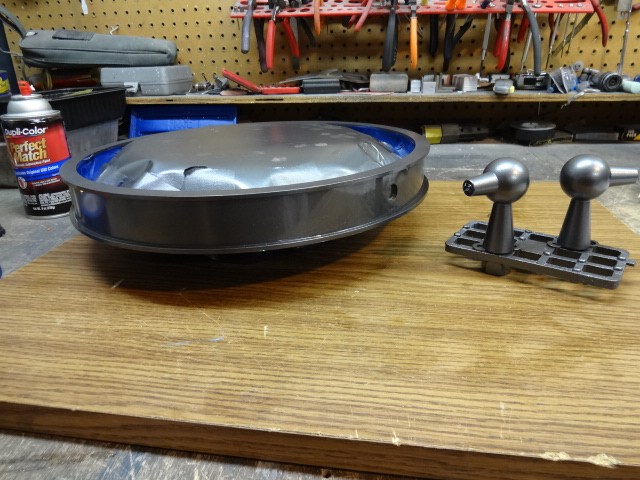
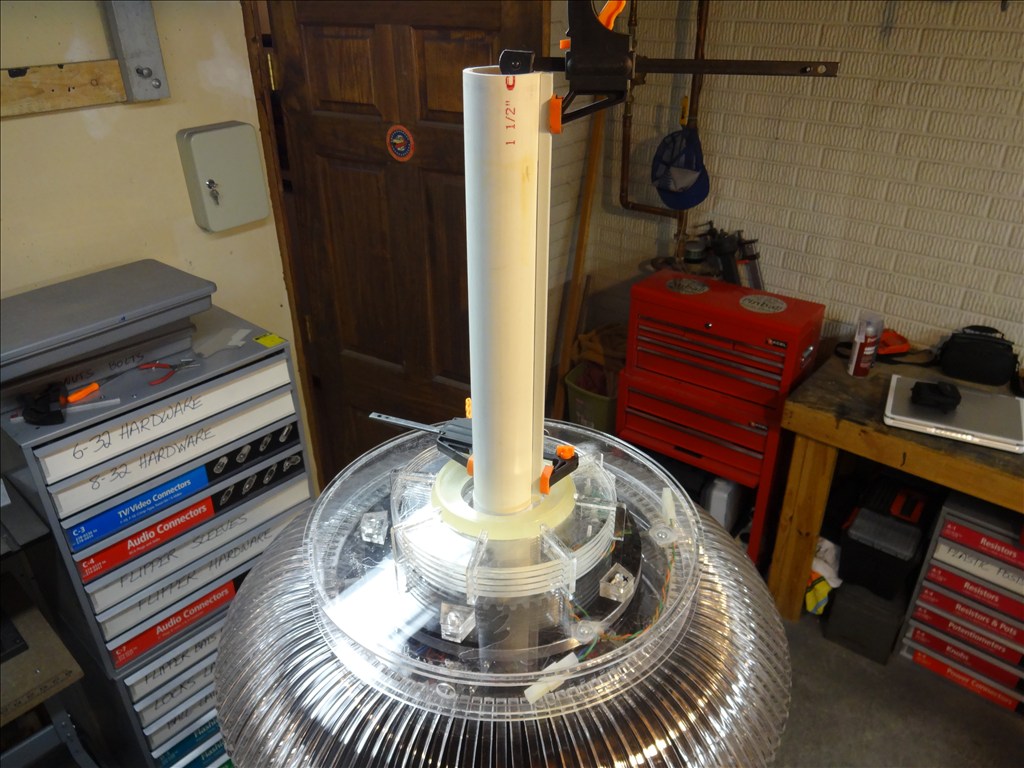
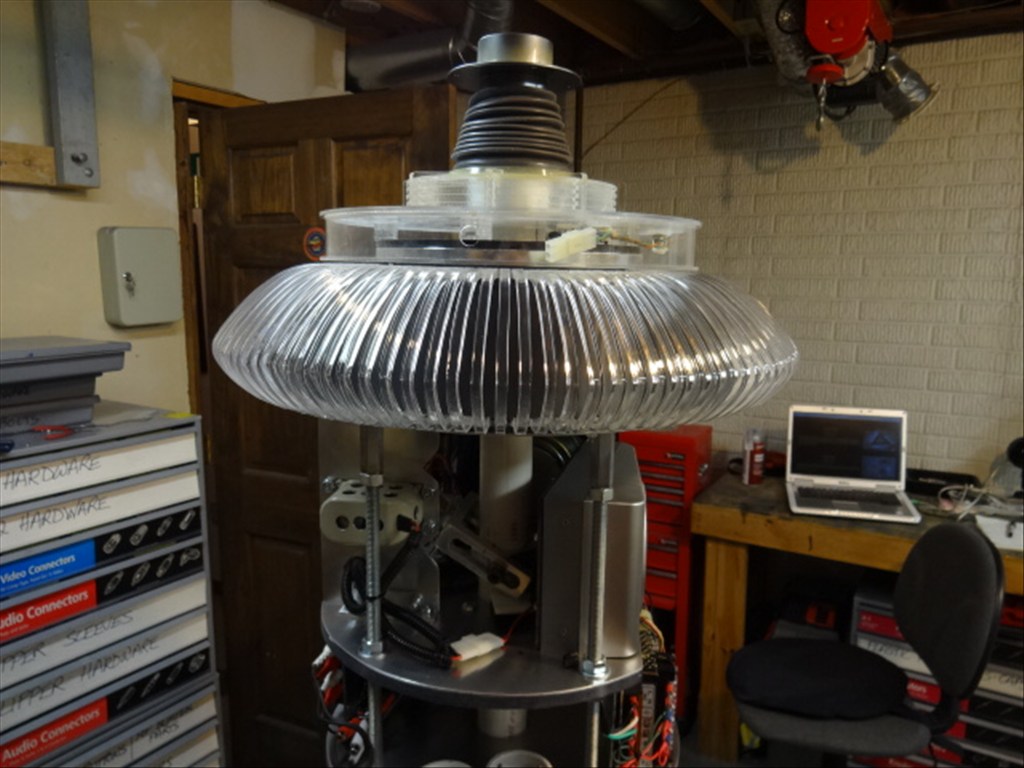

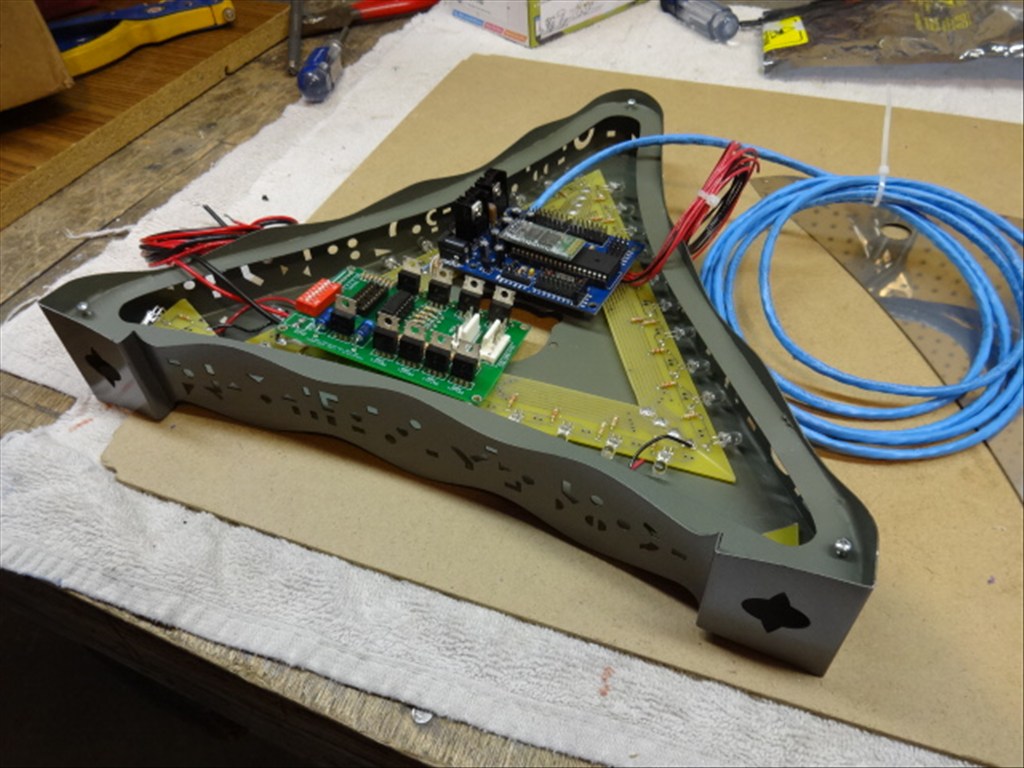
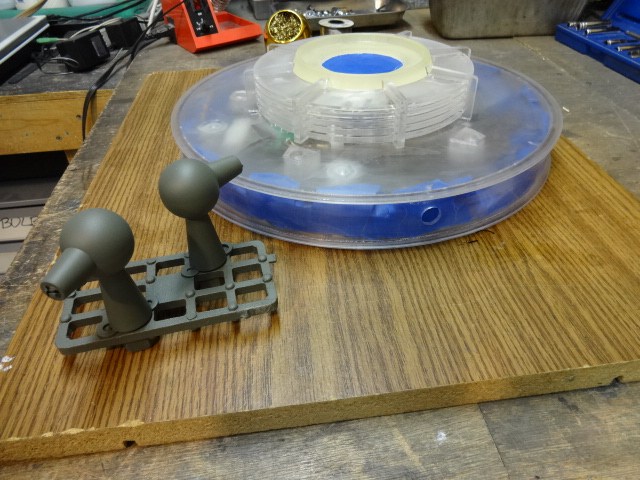
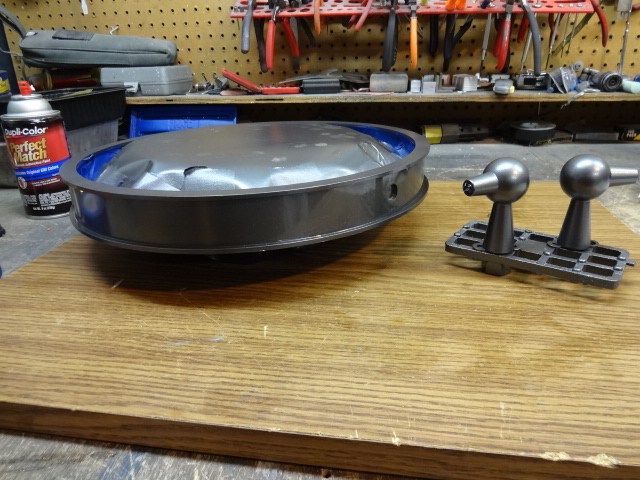
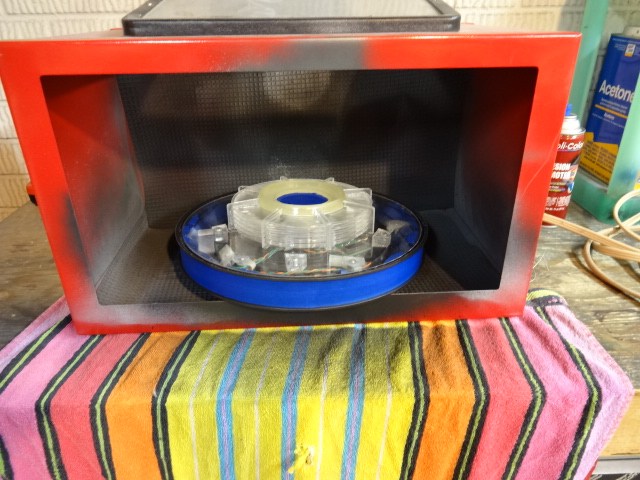
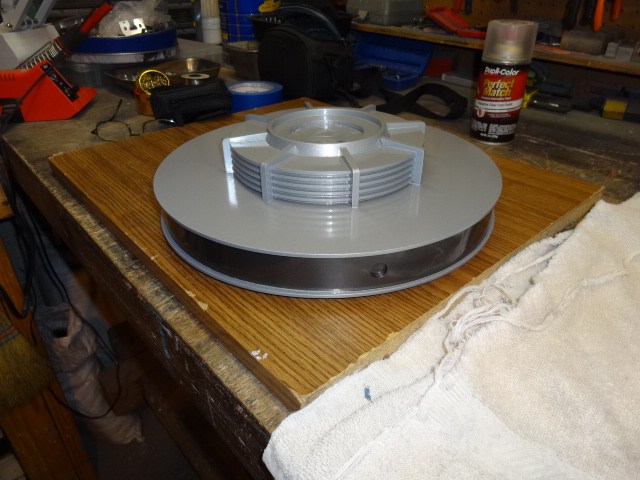
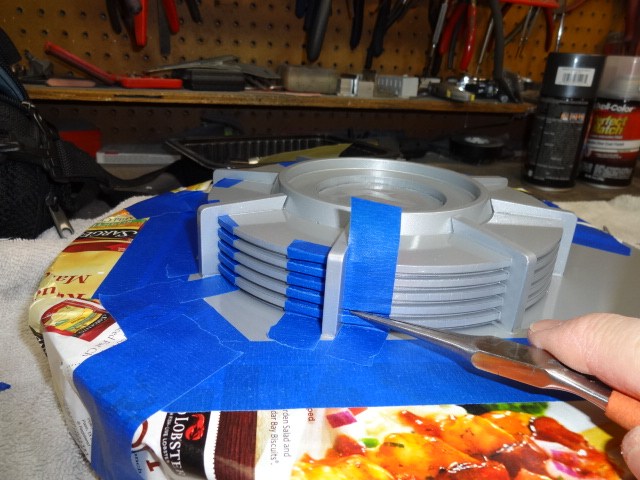
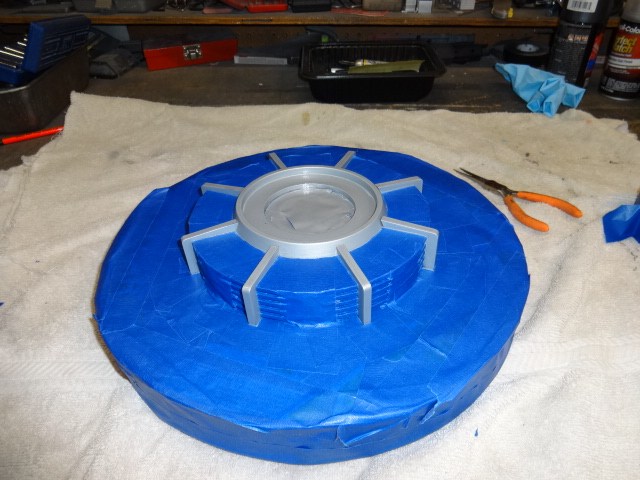
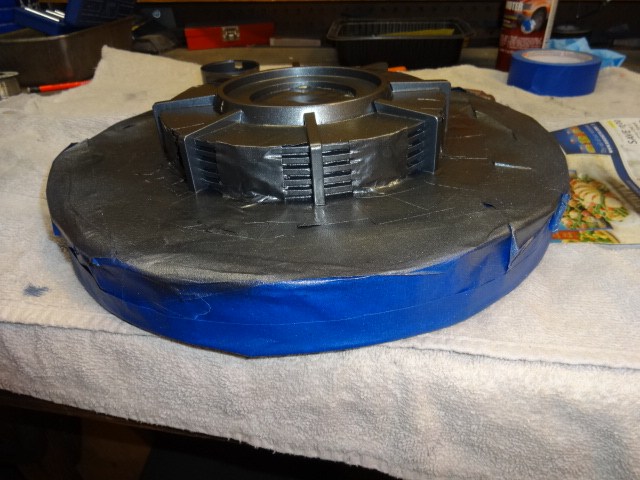
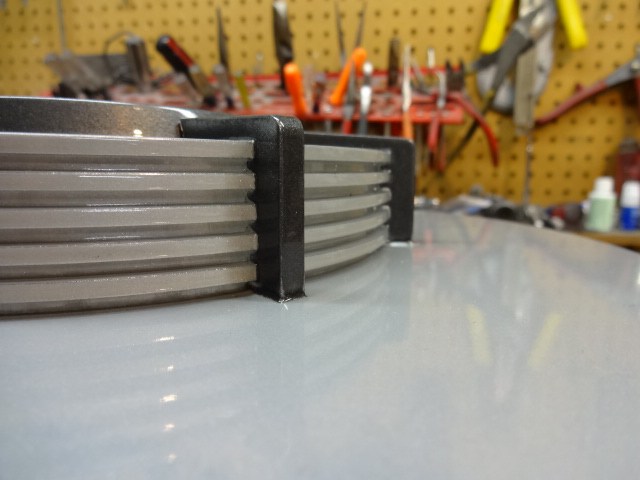
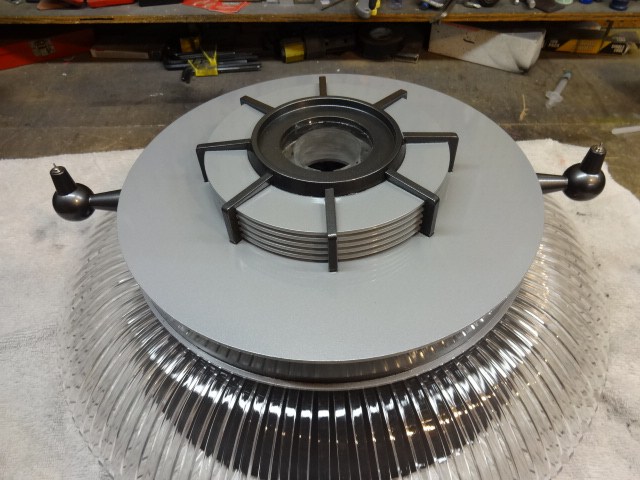
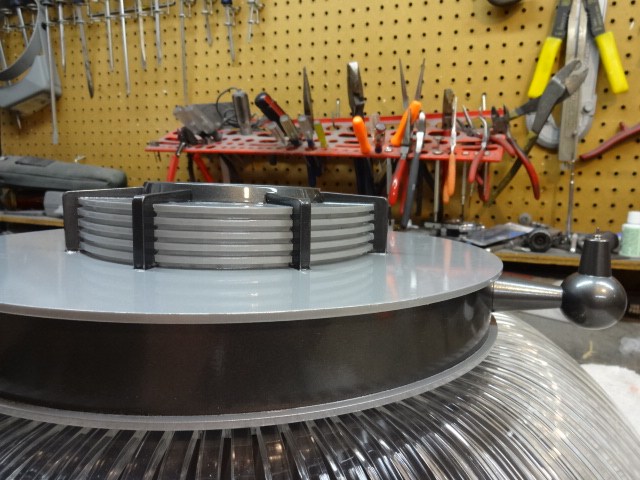
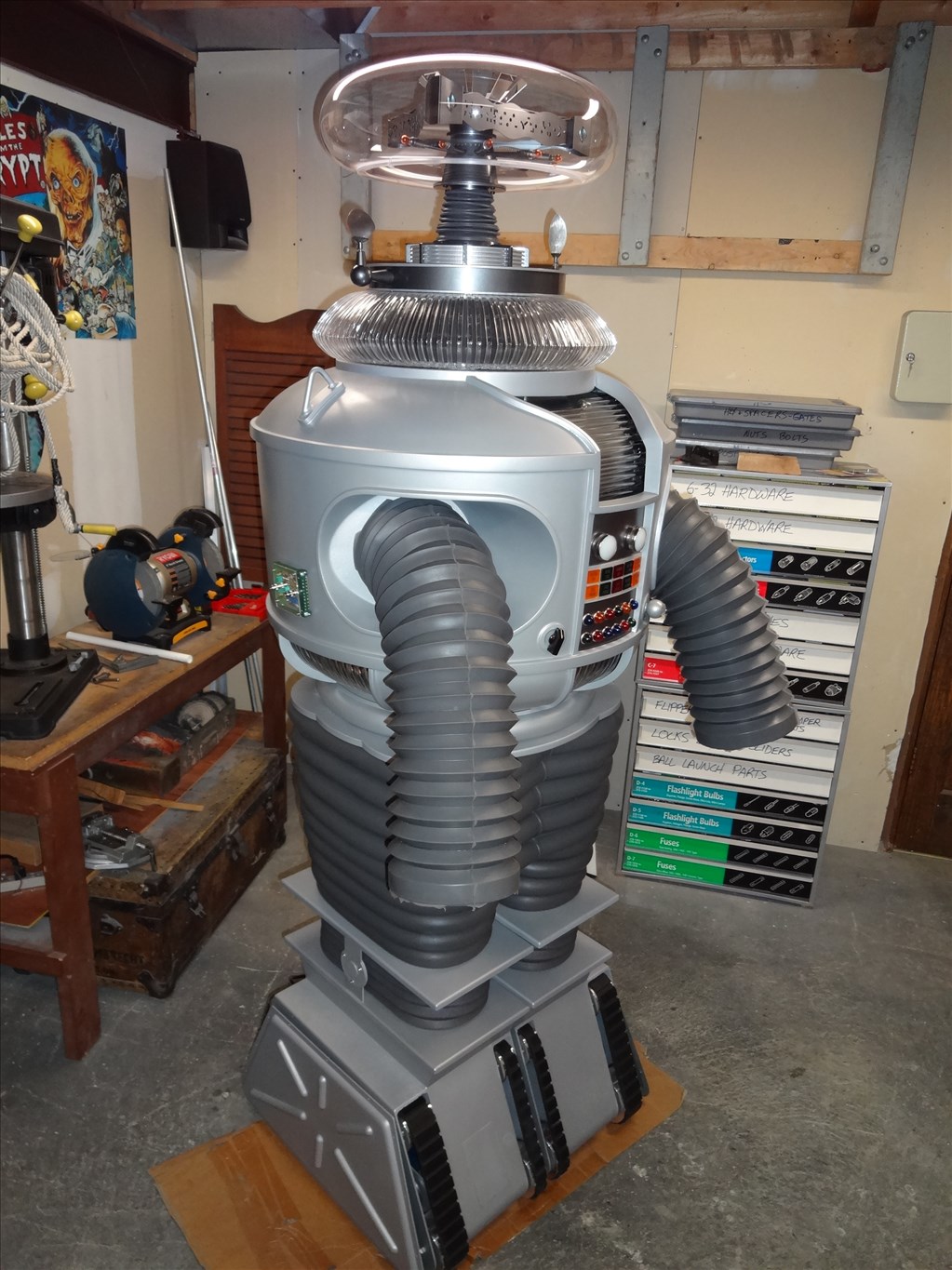

Ron, I think your spot on in regards to inertia, weight and speed. This could be a big part of the problem. The autotune of the kangaroo should take account of all that. However it obviously does a poor job of tuning a setup like mine with such an acametrical load so far away from the motor. The tune it gave me was unruly and unacceptable. I had to change most of the settings through DEScribe to get the arm to move and stop smoothly. You mention ramping. Kangaroo should be able to provide that also but with the settings as they are the ramping effect is poor. While not a jerky start or stop, the motor comes into the endpoints to hot. May simply sending a few slower speeds commands before the arm reaches the center point would be enough to hit a true center stopping point easier.
Just a thought. Thanks for the input.
Do you only get one "tune" available or can you call another? My thought is one feedback value (the 10k pot for rough) then a fine tune to go to home. Lots of programming though... and I really don't know how you could close the dead band other than using an encoder. That guy Newton is a pain in the Butt..
Maybe the factory can help?, though I doubt it. Keep at it. You are so close to perfection..
Ron R
I just had a thought based on WBS00001's statement. Could you add two limit switches, one for home up, one for home down? This would always define home. Not my favorite idea, but it could work.
Ron R
@Andy, No but it's a good idea. The tune is done once and fills in all the settings after it done. The "Tune" is done by a program stored on board the Kangaroo where is moves the motor through the range of speed, direction and load. This tune can be saved to your hard drive but it's just a file that can be manually reloaded if needed. You can have other tunes saved but when loaded the Roo needs to be rebooted for them to take effect.
The odd thing about the limit switch idea is that the voltage readings stay exact on the ends of the arch. Then when you reach the midpoint the values are different depending which way you approach it and where you start from.
I'm waiting on DE and Spectra Symbol to get back to me. We'll see what they have to say.
Sounds like the resolution in your dead band plus the pid is killing you. In one direction your driving, the other way in regeneration. Could you temporarily use a finer pot and limit the travel for a test? See if it mechanically repeats? Just stick it on the outside of the arm for a test?
Just a thought.
Ron R
@ Dave , I would try the 'Live Test' for that channel, in DeScribe. Then you can move the arm around different amounts and directions, it may reveal something that you dont see with the scripts.
Great idea Andy. Testing with a different pot would rule out a lot of things.
Purple, DEScribe is a great program. I know my vedio is very long but I show me useing it about 2/3rd way through. If you have time and interest have a look. You can clearly see all my settings on all the tabs and a good demo if how the motor is performing in a Live Test. Maybe you can see something I missed.
In re-reading the text, in thread #570 you say the motor "comes in hot". When you screwed with the PID loop did things get better or worst? Anticipation of the stop/ramping (pid) should have allowed the dead band to be smaller? (with no hunting). Am I helping or making you crazier... LOL...
Just thinking out loud, (my wife is wondering who I am talking to...)
Ron R
Insanity is a terrible thing to waste !